 Dixon complained that he was defrauded into leasing a Toyota Corolla, having been told that the lease would be tax-exempt because his co-lessee was a non-profit entity. The Fifth Circuit affirmed dismissal, finding that the Consumer Leasing Act does not confer standing unless all lessees are natural persons, which the non-profit was not. Dixon v. Toyota Motor Credit Corp., No. 14-30426 (July 23, 2015).
Dixon complained that he was defrauded into leasing a Toyota Corolla, having been told that the lease would be tax-exempt because his co-lessee was a non-profit entity. The Fifth Circuit affirmed dismissal, finding that the Consumer Leasing Act does not confer standing unless all lessees are natural persons, which the non-profit was not. Dixon v. Toyota Motor Credit Corp., No. 14-30426 (July 23, 2015).
 HUD suspended a mortgage lender from doing business with the government; after some litigation, HUD withdrew the suspensions. In the meantime, the lender had appealed the district court’s ruling that upheld the suspensions, and argued that it was not moot after the withdrawal. The Fifth Circuit disagreed, finding that the requested declaration that the suspension was unlawful is “no longer embedded in an actual controversy about the appellants’ legal rights.” The Court rejected arguments based on the “voluntary-cessation” and
HUD suspended a mortgage lender from doing business with the government; after some litigation, HUD withdrew the suspensions. In the meantime, the lender had appealed the district court’s ruling that upheld the suspensions, and argued that it was not moot after the withdrawal. The Fifth Circuit disagreed, finding that the requested declaration that the suspension was unlawful is “no longer embedded in an actual controversy about the appellants’ legal rights.” The Court rejected arguments based on the “voluntary-cessation” and  “collateral consequences,” emphasizing the specific posture of the lender’s situation with the government and the specifics of the regulatory environment. The Court also rejected an argument based on the past economic losses, noting that the lender was not seeking damages and could not under the applicable statute. Allied Home Mortgage Corp. v. U.S. Dep’t of Housing & Urban Devel., No. 14-20523 (July 22, 2015, unpublished).
“collateral consequences,” emphasizing the specific posture of the lender’s situation with the government and the specifics of the regulatory environment. The Court also rejected an argument based on the past economic losses, noting that the lender was not seeking damages and could not under the applicable statute. Allied Home Mortgage Corp. v. U.S. Dep’t of Housing & Urban Devel., No. 14-20523 (July 22, 2015, unpublished).
 Red Barn Motors sued its lender in a Louisiana district court. That court transferred the case to Indiana based on a forum selection clause. Three months later, the dealer sought mandamus relief from the Fifth Circuit, which denied its request. The Court noted that the case was no longer in the Circuit – meaning that the only possible remedy would be to ask the Indiana court to return the case, which would require a “very extreme case.” “Despite the potential availability” of this limited opportunity for mandamus relief, the Court found that the unexplained three-month delay in seeking review showed a lack of diligence that defeated the petition. In re: Red Barn Motors, Inc., No. 15-30067 (July 20, 2015).
Red Barn Motors sued its lender in a Louisiana district court. That court transferred the case to Indiana based on a forum selection clause. Three months later, the dealer sought mandamus relief from the Fifth Circuit, which denied its request. The Court noted that the case was no longer in the Circuit – meaning that the only possible remedy would be to ask the Indiana court to return the case, which would require a “very extreme case.” “Despite the potential availability” of this limited opportunity for mandamus relief, the Court found that the unexplained three-month delay in seeking review showed a lack of diligence that defeated the petition. In re: Red Barn Motors, Inc., No. 15-30067 (July 20, 2015).
 Plaintiff’s FCA claims about billing for aircraft parts were dismissed for failure to comply with the heightened pleading requirements of Fed. R. Civ. P. 9(b), in that:
Plaintiff’s FCA claims about billing for aircraft parts were dismissed for failure to comply with the heightened pleading requirements of Fed. R. Civ. P. 9(b), in that:
- it is not sufficient to argue that certain federal regulations must have been contained in the relevant contract, because by their terms, they do not automatically apply;
- neither nondisclosure of a part’s history, nor the subsequent failure of a plane containing that part, establishes that a false claim was made about it; and
- speculation about a company’s billing practices does not adequately establish when the company actually submitted the allegedly false claims.
United States ex rel Gage v. Davis S.R. Aviation, LLC, No. 14-50704 (July 14, 2015).
 The district court overseeing the settlement process for Deepwater Horizon claims ordered that the program could not have access to a certain set of “claim-specific information” before making an initial determination about a claim’s eligibility. BP sought to appeal this ruling as a collateral order. The Fifth Circuit dismissed for lack of jurisdiction, acknowledging that it had taken three earlier appeals about the settlement. The Court concluded that those appeals involved uniquely important issues about interpretation of the underlying agreement, and expressed concern about inviting significantly more interlocutory appeals given “the increasing frequency of court-supervised settlement agreements and consent decrees.” Lake Eugenie Land & Development v. BP Exploration & Production. No. 14-30823 (July 16, 2015).
The district court overseeing the settlement process for Deepwater Horizon claims ordered that the program could not have access to a certain set of “claim-specific information” before making an initial determination about a claim’s eligibility. BP sought to appeal this ruling as a collateral order. The Fifth Circuit dismissed for lack of jurisdiction, acknowledging that it had taken three earlier appeals about the settlement. The Court concluded that those appeals involved uniquely important issues about interpretation of the underlying agreement, and expressed concern about inviting significantly more interlocutory appeals given “the increasing frequency of court-supervised settlement agreements and consent decrees.” Lake Eugenie Land & Development v. BP Exploration & Production. No. 14-30823 (July 16, 2015).
 The plaintiffs/relators in United States ex rel Rigsby v. State Farm contended that, in the wake of Hurricane Katrina, State Farm improperly skewed its claims handling process in favor of finding flood damage, as “wind policy claims were paid out of the company’s own pocket while flood policy claims were paid with government funds.” They won at trial and the Fifth Circuit affirmed, finding that – notwithstanding earlier investigations – they were “paradigmatic . . . whistleblowing insiders” as to this specific claim who qualified as “original sources.” The Court went on to find sufficient evidence of falsity and scienter, and reversed a discovery ruling that would not have allowed the plaintiffs to investigate the facts of other potentially false claims. ” 794 F.3d 457 (5th Cir. 2015). The Supreme Court granted review and affirmed on an issue about violation of the FCA’s sealing requirement.
The plaintiffs/relators in United States ex rel Rigsby v. State Farm contended that, in the wake of Hurricane Katrina, State Farm improperly skewed its claims handling process in favor of finding flood damage, as “wind policy claims were paid out of the company’s own pocket while flood policy claims were paid with government funds.” They won at trial and the Fifth Circuit affirmed, finding that – notwithstanding earlier investigations – they were “paradigmatic . . . whistleblowing insiders” as to this specific claim who qualified as “original sources.” The Court went on to find sufficient evidence of falsity and scienter, and reversed a discovery ruling that would not have allowed the plaintiffs to investigate the facts of other potentially false claims. ” 794 F.3d 457 (5th Cir. 2015). The Supreme Court granted review and affirmed on an issue about violation of the FCA’s sealing requirement.
 1. As the Supreme Court term wound down, it affirmed the panel opinion in Baker Botts LLP v. ASARCO, holding that under the Bankruptcy Code: “Section §330(a)(1) does not permit bankruptcy courts to award fees to §327(a) professionals for defending fee applications.” No. 14–103 (U.S. June 15, 2015).
1. As the Supreme Court term wound down, it affirmed the panel opinion in Baker Botts LLP v. ASARCO, holding that under the Bankruptcy Code: “Section §330(a)(1) does not permit bankruptcy courts to award fees to §327(a) professionals for defending fee applications.” No. 14–103 (U.S. June 15, 2015).
2. The Supreme Court also granted review of Dolgencorp Inc. v. Mississippi Band of Choctaw Indians, 746 F.3d 167 (5th Cir. 2014), which addresses Indian tribal court jurisdiction over a tort claim.
Moving to dismiss? Drafting a complaint? Educating a colleague? Check out the newly-revised Twombly/Iqbal page on 600Camp, which includes the recent insights from Wooten v. McDonald Transit Associates, No. 13-11035 (June 7, 2015) (statutory employment claim), Owens v. Jastrow, No. 13-10928 (June 12, 2015) (scienter), and mortgage servicing cases.
 A contract dispute about the management of several vessels (among them, the M/V Maurader, right) led to a holding that a termination fee was void as a penalty. The contract required the boat owner to pay the management company “fifty percent of what [it] would have earned as a Management Fee had [the] Agreement not been so terminated,” and provided a formula for making that calculation, which in this case was $537,246.86. “The termination fee formula, however, makes no deductions to account for the fact that [management company] would have fewer expenses in the event of termination, and [it] has not quantified the expenses that would remain.” Comar Marine Co. v. Raider Marine Logistics LLC, No. 13-30156 (July 6, 2015).
A contract dispute about the management of several vessels (among them, the M/V Maurader, right) led to a holding that a termination fee was void as a penalty. The contract required the boat owner to pay the management company “fifty percent of what [it] would have earned as a Management Fee had [the] Agreement not been so terminated,” and provided a formula for making that calculation, which in this case was $537,246.86. “The termination fee formula, however, makes no deductions to account for the fact that [management company] would have fewer expenses in the event of termination, and [it] has not quantified the expenses that would remain.” Comar Marine Co. v. Raider Marine Logistics LLC, No. 13-30156 (July 6, 2015).
 Building on momentum after winning a challenge to the MERS business model, MERS succeeded in arguing that an earlier suit against Bank of America created a res judicata bar to a later suit against MERS because MERS and the bank were in privity. Warren v. MERS, No. 14-11102 (July 2, 2015, unpublished).
Building on momentum after winning a challenge to the MERS business model, MERS succeeded in arguing that an earlier suit against Bank of America created a res judicata bar to a later suit against MERS because MERS and the bank were in privity. Warren v. MERS, No. 14-11102 (July 2, 2015, unpublished).
At mid-year 2015, you can see here my recommendations for five cases from the last 3 months that are well worth a read.
 SMI alleged ten causes of action, claiming that the defendants “had stolen both technical and business trade secrets related to VaultWorks,” a software program that helps banks manage their cash inventories. Spear Marketing, Inc. v. Bancorpsouth Bank, No. 14-10753 (June 30, 2015). A series of unfortunate events for SMI ensued:
SMI alleged ten causes of action, claiming that the defendants “had stolen both technical and business trade secrets related to VaultWorks,” a software program that helps banks manage their cash inventories. Spear Marketing, Inc. v. Bancorpsouth Bank, No. 14-10753 (June 30, 2015). A series of unfortunate events for SMI ensued:
1. Defendants removed on the grounds of complete preemption under the copyright laws. Acknowledging a lack of Fifth Circuit precedent on the specific issues in this case, as well as a split among other circuits, the Court found that “the technical trade secrets found within VaultWorks fall within the subject matter of copyright,” and that SMI’s Texas Theft Liability Act claim — and to the extent it involved intangible assets, its conversion claim – – were preempted.
2. SMI’s post-removal amendment to drop the key language for preemption failed because “jurisdictional facts are determined at the time of removal, and consequently post-removal events do not affect that properly established jurisdiction.” The Court concluded that “SMI has conflated the question whether the initial removal was proper . . . with the question whether the district court should, in its discretion, remand the case when the federal claims disappear as the case progresses.”
3. The remaining claims — trade secret misappropriation, in particular — failed for a lack of proof that the defendants actually used the information in question.
 An earlier panel opinion found the Golf Channel liable for $5.9 million under the Texas Uniform Fraudulent Transfer Act (“TUFTA”), even though it delivered airtime with that market value, because the purchaser was Allen Stanford while running a Ponzi scheme. Accordingly, the airtime had no value to creditors, despite its market value. On rehearing, the Fifth Circuit vacated its initial opinion and certified the controlling issue to the Texas Supreme
An earlier panel opinion found the Golf Channel liable for $5.9 million under the Texas Uniform Fraudulent Transfer Act (“TUFTA”), even though it delivered airtime with that market value, because the purchaser was Allen Stanford while running a Ponzi scheme. Accordingly, the airtime had no value to creditors, despite its market value. On rehearing, the Fifth Circuit vacated its initial opinion and certified the controlling issue to the Texas Supreme  Court: “Considering the definition of ‘value’ in section 24.004(a) of the Texas Business and Commerce Code, the definition of ‘reasonably equivalent value’ in section 24.004(d) of the Texas Business and Commerce Code, and the comment in the Uniform Fraudulent Transfer Act stating that ‘value’ is measured ‘from a creditor’s viewpoint,’ what showing of ‘value’ under TUFTA is sufficient for a transferee to prove the elements of the affirmative defense under section 24.009(a) of the Texas Business and Commerce Code?” Janvey v. The Golf Channel, No. 13-11305 (June 30, 2015).
Court: “Considering the definition of ‘value’ in section 24.004(a) of the Texas Business and Commerce Code, the definition of ‘reasonably equivalent value’ in section 24.004(d) of the Texas Business and Commerce Code, and the comment in the Uniform Fraudulent Transfer Act stating that ‘value’ is measured ‘from a creditor’s viewpoint,’ what showing of ‘value’ under TUFTA is sufficient for a transferee to prove the elements of the affirmative defense under section 24.009(a) of the Texas Business and Commerce Code?” Janvey v. The Golf Channel, No. 13-11305 (June 30, 2015).
 In three opinions — one for each state in the Fifth Circuit — the Court remanded the “gay marriage” cases in light of Obergefell v. Hodges. E.g., De Leon v. Abbott, No. 14-31037 (July 1, 2015). Noting that the Supreme Court addressed both the Fourteenth and First Amendments in its opinion, the Fifth Circuit observed: “We express no view on how controversies involving the intersection of these rights should be resolved but instead leave that to the robust operation of our system of laws and the good faith of those who are impacted by them.” (I was recently quoted by the Dallas Morning News about other matters related to Obergefell.)
In three opinions — one for each state in the Fifth Circuit — the Court remanded the “gay marriage” cases in light of Obergefell v. Hodges. E.g., De Leon v. Abbott, No. 14-31037 (July 1, 2015). Noting that the Supreme Court addressed both the Fourteenth and First Amendments in its opinion, the Fifth Circuit observed: “We express no view on how controversies involving the intersection of these rights should be resolved but instead leave that to the robust operation of our system of laws and the good faith of those who are impacted by them.” (I was recently quoted by the Dallas Morning News about other matters related to Obergefell.)
 Two test preparation services sued each other. The plaintiff sought coverage for a counterclaim under a policy that covered “injury arising out of . . . infringing upon another’s copyright, trade dress or slogan in your advertisement” (in other words, “trade dress” but not “trademark” claims). .” (emphasis added). Even under the generous standards for determining the duty to defend, the counterclaim’s allegations did not trigger coverage: “The central focus in this coverage dispute, however, is not on the confusion, but on what allegedly is causing the confusion. The alleged confusion in this case stems from the use of a similar service mark (“Testmasters”), and the false
Two test preparation services sued each other. The plaintiff sought coverage for a counterclaim under a policy that covered “injury arising out of . . . infringing upon another’s copyright, trade dress or slogan in your advertisement” (in other words, “trade dress” but not “trademark” claims). .” (emphasis added). Even under the generous standards for determining the duty to defend, the counterclaim’s allegations did not trigger coverage: “The central focus in this coverage dispute, however, is not on the confusion, but on what allegedly is causing the confusion. The alleged confusion in this case stems from the use of a similar service mark (“Testmasters”), and the false
representation that TES offers a similar service (live LSAT courses offered nationwide). None of the allegations possibly states a claim for confusingly similar trade dress.” Test Masters Educational Services, Inc. v. State Farm Lloyds, No. 14-20473 (June 29, 2015).
The Fifth Circuit remanded to calculate an attorney fee award when: “At nearly every turn, this Department of Labor investigation and prosecution violated the department’s internal procedures and ethical litigation practices. Even after the DOL discovered that its lead investigator conducted an investigation for which he was not trained, concluded Gate Guard was violating the Fair Labor Standards Act based on just three interviews, destroyed evidence, ambushed a low-level employee for an interview without counsel, and demanded a grossly inflated multi-million dollar penalty, the government pressed on. In litigation, the government opposed routine case administration motions, refused to produce relevant information, and stone-walled the deposition of its lead investigator.” Gate Guard Services v. Perez (Secretary, Department of Labor), No. 14-40585 (July 2, 2015, unpublished).
The owners of a self-storage company sued Morgan Stanley, alleging that it mishandled the negotiation of substantial insurance claims arising from Hurricane Katrina. An issue on appeal was whether, under federal common law, a communication between the company’s corporate counsel to Morgan Stanley was privileged. The Fifth Circuit noted that while “[s]everal courts — including lower courts in this circuit — have held that the [common interest] privilege extends to co-plaintiffs in litigation,” “this court has not expressly held that the privilege is inapplicable to co-plaintiffs. The Court did not need to address that issue, however, because it found that this communication was not made to “further a joint or common interest.” (emphasis in original) BCR Safeguard Holding, LLC v. Morgan Stanley Real Estate Advisor, Inc., No. 14-31068 (June 2, 2015, unpublished).
Waggoner owned a working interest in a carbon dioxide well that sold to Denbury Resources. He alleged that Denbury sold carbon dioxide to its subsidiaries at low prices, thereby decreasing the royalties it had to pay, and resulting in less money for Waggoner. The Court affirmed the dismissal of his claim, relying on Jebaco v. Harrah’s Operating Co., 587 F.3d 314 (5th Cir. 2009), which found no antitrust standing from the effect of casinos’ behavior on riverboat rentals, and Bailey v. Shell W. E&P, Inc., 609 F.3d 710 (5th Cir. 2010), which involved a similar royalty claim. “As with the decrease in per-patron [rental] fees in Jebaco, Waggoner’s decrease in royalties is the result of downstream conduct by the payor, in a market in which Waggoner is not a participant.” Waggoner v. Denbury Onshore, LLC, No. 14-60310 (May 20, 2015, unpublished).
A revised Templeton v. O’Cheskey did not alter the Fifth Circuit’s analysis about proof of a Ponzi scheme, but slightly clarified the scope of its holding about “good faith” under the fraudulent transfer provision of the Bankruptcy Code. That holding was that the “good faith test under Section 548(c) is generally presented as a “two-step inquiry” into (1) whether the transferee had “inquiry notice” of the transferor’s possible insolvency or possible fraud and (2) if so, whether the transferee then satisfied a “diligent investigation” requirement. No. 14-10563 (June 8, 2015). (The Fifth Circuit addressed the related “good faith” requirement under TUFTA in GE Capital v. Worthington National Bank, 754 F.3d 297 (5th Cir. 2014)).
In Texas v. United States, the high-profile challenge to the Obama Administration’s immigration policies, the oral argument panel has been announced for the “merits” argument on July 10 — Judges King, Smith, and Elrod. Of course, Judges Smith and Elrod were the two majority votes on the “preliminary stay” panel that ruled for the plaintiffs and denied a stay, strongly signalling how they will the view the issues presented in this phase of the case.
 Three counties sued MERS (“Mortgage Electronic Registration Systems, Inc.”) for violations of various statutes related to the recording of deeds of trust (the Texas equivalent of a mortgage). In a nutshell, MERS is listed as the “beneficiary” on a deed of trust while the note is executed in favor of the lender. “If the lender later transfers the promissory note (or its interest in the note) to another MERS member, no assignment of the deed of trust is created or recorded because . . . MERS remains the nominee for the lender’s successors and assigns.” The counties argued that this arrangement avoided significant filing fees. The Fifth Circuit affirmed judgment for MERS, finding (1) procedurally, that the Texas Legislature did not create a private right of action to enforce the relevant statute and (2) substantively, that the statute was better characterized as a “procedural directive” to clerks rather than an absolute rule. Other claims failed for similar reasons. Harris County v. MERSCORP Inc., No. 14-10392 (June 26, 2015).
Three counties sued MERS (“Mortgage Electronic Registration Systems, Inc.”) for violations of various statutes related to the recording of deeds of trust (the Texas equivalent of a mortgage). In a nutshell, MERS is listed as the “beneficiary” on a deed of trust while the note is executed in favor of the lender. “If the lender later transfers the promissory note (or its interest in the note) to another MERS member, no assignment of the deed of trust is created or recorded because . . . MERS remains the nominee for the lender’s successors and assigns.” The counties argued that this arrangement avoided significant filing fees. The Fifth Circuit affirmed judgment for MERS, finding (1) procedurally, that the Texas Legislature did not create a private right of action to enforce the relevant statute and (2) substantively, that the statute was better characterized as a “procedural directive” to clerks rather than an absolute rule. Other claims failed for similar reasons. Harris County v. MERSCORP Inc., No. 14-10392 (June 26, 2015).
A set of “kaleidoscopic claims” about the Houston ISD’s contracting process produced several RICO holdings of note in Ramirez Group v. Houston ISD, No. 13-20753 (May 18, 2015):
- To show the requisite injury, “[a] plaintiff need not show that the other party would have been obliged to confer a benefit, only that the other party would have conferred the benefit.” This can be shown by a substantial drop in work assignments coupled with other suspicious activity.
- The Houston ISD is immune from suit under RICO, because a governmental entity cannot form the requisite criminal intent, and because municipal entities enjoy common law immunity from punitive damages.
- Official immunity does not extend to a school trustee accused of acting “wholly outside the legitimate scope” of his duties by allegedly accepting bribes.
- The requisite mental state for tortious interference can be shown “[w]here only a limited number of . . . contractors would be selected, [so] all of the participants in the scheme ‘knew the interference was substantially certain to occur as a result of the conduct.'”
1. Improper joinder when the acts of the nondiverse employee that allegedly tortiously interfered with the plaintiff’s contract were ratified by the employer. Denson v. Beavex, Inc., No. 14-20534 (May 22, 2015, unpublished).
2. No appellate jurisdiction when the district court administratively closed the case in favor of arbitration. “[A]n order by the district court administratively closing a case is tantamount to a stay, and bars appellate review.” Walker v. TA Operating, LLC, No. 14-41046 (May 22, 2015, unpublished).
3. “[A] district court cannot permissively abstain from exercising jurisdiction in proceedings related to Chapter 15 [cross-border bankruptcy] cases.” Firefighters’ Retirement System v. Citco Group Ltd., No. 14-30857 (revised August 6, 2015).
4. A lawyer who intervenes in a client’s case to protect a fee interest must independently establish diversity of citizenship and the requisite amount in controversy. Samuels v. Twin City, No. 14-31203 (May 18, 2015, unpublished).
 After completing her Chapter 13 plan, Juliana Jett owed roughly $35,000 on her mortgage, with $0 past due. Her Experian credit report, however, erroneously showed it as discharged with a $0 balance, which Jett alleged caused her to be denied refinancing. She complained to Experian four times, who in turn sent an “automatic credit dispute verification form” to American Home Mortgage Servicing each time. She sued under the Fair Credit Reporting Act, alleging that “[i]n each instance, American Home tried to correct the information but returned a blank [Consumer Information Indicator] field so Experian did not process the updates.” The Fifth Circuit reversed a summary judgment for the servicer as to Jett’s negligence claim, noting that this evidence allowed an inference that “American Home knew that Jett’s information was being reported inaccurately and attempted to correct it.” The adequacy of the servicer’s procedures was an issue to be resolved at trial. Jett v. American Home Mortgage Servicing, Inc., No. 14-10771 (June 10, 2015, unpublished).
After completing her Chapter 13 plan, Juliana Jett owed roughly $35,000 on her mortgage, with $0 past due. Her Experian credit report, however, erroneously showed it as discharged with a $0 balance, which Jett alleged caused her to be denied refinancing. She complained to Experian four times, who in turn sent an “automatic credit dispute verification form” to American Home Mortgage Servicing each time. She sued under the Fair Credit Reporting Act, alleging that “[i]n each instance, American Home tried to correct the information but returned a blank [Consumer Information Indicator] field so Experian did not process the updates.” The Fifth Circuit reversed a summary judgment for the servicer as to Jett’s negligence claim, noting that this evidence allowed an inference that “American Home knew that Jett’s information was being reported inaccurately and attempted to correct it.” The adequacy of the servicer’s procedures was an issue to be resolved at trial. Jett v. American Home Mortgage Servicing, Inc., No. 14-10771 (June 10, 2015, unpublished).
Building on In re Deepwater Horizon, ___ S.W.3d ___, 2015 WL 674744 (Tex. Feb. 13, 2015), in Ironshore Specialty Ins. Co. v. Aspen Underwriting, the Fifth Circuit addressed whether the following insurance policy provision limited the excess insurer’s obligations to a $5 million that the insured was obliged to provide under another contract: “The word ‘Insured,’ wherever used in this Policy, shall mean . . . any person or entity to whom [Insured] is obliged by a written ‘Insurance Contract’ entered into before any relevant ‘Occurrence’ and/or ‘Claim’ to provide insurance such as is afforded by this Policy.” The Court found that it did, even though the contract at issue in Deepwater Horizon had additional provisions that bore on this question. No. 13-51027 (June 10, 2015).
On rehearing, the Fifth Circuit vacated its earlier panel opinion in Wooten v. McDonald Transit Associates, 775 F.3d 689 (5th Cir. 2015), which reversed a default judgment because of inadequate underlying pleadings, and replaced it with an opinion affirming the default judgment. The new opinion holds that “[a]lthough Wooten’s complaint contained very few factual allegations, we conclude that it met the low threshold of content demanded by Federal Rule of Civil Procedure 8 because it provided McDonald Transit with fair notice of Wooten’s claims.” No. 13-11035 (June 10, 2015). The Court thus continues to reserve the question left open in Nishimatsu Construction Co. v. Houston Nat’l Bank, 515 F.2d 1200 (5th Cir. 1975): “We do not consider here the possibility that otherwise fatal defects in the pleadings might be corrected by proof taken by the court at a hearing.”
A business dispute about a telephone service provider’s billing system leads to 2 holdings of broad interest, one procedural and the other substantive:
1A. Waiver. “Although [defendant] moved for a directed verdict at the close of evidence, it did not argue in its motion that the Supply Contract was unenforceable.” Accordingly, under Fed. R. Civ. 50(b), that argument could not be raised post-trial. (Here, in fact, because defendant took the opposite position about the contract in the directed verdict motion, judicial estoppel also barred the later argument.)
1B. Waiver of Waiver. When defendant relied on a certain letter agreement in its Rule 50(b) motion, and plaintiff “did not argue waiver in its response . . . [plaintiff] has forfeited its right to raise the waiver issue on appeal.”
2. Speculative damages. A “strained business relationship” between the parties supported a holding that plaintiff’s $10 million lost profits award, assuming six years of business dealings, was not proven with “reasonable certainty.” Transverse LLC v. Iowa Wireless Services, LLC, No. 13-51098 (revised Aug. 5, 2015, unpublished).
During the 1980s, the Jefferson Group failed to pay both a large loan and its property taxes. The lender failed and the RTC/FDIC acquired the deed of trust for the loan, which it later assigned to another entity. The local school district foreclosed on the property in 1990. Many years later, a dispute arose between the entity who acquired the deed of trust, who asserted a lien on the (now-developed) land, and the owners who traced title to the foreclosure sale. The district court dismissed on limitations grounds. The Fifth Circuit concluded that if the RTC had not effectively consented to the foreclosure sale, then it violated 12 U.S.C. § 1825(b)(2), which meant that the sale “is, without qualification, ‘null and void.'” This would mean that the current owners could not assert a limitations defense. The Court remanded to consider whether a violation had occurred, in light of this conclusion about the effect of a violation. CAP Holdings, Inc. v. Lorden, No. 14-50397 (June 22, 2015).
Adler, the distributing agent for a bankrupt business, sought to sue a law firm for allegedly mishandling its affairs and causing its financial problems. The business’s Third Amended Plan of Reorganization had a provision that retained its standing to pursue avoidance and fraudulent transfer actions against a list of named defendants (which did not include the law firm). The Plan also had a provision reserving “[a]ny and all other claims and causes of action which may have been asserted by the Debtor prior to the Effective Date.” The Fifth Circuit held that this was “exactly the sort of blanket reservation that is insufficient to preserve the debtor’s standing.” (citing Dynasty Oil & Gas LLC v. Citizens Bank, 540 F.3d 551 (5th Cir. 2008)). On waiver grounds, he Court declined to consider whether such a reservation would be sufficient if “(1) the defendant is a non-creditor [and thus not entitled to vote on the plan] and (2) the reorganization plan clearly identifies how the proceeds of the claim will be distributed.” Adler v. Frost, No. 14-31109 (June 11, 2015, unpublished).
 Pal-Con, a manufacturer of “regenerators” for gas turbine engines (right), sued a pilot car service for causing a truck wreck that severely damaged one of its products. The service argued that the economic loss rule precluded Pal-Con’s claim. The Fifth Circuit disagreed, citing Chapman Custom Homes, Inc. v. Dallas Plumbing Co., 445 S.W.3d 716, 718 (Tex. 2014). “Here, a manufacturer contracted with a shipper, who subcontracted with a trucking company, who subcontracted with a negligent pilot car service provider . . . [T]he harm suffered by Pal-Con extended beyond the mere economic loss of a contractual benefit from [pilot car service] with [trucking company.]” Pal-Con, Ltd. v. Wheeler, No. 14-10615 (June 22, 2015, unpublished).
Pal-Con, a manufacturer of “regenerators” for gas turbine engines (right), sued a pilot car service for causing a truck wreck that severely damaged one of its products. The service argued that the economic loss rule precluded Pal-Con’s claim. The Fifth Circuit disagreed, citing Chapman Custom Homes, Inc. v. Dallas Plumbing Co., 445 S.W.3d 716, 718 (Tex. 2014). “Here, a manufacturer contracted with a shipper, who subcontracted with a trucking company, who subcontracted with a negligent pilot car service provider . . . [T]he harm suffered by Pal-Con extended beyond the mere economic loss of a contractual benefit from [pilot car service] with [trucking company.]” Pal-Con, Ltd. v. Wheeler, No. 14-10615 (June 22, 2015, unpublished).
 The plaintiffs in Owens v. Jastrow sued officers of Guaranty Bank for securities fraud, alleging that their SEC filings and public comments misstated the vulnerability of the bank’s mortgage-related holdings. No. 13-10928 (June 12, 2015). The Fifth Circuit affirmed dismissal in a detailed opinion, holding, procedurally, that:
The plaintiffs in Owens v. Jastrow sued officers of Guaranty Bank for securities fraud, alleging that their SEC filings and public comments misstated the vulnerability of the bank’s mortgage-related holdings. No. 13-10928 (June 12, 2015). The Fifth Circuit affirmed dismissal in a detailed opinion, holding, procedurally, that:
- “A district court may best make sense of scienter allegations by first looking to the contribution of each individual allegation to a strong inference of scienter, especially in a complicated case such as this one. Of course, the court must follow this initial step with a holistic look at all the scienter allegations”; and
- “Group pleaded” allegations were properly disregarded, although the Court declined to adopt “a strict rule requiring outright dismissal for any group or puzzle pleading[.]”
And on the merits:
- Knowledge of undercapitalization showed motive and opportunity, but does not by itself establish scienter;
- “Defendants’ disclosure of the ‘red flags’ [cited by Plainitiffs] and candidness about the uncertainly underlying its models neutralize any scienter inference from ‘red flags'”; and
- “An inference of severe recklessness is more likely when a statement violates an objective rule than when GAAP permits a range of acceptable outcomes.”
Therefore: “Considered holistically, plaintiffs’ allegations of knowledge of Guaranty’s undercapitalization, a large misstatement, red flags, and ignorance of internal warnings, do not raise a strong inference of severe recklessness that is equally as likely as the competing inference that [Defendants] negligently relief on the AAA ratings and believed that Guaranty’s internal models were accurate.”
 Zastrow, owner of an auto repair shop, testified in an arbitration about problems with a CLK sedan sold by Mercedes Greenway. He later sued Mercedes Greenway himself, alleging that it “threatened him to prevent him from testifying and then, with the assistance of [a lawyer], retaliated against him by refusing to sell him auto parts after he gave his deposition.” The Fifth Circuit affirmed the dismissal of his RICO claims, finding (1) no pattern of racketeering activity, (2) no continuity of racketeering activity, and (3) no enterprise separate from the alleged racketeering activity. It reversed dismissal of Zastrow’s claim for retaliation under 42 U.S.C. § 1981 — while noting that “[w]e are skeptical” about its merits, the Court found that the defendant had not fully engaged the burden-shifting analysis that governs this type of claim. Zastrow v. Houston Auto Imports Greenway Ltd., No. 14-20359 (June 12, 2015).
Zastrow, owner of an auto repair shop, testified in an arbitration about problems with a CLK sedan sold by Mercedes Greenway. He later sued Mercedes Greenway himself, alleging that it “threatened him to prevent him from testifying and then, with the assistance of [a lawyer], retaliated against him by refusing to sell him auto parts after he gave his deposition.” The Fifth Circuit affirmed the dismissal of his RICO claims, finding (1) no pattern of racketeering activity, (2) no continuity of racketeering activity, and (3) no enterprise separate from the alleged racketeering activity. It reversed dismissal of Zastrow’s claim for retaliation under 42 U.S.C. § 1981 — while noting that “[w]e are skeptical” about its merits, the Court found that the defendant had not fully engaged the burden-shifting analysis that governs this type of claim. Zastrow v. Houston Auto Imports Greenway Ltd., No. 14-20359 (June 12, 2015).
Disputes between borrowers and mortgage servicers are common; jury trials in those disputes are rare. But rare events do occur, and in McCaig v. Wells Fargo Bank, 788 F.3d 463 (5th Cir. 2015), a servicer lost a judgment for roughly $400,000 after a jury trial.
The underlying relationship was defined by a settlement agreement in which “Wells Fargo has agreed to accept payments from the McCaigs and to give the McCaigs the opportunity to avoid foreclosure of the Property; as long as the McCaigs make the required payments consistent with the Forbearance Agreement and the Loan Agreement.” Unfortunately, Wells’s “‘computer software was not equipped to handle’ the settlement and forbearance agreements meaning ‘manual tracking’ was required.” This led to a number of accounting mistakes, which in turn led to unjustified threats to foreclose and other miscommunications.
In reviewing and largely affirming the judgment, the Fifth Circuit reached several conclusions of broad general interest:
- The “bona fide error” defense under the Texas Debt Collection Act allows a servicer to argue that it made a good-faith mistake; Wells did not plead that defense here, meaning that its arguments about a lack of intent were not pertinent to the elements of the Act sued upon by plaintiffs;
- The economic loss rule did not bar the TDCA claims, even though the alleged misconduct breached the parties’ contract: “[I]f a particular duty is defined both in a contract and in a statutory provision, and a party violates the duty enumerated in both sources, the economic loss rule does not apply”;
- A Casteel – type charge issue is not preserved if the objecting party submits the allegedly erroneous question with the comment “If I had to draft this over again, that’s the way I’d draft it”;
- The plaintiffs’ lay testimony was sufficient to support awards for mental anguish; and
- “[A] print-out from [plaintiffs’] attorney’s case management system showing individual tasks performed by the attorney and the date on which those tasks were performed” was sufficient evidence to support the award of attorneys fees.
A dissent took issue with the economic loss holding, and would find all of the plaintiffs’ claims barred; “[t]he majority’s reading of these [TDCA] provisions specifically equates mere contract breach with statutory violations[.]”
 Electrostim, a provider of medical electrical stimulation services, sued Blue Cross for several reimbursement issues, as well as wrongful contract termination. The Fifth Circuit found that the district court improperly denied leave to amend on the key issue, noting that in Electrostim’s briefing: “Electrostim specifically drew the district court’s attention to . . . partially paid claims and argued that its lawsuit challenged not only the denial of claims, but also the rate at which claims were paid. As we have explained, ERISA does not preempt state-law claims based on an allegedly improper rate of payment in violation of a provider agreement. Therefore, Electrostim has demonstrated, both to the district court and to this court, that because Electrostim can amend its complaint to put at issue the rate at which BCBSTX paid the partially paid claims, amendment would not be futile.” Electrostim Medical Services, Inc. v. Health Care Service Corp., No. 13-20649 (June 16, 2015, unpublished).
Electrostim, a provider of medical electrical stimulation services, sued Blue Cross for several reimbursement issues, as well as wrongful contract termination. The Fifth Circuit found that the district court improperly denied leave to amend on the key issue, noting that in Electrostim’s briefing: “Electrostim specifically drew the district court’s attention to . . . partially paid claims and argued that its lawsuit challenged not only the denial of claims, but also the rate at which claims were paid. As we have explained, ERISA does not preempt state-law claims based on an allegedly improper rate of payment in violation of a provider agreement. Therefore, Electrostim has demonstrated, both to the district court and to this court, that because Electrostim can amend its complaint to put at issue the rate at which BCBSTX paid the partially paid claims, amendment would not be futile.” Electrostim Medical Services, Inc. v. Health Care Service Corp., No. 13-20649 (June 16, 2015, unpublished).
A shipbuilder, under contract to the federal government, sought to remove an asbestos claim to federal court under the “Federal Officer Removal Statute,” 28 U.S.C. § 1442. The Fifth Circuit concluded that the shipbuilder was acting at the direction of the federal government, but that the plaintiff’s pleading did not establish a link between his alleged exposure and the shipbuilder’s boat (a seemingly fundamental causation problem, but not implicated at this initial procedural stage). Wilde v. Huntington Ingalls, Inc. (June 19, 2015, unpublished).
In Zente v. Credit Management, L.P., an attorney sought to appeal the district court’s referral of a Rule 11 matter to the Western District of Texas disciplinary committee. The Fifth Circuit found that he had no standing: “In accordance with the cases from our sister circuits, we conclude that a referral of attorney conduct to a disciplinary committee, absent a specific finding of misconduct, is not a sanction that confers standing to appeal. Thus, [Attorney] has standing to appeal in the instant case only if the district court’s referral to the Admissions Committee was accompanied by a specific finding of misconduct. In the circumstances of this case, we conclude that the court made no finding of misconduct. The district court made no findings like those that courts have found conferred standing to appeal. It made no factual findings or legal conclusions regarding the alleged misconduct, and made no implied or explicit finding that [Attorney] violated any ethical rule or canon. No. 14-50910 (June 15, 2015).
 In a 5-4 decision, the Supreme Court reversed the Fifth Circuit’s 2-1 panel opinion in the “Confederate Flag License Plate Case,” :reasoning: “Texas’s specialty license plate designs constitute government speech, and thus Texas was entitled to refuse to issue plates featuring [the Sons of Confederate Veteran’s] proposed design.” A thoughtful dissent begins: “The Court’s decision passes off private speech as government speech and, in doing so, establishes a precedent that threatens private speech that government finds displeasing.”
In a 5-4 decision, the Supreme Court reversed the Fifth Circuit’s 2-1 panel opinion in the “Confederate Flag License Plate Case,” :reasoning: “Texas’s specialty license plate designs constitute government speech, and thus Texas was entitled to refuse to issue plates featuring [the Sons of Confederate Veteran’s] proposed design.” A thoughtful dissent begins: “The Court’s decision passes off private speech as government speech and, in doing so, establishes a precedent that threatens private speech that government finds displeasing.”
An architectural firm sued a former employee and a competitor. The Fifth Circuit affirmed judgment for the defendants in Hunn v. Dan Wilson Homes, No. 13-11297 (June 15, 2015). As to the firm’s claim for breach of fiduciary duty, the Fifth Circuit found no error in the district court’s finding that “the plans in the AutoCAD files were the same as the physical copies of the plans that [had] already been disseminated by [Plaintiff]” to various homeowners. A noncompete claim failed for lack of an express promise related to confidential information. Other claims based on copyright, the Lanham Act, contract, and the Computer Fraud and Abuse Act failed for similar proof problems. Particularly as to the elements of a noncompete claim under Texas law, the opinion provides a practical summary of potential claims related to an employee’s departure, as well as several commonly-litigated factual issues related to those claims.
As a counterpoint to the recent case of Alonso v. Abide — which required leave of court to sue a bankruptcy trustee for alleged negligence in handling a claim against a debtor’s insurer — in Carroll v. Abide, the Fifth Circuit reversed the dismissal of a claim against a trustee because leave was not required. No. 14-31230 (June 11, 2015). The debtors sued, alleging that the trustee violated their Fourth Amendment rights in seizing a computer. Again applying Barton v. Barbour, 104 U.S. 126 (1881), the Court concluded: “[B]ecause the [debtors] complain of the bankruptcy trustee’s conduct while carrying out district court orders, we conclude that the plaintiffs were not required to seek permission from the bankruptcy court before filing suit in the district court regarding the challenged conduct.” (emphasis added).
 The Spongs bought property on Galveston Island and obtained flood insurance under the National Flood Insurance Program. Unfortunately, their property was located in an “coastal barrier resources system” area, ineligible for flood insurance; even more unfortunately, Hurricane Ike completely swept away everything on the property. The record showed confusion about the property address and the records kept by FEMA and the Fish and Wildlife Service. On an interlocutory appeal, the Fifth Circuit held that: (1) federal law did not preempt the Spongs’ claims related to “procurement,” as opposed to “claims handling,” but (2) “[i]n determining whether the property was within the CBRS and therefore eligible for a federal flood insurance policy, [the insurer] was acting as the representative of the Government, not the Spongs”; accordingly, the Spongs could not establish reasonable reliance. Spong v. Fidelity Nat’l Prop. & Cas. Ins. Co., No. 13-41317 (May 22, 2015).
The Spongs bought property on Galveston Island and obtained flood insurance under the National Flood Insurance Program. Unfortunately, their property was located in an “coastal barrier resources system” area, ineligible for flood insurance; even more unfortunately, Hurricane Ike completely swept away everything on the property. The record showed confusion about the property address and the records kept by FEMA and the Fish and Wildlife Service. On an interlocutory appeal, the Fifth Circuit held that: (1) federal law did not preempt the Spongs’ claims related to “procurement,” as opposed to “claims handling,” but (2) “[i]n determining whether the property was within the CBRS and therefore eligible for a federal flood insurance policy, [the insurer] was acting as the representative of the Government, not the Spongs”; accordingly, the Spongs could not establish reasonable reliance. Spong v. Fidelity Nat’l Prop. & Cas. Ins. Co., No. 13-41317 (May 22, 2015).
Garofolo paid off her home equity note, but did not then receive the cancelled promissory note and a release of lien from the servicer, as required by the Texas Constitution, and the terms of the note. She sued for forfeiture of principal and all interest paid under the Constitution; the servicer admitted not having sent the papers, but contended that having the provision in the note was sufficient to comply with the Constitutional requirement. The Fifth Circuit certified this issue to the Texas Supreme Court: “Garofolo’s construction appears to give rise to a drastic remedy, but Ocwen’s construction appears to render the requirement a virtual nullity except in the (hopefully rare) circumstance where a lender unscrupulously attempts to enforce a paid note resulting in recoverable damages.” Garofolo v. Ocwen Loan Servicing, LLC, No. 14-51156 (June 9, 2015).
Estes sued JP Morgan Chase, alleging violations of the Texas Constitution with respect to a home equity loan. The Fifth Circuit affirmed dismissal on a basic ground: “Estes’s complaint fails to allege any connection between himself and JPMC except that Estes ‘notified [JPMC] that the original promissory note had not been returned,’ and that ‘[m]ore than 60 days have passed since plaintiff notified [JMPC] of its failure to cancel and return the promissory note.’ Considering the allegations in Estes’s complaint, and taking those allegations as true, Estes has not alleged that JPMC possessed the Note at the relevant time. He also has not alleged that he made payments to JPMC, nor has he alleged any other facts from which the Court could reasonably infer that the Note was made payable to “bearer” or to JPMC, as the definition of “holder” set forth in Tex. Bus. & Com. Code § 1.201 requires.” Estes v. JP Morgan Chase Bank, N.A., No. 14-51103 (May 20, 2015, unpublished).
 Plaintiffs sued Whirlpool, alleging that a gas range it manufactured made them sick from carbon monoxide emissions. They offered two causation experts, whose testimony was stricken by the district court under Daubert, which the Fifth Circuit affirmed. The first opined about the “general causation” link connection between carbon monoxide and health problems, but the main studies he relied on involved significantly higher concentrations than what was measured in Plainitffs’ apartment. The second, an “accomplished engineer with significant expertise in vehicular accident reconstruction and fire and explosion analysis,” did not have expertise on the issue in this case: “No gas appliance fire is at issue in this case; rather, the core claim here is that the gas range was defective because it emitted carbon monoxide in excess of an amount that is safe.” Macy v. Whirlpool Corp., No. 14-20603 (June 4, 2015, unpublished).
Plaintiffs sued Whirlpool, alleging that a gas range it manufactured made them sick from carbon monoxide emissions. They offered two causation experts, whose testimony was stricken by the district court under Daubert, which the Fifth Circuit affirmed. The first opined about the “general causation” link connection between carbon monoxide and health problems, but the main studies he relied on involved significantly higher concentrations than what was measured in Plainitffs’ apartment. The second, an “accomplished engineer with significant expertise in vehicular accident reconstruction and fire and explosion analysis,” did not have expertise on the issue in this case: “No gas appliance fire is at issue in this case; rather, the core claim here is that the gas range was defective because it emitted carbon monoxide in excess of an amount that is safe.” Macy v. Whirlpool Corp., No. 14-20603 (June 4, 2015, unpublished).
 Dan Peterson sued his former employer, Bell Helicopter Textron, for age discrimination under the TCHRA. The jury found that age was a motivating factor in his termination, but also found that Bell would have terminated him even without consideration of his age. The district court awarded no damages, but imposed an injunction on Bell about future age discrimination, and awarded Peterson attorneys fees of approximately $340,000. The Fifth Circuit reversed. Noting that the TCHRA allowed an injunction even in light of the unfavorable causation finding, the Court found that plaintiff’s request came too late, as Fed. R. Civ. P. 54(c) “assumes that a plaintiff’s entitlement to relief not specifically pled has been tested adversarially, tried by consent, or at least developed with meaningful notice to the defendant.” Here, Bell showed that it would have tried the case differently had it known an injunction was at issue. Accordingly, the fee award was also vacated. Peterson v. Bell Helicopter Textron, Inc., No. 14-10249 (June 4, 2015). A revised opinion honed the opinion’s analysis as to a potential alternative ground of fee recovery; the same day it issued, the full Court denied en banc review over a lengthy dissent.
Dan Peterson sued his former employer, Bell Helicopter Textron, for age discrimination under the TCHRA. The jury found that age was a motivating factor in his termination, but also found that Bell would have terminated him even without consideration of his age. The district court awarded no damages, but imposed an injunction on Bell about future age discrimination, and awarded Peterson attorneys fees of approximately $340,000. The Fifth Circuit reversed. Noting that the TCHRA allowed an injunction even in light of the unfavorable causation finding, the Court found that plaintiff’s request came too late, as Fed. R. Civ. P. 54(c) “assumes that a plaintiff’s entitlement to relief not specifically pled has been tested adversarially, tried by consent, or at least developed with meaningful notice to the defendant.” Here, Bell showed that it would have tried the case differently had it known an injunction was at issue. Accordingly, the fee award was also vacated. Peterson v. Bell Helicopter Textron, Inc., No. 14-10249 (June 4, 2015). A revised opinion honed the opinion’s analysis as to a potential alternative ground of fee recovery; the same day it issued, the full Court denied en banc review over a lengthy dissent.
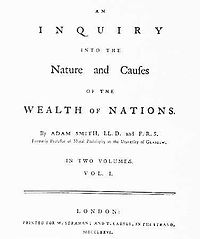 Defendants claimed that a foreclosure sale produced an unfair windfall for Fannie Mae on a substantial commercial property. They alleged that Fannie Mae had a practice of making unfairly low bids on Gulf Coast properties. The Fifth Circuit observed: “As the district court held, evidence regarding Fannie Mae’s other foreclosure practices throughout the Gulf Coast region would not impact whether the subject property was sold for the amount at which it would have changed hands between a willing buyer and seller having knowledge of the relevant facts. At most, such evidence might have suggested that Fannie Mae’s conduct throughout the region affected the fair market value of the subject property. So long as the property was sold for fair market value, however, evidence of the various market forces influencing that value is not relevant to this case.” Fannie Mae v. Lynch, No. 14-60864 (June 2, 2015, unpublished).
Defendants claimed that a foreclosure sale produced an unfair windfall for Fannie Mae on a substantial commercial property. They alleged that Fannie Mae had a practice of making unfairly low bids on Gulf Coast properties. The Fifth Circuit observed: “As the district court held, evidence regarding Fannie Mae’s other foreclosure practices throughout the Gulf Coast region would not impact whether the subject property was sold for the amount at which it would have changed hands between a willing buyer and seller having knowledge of the relevant facts. At most, such evidence might have suggested that Fannie Mae’s conduct throughout the region affected the fair market value of the subject property. So long as the property was sold for fair market value, however, evidence of the various market forces influencing that value is not relevant to this case.” Fannie Mae v. Lynch, No. 14-60864 (June 2, 2015, unpublished).
Plaintiffs settled a noncompete case with their employer, TXL Mortgage, and signed a broad general release of “all claims and causes of action that were or could have been asserted in the Lawsuit and all claims and causes of action related to or in any way arising from [their] employment with TXL, whether based in tort, contract (express or implied), warranty, deceptive trade practices, or any federal, state or local law, statute, or regulation.” Plaintiffs then sued for overtime wages under the FLSA.
The district court granted summary judgment for the employer, and the Fifth Circuit reversed, applying Martin v. Spring Break ’83 Productions, LLC, 688 F.3d 247 (5th Cir. 2012): “To deem the plaintiffs as having fairly bargained away unmentioned overtime pay based on a settlement that involves a compromise over wages due for commissions and salary would subvert the purpose of the FLSA: namely, in this case, the protection of the
right to overtime pay. Under these circumstances where overtime pay was never specifically negotiated, there is no guarantee that the plaintiffs have been or will be compensated for the overtime wages they are allegedly due under the Act.” Accordingly, the general prohibition on settlement of FLSA claims applied, and the exception recognized in Martin did not. Bodle v. TXL Mortgage Corp., No. 14-20224 (June 1, 2015).
 Constango Operators Inc. built a pipeline beneath the Atchafalaya Channel. Unfortunately, the Corps of Engineers neglected to forward information about that new pipeline to its Waterways Division, which supervises dredging operations. A dredging barge operated by Weeks Marine (the G.D. MORGAN, right) then hit the pipeline. The resulting trial awarded damages to Constango, with the U.S. liable for 60% and Weeks 40%, and the Fifth Circuit affirmed.
Constango Operators Inc. built a pipeline beneath the Atchafalaya Channel. Unfortunately, the Corps of Engineers neglected to forward information about that new pipeline to its Waterways Division, which supervises dredging operations. A dredging barge operated by Weeks Marine (the G.D. MORGAN, right) then hit the pipeline. The resulting trial awarded damages to Constango, with the U.S. liable for 60% and Weeks 40%, and the Fifth Circuit affirmed.
The opinion turns largely on issues or maritime law and the applicable federal regulations, but has three features of broad general interest:
- An exceptionally clear definition of “extrinsic evidence” as “anything outside a contract itself,” which excluded consideration of material from the Federal Register and CFR in construing an exculpatory clause;
- A reminder that a duty of care can arise from common law even though regulations control and define some aspects of the parties’ dealings; and
- A reminder, under general tort law, that “[t]he fact that Weeks followed the custom of the dredging industry is not dispositive, because a common practice can still be negligent.”
Contango Operators, Inc. v. USA, No. 14-20265 (May 28, 2015, unpublished).
Withdrawing an earlier panel opinion, the Fifth Circuit certified two insurance questions to the Louisiana Supreme Court in 2014, which have now been answered:
1. Whether an insurer can be liable for a bad-faith failure-to-settle claim when it never received a firm settlement offer. (The Fifth Circuit noted that a revised statute imposed “an affirmative duty . . . to make a reasonable effort to settle claims,” drawing into question prior case law in the area.) The Louisiana Supreme Court said: “Having determined that the plain language supports the existence of a cause of action in favor of the insured under [the revised statute], we answer this question affirmatively.”
2. Whether an insurer can be liable for “misrepresenting or failing to disclose facts that are not related to the insurance policy’s coverage” — namely, the status of a claim and related settlement negotiations. The answer: ” An insurer can be found liable under [the statute] for misrepresenting or failing to disclose facts that are not related to the insurance policy’s coverage; the statute prohibits the misrepresentation of ‘pertinent facts,’ without restriction to facts ‘relating to any coverages.'”
Accordingly, the Fifth Circuit remanded for further proceedings in Kelly v. State Farm, No. 12-31064 (May 29, 2015, unpublished).
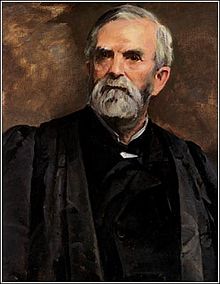 Former bankruptcy debtors sued their trustee, alleging that he failed to sue an insurer who could have satisfied many creditors’ claims. The district court dismissed because the plaintiffs did not first get leave from the bankruptcy court that appointed the trustee, and the Fifth Circuit affirmed under Barton v. Barbour, 104 U.S. 126, 128 (1881) (an opinion by the otherwise unmemorable William Burnham Woods, right).
Former bankruptcy debtors sued their trustee, alleging that he failed to sue an insurer who could have satisfied many creditors’ claims. The district court dismissed because the plaintiffs did not first get leave from the bankruptcy court that appointed the trustee, and the Fifth Circuit affirmed under Barton v. Barbour, 104 U.S. 126, 128 (1881) (an opinion by the otherwise unmemorable William Burnham Woods, right).
The debtors contended that Stern v. Marshall implicitly overruled Barton, in part, because the bankruptcy court would lack final adjudicative authority over their state law tort claims. The Fifth Circuit disagreed, holding that under Barton: “If a bankruptcy court concludes that the claim against a trustee is one that the court would not itself be able to resolve under Stern, that court can make the initial decision on the procedure to follow. Once a bankruptcy court makes such a determination, this court can review the utilized procedure.” Villegas v. Schmidt, No. 14-40423 (May 28, 2015).
TRC Environmental Corporation, the contractor on a project to decommission a power plant, sued LVI Facilities Services for breach of its subcontract with TRC. The subcontract said that “All disputes arising under the Contract Documents will be resolved in accordance with the terms of the Project Agreement”; otherwise, they would be arbitrated. The Project Agreement spelled out various ADR processes but did not require arbitration. In affirming the rejection of LVI’s motion to compel arbitration, the Fifth Circuit reminded: “The Federal Arbitration Act codifies a ‘liberal federal policy favoring arbitration agreements.’ But, this presumption applies when a court evaluates the scope of an arbitration under the second step of the arbitration analysis, not when a court is determining whether a valid arbitration agreement exists at all.” TRC Environmental Corp. v. LVI Facility Servcs., No. 14-51269 (May 22, 2015, unpublished).
In Harris v. Viegelahn, No. 14-400 (May 18, 2015), the Supreme Court resolved a split between the Third and Fifth Circuits and held 9-0 (contrary to the Fifth’s position) that “by excluding postpetition wages from the converted Chapter 7 estate (absent a bad-faith conversion), 11 U.S.C. § 348(f) removes those earnings from the pool of assets that may be liquidated and distributed to creditors.”
 Husky, a seller of electronic components, sued Ritz, a director of a company that owed Husky $163,999.38. Ritz was denied a bankruptcy discharge as to that debt based on 11 U.S.C. § 423(a)(2)(A), which excludes from discharge “any debt . . . for money, property, services, or an extension, renewal, or refinancing of credit, to the extent obtained by . . . false pretenses, a false representation, or actual fraud[.]” The Fifth Circuit reversed, finding that this statute did not apply “where, as here, the debtor made no false representation ot the creditor.” Husky International Electronics v. Ritz, No. 14-20526 (May 22, 2015).
Husky, a seller of electronic components, sued Ritz, a director of a company that owed Husky $163,999.38. Ritz was denied a bankruptcy discharge as to that debt based on 11 U.S.C. § 423(a)(2)(A), which excludes from discharge “any debt . . . for money, property, services, or an extension, renewal, or refinancing of credit, to the extent obtained by . . . false pretenses, a false representation, or actual fraud[.]” The Fifth Circuit reversed, finding that this statute did not apply “where, as here, the debtor made no false representation ot the creditor.” Husky International Electronics v. Ritz, No. 14-20526 (May 22, 2015).
Specifically, the Court rejected the Seventh Circuit’s contrary reasoning in McClellan v. Cantrell, 217 F.3d 890 (7th Cir. 2000), both as inconsistent with Fifth Circuit precedent, and with the Supreme Court’s reasoning about the level of reliance required by this section in Field v. Mans, 516 U.S. 59 (1995). The Court acknowledged the argument that “actual fraud” is one of three scenarios listed in the statute, but found that the canon of construction supporting this argument was a “guide[] that need[s] not be conclusive.” The Court also noted that the fraudulent transfer provisions of the Code addressed situations where the debtor did not make a direct misrepresentation.
 In a 2-1 decision, the Fifth Circuit has denied the federal government’s request to stay the district court’s injunction against key elements of President Obama’s immigration policy. Texas v. United States, No. 15-40238 (May 26, 2015). Judge Higginson’s dissent concludes that the issues before the Court are nonjusticiable. Judge Smith’s majority (joined by Judge Elrod), made these key points:
In a 2-1 decision, the Fifth Circuit has denied the federal government’s request to stay the district court’s injunction against key elements of President Obama’s immigration policy. Texas v. United States, No. 15-40238 (May 26, 2015). Judge Higginson’s dissent concludes that the issues before the Court are nonjusticiable. Judge Smith’s majority (joined by Judge Elrod), made these key points:
- On standing — “Texas’s forced choice between incurring costs and changing its fee structure is itself an injury: A plaintiff suffers an injury even if it can avoid that injury by incurring other costs. And being pressured to change state law constitutes an injury,”‘
- On the statutory merits — “[E]ven granting ‘special deference,’ the INA provisions cited by the government for that proposition cannot reasonably be construed, at least at this early stage of the case, to confer unreviewable discretion,” and
- On the APA issue — “But a rule can be binding if it is ‘applied by the agency in a way that indicates it is binding,’ and the states offered evidence from DACA’s implementation that DAPA’s discretionary language was pretextual.”
 More mandamus news of Trinity Industries, the Fifth Circuit, and the Marshall Division of the Eastern District of Texas. Recall that last October, the Fifth Circuit issued an unusual mandamus ruling that denied Trinity’s request for relief on the eve of trial in a high-profile qui tam case, but expressed concern that the federal government had “found the defendant’s product sufficiently compliant with federal safety standards and therefore fully eligible, in the past, present and future, for federal reimbursement claims.” The case went forward, the jury returned a large verdict against Trinity, and a later mandamus petition by Trinity was unavailing. Judgment has not yet been entered.
More mandamus news of Trinity Industries, the Fifth Circuit, and the Marshall Division of the Eastern District of Texas. Recall that last October, the Fifth Circuit issued an unusual mandamus ruling that denied Trinity’s request for relief on the eve of trial in a high-profile qui tam case, but expressed concern that the federal government had “found the defendant’s product sufficiently compliant with federal safety standards and therefore fully eligible, in the past, present and future, for federal reimbursement claims.” The case went forward, the jury returned a large verdict against Trinity, and a later mandamus petition by Trinity was unavailing. Judgment has not yet been entered.
The same players have returned to a similar stage. In January 2015, in a product liability case arising from a North Carolina automobile accident, Trinity moved to transfer venue from the Marshall Division. As discovery deadlines approached, Trinity filed an emergency stay application on May 6, and after hearing no response, sought mandamus relief from the Fifth Circuit on May 15. Later that day, the trial court ordered a transfer to North Carolina, mooting the mandamus petition.
Now it was the trial court’s turn to comment, adding an unusual “addendum” to its opinion. The trial court pointed out that it was already in the process of drafting an order to transfer venue when Trinity filed its mandamus petition. The court further noted that “Trinity has stumbled in its race for credibility” by seeking mandamus intervention, and counseled greater patience from litigants in the future in light of crowded docket conditions.
These events, aside of their dramatic nature, highlight a practical and important challenge of “rocket dockets.” Busy dockets, coupled with tightly compressed discovery schedules, can force counsel into “Catch-22” situations. Counsel either advises their clients to endure extensive, fast-paced litigation activity that they believe is in the wrong place, or risk the ire of courts by “bugging” them for dispositive rulings.
(This blog’s author represents Trinity but not in either matter referred to above.)
In declining to hear Crutchfield v. Sewerage & Water Board, the Fifth Circuit offered some rare guidance about what guides its discretion in accepting a petition to appeal under CAFA: “[N]o CAFA-related issues are raised in the petition for permission to appeal. See Alvarez v. [Midland Credit], 585 F.3d [890,] 894 [5th Cir. 2009] (vacating initial grant of permission to appeal under Section 1453(c), as the appeal no longer involved “unique issues under CAFA”); id. (“[Section 1453(c)] was intended to facilitate the development of a body of appellate law interpreting [CAFA] without unduly delaying the litigation of class actions.” (internal quotation marks omitted)); see also Perritt v. Westlake Vinyls Co., L.P.., 562 F. App’x 228, 230 (5th Cir.2014) (unpublished) (per curiam) (““[Section] 1453(c) tethers our discretionary review to CAFA determinations.”).” No. 15-90014 (May 19, 2015, unpublished).
Lincoln Insurance sued several defendants, who it accused of charging excessive fees and otherwise engaging in self-dealing to the detriment of Lincoln. Lincoln won a $16.5 million judgment against two of them for tortious interference. In a “grab bag” of holdings after both sides appealed, the Fifth Circuit held:
- It did not need to reach a difficult Erie issue about when a tortious interference claim accrues under Texas law, where some of the conduct occurs outside the limitations period, because the trial court found sufficient facts to establish that the discovery rule applied;
- Voluntary dismissal of a claim in amended pleading, in response to a dismissal order “based on a technical defect or withdrawal,” waives the right to appeal that order;
- The economic loss rule barred conversion claims where contract provisions dealt with the underlying rights and responsibilities; and
- When a contract provision expressly created a fiduciary duty as to the handling of funds in a particular account, that duty necessarily extended that duty to the handling of those funds before their deposit (and the trial court erred in holding otherwise, requiring a remand).
The Court noted: “[A] litigation strategy with a narrower focus on certain claims and Defendants might reduce the complications, both procedural and substantive, that arose the first go-around.” Lincoln General Ins. Co. v. U.S. Auto Ins. Servcs., Inc., No. 13-10589 (May 18, 2015).
 Johnson submitted a claim about his personal injuries to the “Gulf Coast Claims Facility,” an entity created to facilitate the resolution of claims against BP about the Deepwater Horizon accident. The GCCF recommended a settlement of roughly $2.7 million. Johnson accepted the proposal and BP allowed its 14-day appeal period to run. During that period, however, BP made an indemnity demand on another company, who raised serious questions about the veracity of Johnson’s claim. BP sought to set aside the settlement, and the case of Johnson v. BP Exploration & Production, Inc. ensued. No. 14-30269 (May 15, 2015).
Johnson submitted a claim about his personal injuries to the “Gulf Coast Claims Facility,” an entity created to facilitate the resolution of claims against BP about the Deepwater Horizon accident. The GCCF recommended a settlement of roughly $2.7 million. Johnson accepted the proposal and BP allowed its 14-day appeal period to run. During that period, however, BP made an indemnity demand on another company, who raised serious questions about the veracity of Johnson’s claim. BP sought to set aside the settlement, and the case of Johnson v. BP Exploration & Production, Inc. ensued. No. 14-30269 (May 15, 2015).
As to contract formation, the Fifth Circuit found that: (1) “Johnson accepted the offer in the [GCCF] Determination Letter by its own terms by timely submitting the Final Payment Election Form and agreeing to subsequently sign the Release, and because BP declined to appeal that offer within the fourteen-day period, both an offer and acceptance occurred”; and (2) the actual terms of the release were not material to the formation of the settlement agreement, and neither was its actual delivery. However, after acknowledging the general rule that “simply couching . . . prior litigation as ‘fraudulent,'” will not support a fraudu lent inducement claim, the Court concluded that BP had raised a question as to whether an exception applied when “the defendant subsequently uncovers previously unavailable evidence that the plaintiff was in fact not injured at all, or sustained only de minimis injuiries.” Accordingly, the Court remanded for an evidentiary hearing about the issue of fraudulent inducement.
lent inducement claim, the Court concluded that BP had raised a question as to whether an exception applied when “the defendant subsequently uncovers previously unavailable evidence that the plaintiff was in fact not injured at all, or sustained only de minimis injuiries.” Accordingly, the Court remanded for an evidentiary hearing about the issue of fraudulent inducement.
 A medical practice hired an employment agency, which recommended an office manager who then embezzled $60,000. The practice sued the agency and lost. The Fifth Circuit observed that under the Texas definition of a “producing cause”:
A medical practice hired an employment agency, which recommended an office manager who then embezzled $60,000. The practice sued the agency and lost. The Fifth Circuit observed that under the Texas definition of a “producing cause”:
- “when boys meet a man because he volunteers with their Boys Club, but the boys and their family then befriend the man outside of the club context, the club’s misrepresentation that it thoroughly checks the background of its volunteers is not a producing cause of the man’s later molestation of the boys outside of the club,” and
- “when a church advertises a teenage boy as a babysitter and parents hire him, the
church’s advertisement is not the producing cause of his later molestation of
their children because the parents themselves chose to hire the teenager as a
babysitter.”
Accordingly, “[b]ecause the doctors of the Medical Group decided to hire Brown based upon their own observations, we conclude that [the agency’s] conduct was not the producing cause of the Medical Group hiring Brown and its resulting injuries.” Cox, Chanez & Williams v. Howroyd-Wright Employment Agency, Inc., No. 14-10799 (May 14, 2015, unpublished).
 The latest appeal about BP’s class settlement of Deepwater Horizon claims — a long and winding path — involved the rights of claimants to appeal a benefit decision to the Fifth Circuit, after review in the district court. While the Court’s ultimate holdings turn on the specific parts of the settlement at issue, on the threshold issue of the claimants’ appeal right, the Court held: “We choose to follow these other circuits’ decisions in similar cases involving consent decrees to hold that, where a settlement agreement does not resolve claims itself but instead establishes a mechanism pursuant to which the district court will resolve claims, parties must expressly waive what is otherwise a right to appeal from claim determination decisions by a district court. Given that there has been no such express waiver in the instant case, the parties have preserved their right to appeal from the district court to this court.” Lake Eugenie Land & Development v. BP Exploration & Production, No. 13-30843 (May 8, 2015).
The latest appeal about BP’s class settlement of Deepwater Horizon claims — a long and winding path — involved the rights of claimants to appeal a benefit decision to the Fifth Circuit, after review in the district court. While the Court’s ultimate holdings turn on the specific parts of the settlement at issue, on the threshold issue of the claimants’ appeal right, the Court held: “We choose to follow these other circuits’ decisions in similar cases involving consent decrees to hold that, where a settlement agreement does not resolve claims itself but instead establishes a mechanism pursuant to which the district court will resolve claims, parties must expressly waive what is otherwise a right to appeal from claim determination decisions by a district court. Given that there has been no such express waiver in the instant case, the parties have preserved their right to appeal from the district court to this court.” Lake Eugenie Land & Development v. BP Exploration & Production, No. 13-30843 (May 8, 2015).
 Heritage and OMG disputed their commissions related to the auction of high-end firearms (such as Colt’s Texas Paterson, right). They arbitrated and Heritage won. OMG successfully opposed confirmation in the district court, which concluded: “By finding that the [parties contracts] never came into existence, the arbitrator intruded on an issue that was reserved for an alternative decision-maker and thereby exceeded his authority.” OMG, LP v. Heritage Auctions, Inc., No. 14-10403 (May 8, 2015, unpublished).
Heritage and OMG disputed their commissions related to the auction of high-end firearms (such as Colt’s Texas Paterson, right). They arbitrated and Heritage won. OMG successfully opposed confirmation in the district court, which concluded: “By finding that the [parties contracts] never came into existence, the arbitrator intruded on an issue that was reserved for an alternative decision-maker and thereby exceeded his authority.” OMG, LP v. Heritage Auctions, Inc., No. 14-10403 (May 8, 2015, unpublished).
The Fifth Circuit disagreed. It reminded: “By submitting issues for an arbitrator’s consideration, parties may expand an arbitrator’s authority beyond that provided by the original arbitration agreement such that we need not address whether the original agreement encompassed such authority.” Here, “the parties agreed to arbitrate the issue of contract formation by submitting, briefing, and generally disputing that issue throughout the arbitration proceedings, with the plaintiffs never contesting the arbitrator’s authority to decide contract formation until he issued an adverse award.”
 Among several issues addressed in the complicated bankruptcy appeal of Templeton v. O’Cheskey, the Fifth Circuit considered whether the “ordinary course of business” defense applied to alleged preferential transfers. The Court noted that a “true” Ponzi scheme is one with “operations build on the collection of funds from new investments to pay off prior investors.” Here, “only a portion of the funds controlled by [Debtor] ([Creditor] estimates 9%) was used to pay Ponzi-like returns to investors,” and the
Among several issues addressed in the complicated bankruptcy appeal of Templeton v. O’Cheskey, the Fifth Circuit considered whether the “ordinary course of business” defense applied to alleged preferential transfers. The Court noted that a “true” Ponzi scheme is one with “operations build on the collection of funds from new investments to pay off prior investors.” Here, “only a portion of the funds controlled by [Debtor] ([Creditor] estimates 9%) was used to pay Ponzi-like returns to investors,” and the  “record is clear that [Debtor] engaged in substantial legitimate business–owning or controlling approximately 14,000 housing units.” Therefore, the defense could apply, and these transfers were remanded for further consideration. No. 14-10563 (revised May 12, 2015).
“record is clear that [Debtor] engaged in substantial legitimate business–owning or controlling approximately 14,000 housing units.” Therefore, the defense could apply, and these transfers were remanded for further consideration. No. 14-10563 (revised May 12, 2015).
 Amerisure and Arch disputed whether Arch exhausted its policy limits. The Arch policy had an endorsement that said the coverage section “is amended as follows: The provision: ‘These payments will not reduce the limits of insurance. is deleted in its entirety and is replaced with the following provision: ‘These payments will reduce the limits of insurance.’”
Amerisure and Arch disputed whether Arch exhausted its policy limits. The Arch policy had an endorsement that said the coverage section “is amended as follows: The provision: ‘These payments will not reduce the limits of insurance. is deleted in its entirety and is replaced with the following provision: ‘These payments will reduce the limits of insurance.’”
Amerisure argued that the “expenses” referred to by the endorsement could not be read as including attorneys fees without contradicting another, more specific portions of the policy: ” Our right and duty to defend end[s] when we have used up the applicable limit of insurance in the payment of judgments or settlements under Coverages A or B or medical expenses under Coverage C.”
The Fifth Circuit disagreed, reasoning: “This construction reads the endorsement out of the policy as, logically, there can never be an end to the duty to defend unless the insurer
pays the policy limits in indemnity payments.” Accordingly, Arch had an “eroding” policy with the insured, and its payments of attorneys fees had exhausted the policy limits. Amerisure Mutual Ins. Co. v. Arch Specialty Ins. Co., No. 14-20239 (April 21, 2015).
 Chevron’s “Genesis Spar” offshore rig (right) was damaged by the installation of substandard bolts. Chevron sued Aker Maritime and won; Aker in turn sued Oceaneering for indemnity and won; Oceaneering settled and sued its insurer. Sidestepping whether a “sistership” exclusion barred coverage, the Fifth Circuit found that Oceaneering had not proven “property damage” within the meaning of the policy.
Chevron’s “Genesis Spar” offshore rig (right) was damaged by the installation of substandard bolts. Chevron sued Aker Maritime and won; Aker in turn sued Oceaneering for indemnity and won; Oceaneering settled and sued its insurer. Sidestepping whether a “sistership” exclusion barred coverage, the Fifth Circuit found that Oceaneering had not proven “property damage” within the meaning of the policy.
To be sure, a Fifth Circuit panel used that phrase in the original Chevron litigation, and a second panel discussed the type of damage at issue in the indemnity case. But because those panels wrote about distinct issues from the coverage question in this case, and because “Oceaneering rests its argument that there was coverage . . . on these two prior opinions,” the Court affirmed judgment for the insurer. American Home Assurance Co. v. Oceaneering Int’l Inc., No. 14-20222 (April 27, 2015, unpublished).
See generally Towne v. Eisner, 245 U.S. 418 (1918) (Holmes, J.) (“A word is not a crystal, transparent and unchanged; it is the skin of a living thought and may vary greatly in color and content according to the circumstances and time in which it is used.”); Lewis Carroll, Through the Looking Glass (“”‘When I use a word,’ Humpty Dumpty said, in rather a scornful tone, ‘it means just what I choose it to mean — neither more nor less.'”)
 To oppose a summary judgment motion in a mortgage servicing case, Plaintiffs sought to introduce two documents: (1) “a printoff from the HOPE Loan Portal, an online log maintained by Impact [a consultant hired by Plainitffs] to catalogue any updates with the [Plaintiffs’] loan-modification application,” and (2) a handwritten call log seemingly created by Impact employees as they contacted BOA for updates by telephone. The Fifth Circuit affirmed their exclusion in Thompson v. Bank of America, N.A., No. 14-10560 (April 21, 2015).
To oppose a summary judgment motion in a mortgage servicing case, Plaintiffs sought to introduce two documents: (1) “a printoff from the HOPE Loan Portal, an online log maintained by Impact [a consultant hired by Plainitffs] to catalogue any updates with the [Plaintiffs’] loan-modification application,” and (2) a handwritten call log seemingly created by Impact employees as they contacted BOA for updates by telephone. The Fifth Circuit affirmed their exclusion in Thompson v. Bank of America, N.A., No. 14-10560 (April 21, 2015).
Noting that “[i]n the case of an exhibit purported to represent an electronic source, such as a website or chat logs, testimony by a witness with direct knowledge of the source, stating that the exhibit fairly and fully reproduces it, may be enough to authenticate,” the Court observed: “At no point does [Plaintiffs’] affidavit say that they have personal knowledge of the online log or that it represents an unaltered version of the website. . . . That is likely because, by all indications, those logs were created and maintained by Impact, not the Thompsons. Nor do the logs have characteristics that would authenticate them from their own appearance under Rule 901(b)(4).” The opinion summarizes some other federal authority about the authentication of evidence obtained from the Internet.
 In State of Veracruz v. BP, P.L.C., the Fifth Circuit reviewed the dismissal of claims brought by the Mexican states of Veracruz, Tamaulipas, and Quintana Roo, against several corporate defendants, seeking to recover damages related to the effects of the Deepwater Horizon disaster on the environment, fishing industry, and tourism. No. 13-31070 (May 1, 2015). The Fifth Circuit agreed with the district court’s conclusion that the states “lacked a proprietary interest to overcome application of the rule, announced in Robins Dry Dock & Repair Co. v. Flint[, 275 U.S. 303 (1927)], precluding recovery for economic loss absent a proprietary interest in physically damaged property. In a thorough review of Mexican law on this point, featuring analysis by many leading experts in the field, the Court found this article of the Mexican Constitution dispositive: “The Nation has full ownership over all natural resources of the continental shelf and the seabed . . . .”
In State of Veracruz v. BP, P.L.C., the Fifth Circuit reviewed the dismissal of claims brought by the Mexican states of Veracruz, Tamaulipas, and Quintana Roo, against several corporate defendants, seeking to recover damages related to the effects of the Deepwater Horizon disaster on the environment, fishing industry, and tourism. No. 13-31070 (May 1, 2015). The Fifth Circuit agreed with the district court’s conclusion that the states “lacked a proprietary interest to overcome application of the rule, announced in Robins Dry Dock & Repair Co. v. Flint[, 275 U.S. 303 (1927)], precluding recovery for economic loss absent a proprietary interest in physically damaged property. In a thorough review of Mexican law on this point, featuring analysis by many leading experts in the field, the Court found this article of the Mexican Constitution dispositive: “The Nation has full ownership over all natural resources of the continental shelf and the seabed . . . .”
 Amerijet sued Zero Gravity in Texas state court, seeking emergency relief about the handling of certain aircraft engines subject to their contract. Zero Gravity responded with its own request for emergency relief. After some initial rulings by the state court, Zero Gravity removed to federal court. Amerijet then filed a notice of dismissal under Fed. R. Civ. P. 41(a)(1)(A)(i). The matter proceeded in federal court, however, based on its jurisdiction over the TRO bond and a counterclaim for declaratory relief, as the parties tried to settle. Their dealings culminated in the district court enjoining further litigation by Amerijet in Florida federal court, which then led to an appeal about the district court’s power over the case in light of the dismissal notice. Amerijet Int’l, Inc. v. Zero Gravity Corp., No. 14-20521 (May 15, 2015).
Amerijet sued Zero Gravity in Texas state court, seeking emergency relief about the handling of certain aircraft engines subject to their contract. Zero Gravity responded with its own request for emergency relief. After some initial rulings by the state court, Zero Gravity removed to federal court. Amerijet then filed a notice of dismissal under Fed. R. Civ. P. 41(a)(1)(A)(i). The matter proceeded in federal court, however, based on its jurisdiction over the TRO bond and a counterclaim for declaratory relief, as the parties tried to settle. Their dealings culminated in the district court enjoining further litigation by Amerijet in Florida federal court, which then led to an appeal about the district court’s power over the case in light of the dismissal notice. Amerijet Int’l, Inc. v. Zero Gravity Corp., No. 14-20521 (May 15, 2015).
Observing that a Rule 41 notice takes effect automatically if the defendant has not answered or moved for summary judgment, the Fifth Circuit found that Zero Gravity’s pre-removal filing “barely” qualified as an answer under Texas law, which meant that the notice no longer had automatic effect. Even though the filing was styled as a TRO application (and accompanying motion to dissolve) and was not called an “answer,” the Court noted that it asserted defenses, a counterclaim for declaratory relief, and facts in support and thus met the “minimal characteristics of an answer” under Texas law (The question whether a defendant’s pre-removal counterclaim waives the right to remove did not appear to be before the Court.) Accordingly, the district court was not bound to dismiss the matter, and it did not abuse its discretion in enjoining parallel federal litigation under the first-to-file rule.
Dean and Sherry Buescher filed for bankruptcy; First United Bank opposed their discharge, and won. Sherry Buescher argued on appeal that the bank lacked standing, because she did not personally guarantee the loans at issue. The Fifth Circuit disagreed, noting that because Texas is a community property state, the bank could sue in rem in Texas to collect her husband’s guaranty obligation from community property. Buescher v. First United Bank & Trust, No. 14-40361 (April 15, 2015).
 Chester sued DIRECTV for age discrimination; it moved to compel arbitration. Chester swore: “I do not remember signing any arbitration agreement, and dispute that I signed an arbitration agreement with Directv, LLC at anytime. . . . Had I been offered an arbitration agreement I would have attempted to continue my employment without signing it, and only would have signed it if the employer threatened to terminate me if it was not signed. . . . If I was threatened with termination if I did not sign an arbitration agreement I would remember it. Since I do not remember any such threat I am sure I did not sign an arbitration agreement.”
Chester sued DIRECTV for age discrimination; it moved to compel arbitration. Chester swore: “I do not remember signing any arbitration agreement, and dispute that I signed an arbitration agreement with Directv, LLC at anytime. . . . Had I been offered an arbitration agreement I would have attempted to continue my employment without signing it, and only would have signed it if the employer threatened to terminate me if it was not signed. . . . If I was threatened with termination if I did not sign an arbitration agreement I would remember it. Since I do not remember any such threat I am sure I did not sign an arbitration agreement.”
DIRECTV, admitting that it lost the arbitration agreement, argued that it had a practice of having employees sign one of two form agreements. The Fifth Circuit was unimpressed, noting that the two agreements contained substantial substantive differences. DIRECTV sought solace in the fact that it had lost Chester’s entire file, not just the arbitration agreement; the Court noted that DIRECTV was unable to provide arbitration agreements for 26 of the 87 other employees in the relevant office. In sum: “Considering the entire record, it is clear that, somewhere along the way, DIRECTV’s purported practice of collecting and filing arbitration agreements for all new employees broke down . . . .” Chester v. DIRECTV, LLC, No. 14-60247 (April 29, 2015, unpublished).
 The Songs deposited $361,200 as earnest money, toward the purchase of a $3.4 million apartment complex. They then made the successful bid in an auction process, but backed out of the transaction and refused to close. The Fifth Circuit affirmed the district court’s ruling that the seller could keep the money. It found that the parties’ agreement had consideration, most notably in the seller’s commitment to review, consider, and accept the Songs’ bid. It also found that the earnest money was a proper liquidated damages award for the Songs’ termination, finding that it “is reasonable and actual damages were uncertain.” Song v. 4170 & 4231 & 4271 Altoona Drive Holdings LP, No. 14-11059 (April 8, 2015, unpublished).
The Songs deposited $361,200 as earnest money, toward the purchase of a $3.4 million apartment complex. They then made the successful bid in an auction process, but backed out of the transaction and refused to close. The Fifth Circuit affirmed the district court’s ruling that the seller could keep the money. It found that the parties’ agreement had consideration, most notably in the seller’s commitment to review, consider, and accept the Songs’ bid. It also found that the earnest money was a proper liquidated damages award for the Songs’ termination, finding that it “is reasonable and actual damages were uncertain.” Song v. 4170 & 4231 & 4271 Altoona Drive Holdings LP, No. 14-11059 (April 8, 2015, unpublished).
 Several investors in the ill-fated Stanford scheme sued Pershing LLC, who provided clearing services to the Stanford Group. Many of the investors had contracts with Pershing that required arbitration with FINRA, but one group did not, and sought to compel arbitration based on estoppel theories. As to a “direct benefits” theory, the Fifth Circuit found “no evidence that Pershing was aware that [the investors] had executed contracts to purchase CDs from the Stanford entities,” reminding that “a nonsignatory’s generalized sense that the two contracting parties have a course of dealing will not satisfy this requirement.” Accordingly, the Court affirmed the denial of the plaintiffs’ motion to compel arbitration.
Several investors in the ill-fated Stanford scheme sued Pershing LLC, who provided clearing services to the Stanford Group. Many of the investors had contracts with Pershing that required arbitration with FINRA, but one group did not, and sought to compel arbitration based on estoppel theories. As to a “direct benefits” theory, the Fifth Circuit found “no evidence that Pershing was aware that [the investors] had executed contracts to purchase CDs from the Stanford entities,” reminding that “a nonsignatory’s generalized sense that the two contracting parties have a course of dealing will not satisfy this requirement.” Accordingly, the Court affirmed the denial of the plaintiffs’ motion to compel arbitration.
In Barzelis v. Flagstar Bank, F.S.B., No. 14-10782 (Apr. 22, 2015), the Fifth Circuit addressed the preemption of state-law mortgage claims under “HOLA,” the Home Owners’ Loan Act of 1933, a statute governing federal savings associations. The Court held:
1. Notice and cure. “It may be the case, for example, that a state law regulating interest-rate adjustments to protect borrowers is preempted by HOLA. But that does not prevent a bank and a borrower from voluntarily agreeing to substantially the same protections in their contract . . . .”
2. Misrepresentation. “[W]here a negligent-misrepresentation claim is predicated not on affirmative misstatements but instead on the adequacy of disclosures or credit notices, it has a specific regulatory effect on lending operations and is preempted.”
3. Debt collection. Consumer protection laws “‘that establish the basic norms that undergird commercial transactions’ do not have more than an incidental effect on lending and thus escape preemption.”
 Halliburton obtained an injunction in an arbitration against a former employee. The employee sought vacatur under the FAA, arguing that it allows judicial review of an injunction for vagueness. After reviewing some dispute as to whether such review is allowed after Hall Street, the Court rejected the challenge. The employee challenged a provision that enjoined him from “utilizing in any fashion” certain documents “that concern [Halliburton’s] products or services, arguing that “utilization” was undefined, the limitation had no time period, and the document description was vague. The Court found that, “read in context,” it was clear that the arbitrator was referring to material that the employee had improperly taken from Halliburton. Because this gave the employee “fair notice of what he may, and must not, do,” it was “clearly capable of being implemented and enforced.” McVay v. Halliburton Energy Services, No. 10-10172 (April 22, 2015). The entire injunction appears on pages 6-7 of the opinion and is of general interest to noncompete and trade secret litigation.
Halliburton obtained an injunction in an arbitration against a former employee. The employee sought vacatur under the FAA, arguing that it allows judicial review of an injunction for vagueness. After reviewing some dispute as to whether such review is allowed after Hall Street, the Court rejected the challenge. The employee challenged a provision that enjoined him from “utilizing in any fashion” certain documents “that concern [Halliburton’s] products or services, arguing that “utilization” was undefined, the limitation had no time period, and the document description was vague. The Court found that, “read in context,” it was clear that the arbitrator was referring to material that the employee had improperly taken from Halliburton. Because this gave the employee “fair notice of what he may, and must not, do,” it was “clearly capable of being implemented and enforced.” McVay v. Halliburton Energy Services, No. 10-10172 (April 22, 2015). The entire injunction appears on pages 6-7 of the opinion and is of general interest to noncompete and trade secret litigation.
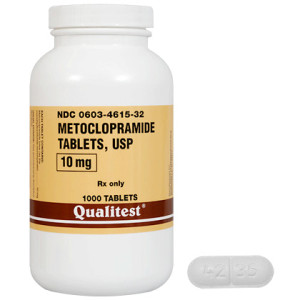 Plaintiff alleged birth defects from the prescription of metoclopramide, off-label, to control nausea during pregnancy. The prescribing doctor gave “unequivocal” deposition testimony that he chose the medicine because of his clinical experience, and had no contact with marketing efforts by the drug manufacturer. Accordingly, preempted or not, plaintiff’s claims failed for lack of causation. Whitener v. Pliva, Inc., No. 14-30468 (April 9, 2015, unpublished).
Plaintiff alleged birth defects from the prescription of metoclopramide, off-label, to control nausea during pregnancy. The prescribing doctor gave “unequivocal” deposition testimony that he chose the medicine because of his clinical experience, and had no contact with marketing efforts by the drug manufacturer. Accordingly, preempted or not, plaintiff’s claims failed for lack of causation. Whitener v. Pliva, Inc., No. 14-30468 (April 9, 2015, unpublished).
Continuing an earlier post about how to sign documents, the issue of effective consent again appeared in Berry v. Fannie Mae, No. 14-10474 (April 17, 2015, unpublished). A mortgage servicer sent a trial payment plan to a borrower, which said: “This Plan will not take effect unless and until both the Lender and I sign it and Lender provides me with a copy of this Plan with the Lender’s signature.” Rejecting an argument that the servicer’s letter acknowledging the borrower’s signature waived this language, the Court enforced it and affirmed dismissal of the borrower’s claims. A similar analysis led to a similar result in Williams v. Bank of America, No. 14-20520 (May 7, 2015, unpublished).
The Cantus filed for Chapter 11 bankruptcy, and after their case was converted to Chapter 7, sued their bankruptcy attorney for malpractice. That suit settled for roughly $300,000, leading to a dispute between the Cantus and the Chapter 7 Trustee as to who should receive the proceeds. The Fifth Circuit found that the estate suffered pre-conversion injury as a result of the alleged misconduct, including diversion of assets, time wasted with an unconfirmable Chapter 11 plan, and additional attorneys fees. Therefore, the causes of action against the attorney “accrued prior to conversion and belong to the estate.” Cantu v. Schmidt, No. 14-40597 (April 17, 2015).
 Lito Asignacion, a Filipino seaman, worked aboard the M/V RICKMERS DALIAN (right, en route to Antwerp at the time of this post) – a “superflex heavy” container ship owned by a German company and flying the flag of the Marshall Islands. Severely burned in an onboard accident, he went to arbitration in the Phillippines under Filipino law, and received an award of $1,700 — significantly less than U.S. maritime law would afford. The district court refused to enforce the award on public policy grounds, and the Fifth Circuit reversed. Asignacion v. Rickmers Genoa, No. 14-30132 (April 16, 2015). Acknowledging the strong U.S. policy that gives “special solicitude to seamen” and treats them as “wards of admiralty,” the Court found it outweighed by the policy in favor of arbitration, coupled with unique considerations about the legal arrangements under which Filipino citizens find employment at sea. It also rejected a challenge based on the “prospective waiver” doctrine, finding that the Supreme Court had not extended it beyond purely statutory rights.
Lito Asignacion, a Filipino seaman, worked aboard the M/V RICKMERS DALIAN (right, en route to Antwerp at the time of this post) – a “superflex heavy” container ship owned by a German company and flying the flag of the Marshall Islands. Severely burned in an onboard accident, he went to arbitration in the Phillippines under Filipino law, and received an award of $1,700 — significantly less than U.S. maritime law would afford. The district court refused to enforce the award on public policy grounds, and the Fifth Circuit reversed. Asignacion v. Rickmers Genoa, No. 14-30132 (April 16, 2015). Acknowledging the strong U.S. policy that gives “special solicitude to seamen” and treats them as “wards of admiralty,” the Court found it outweighed by the policy in favor of arbitration, coupled with unique considerations about the legal arrangements under which Filipino citizens find employment at sea. It also rejected a challenge based on the “prospective waiver” doctrine, finding that the Supreme Court had not extended it beyond purely statutory rights.
 Two principles – somewhat inconsistent – govern whether a court should accept an untimely request for jury trial. First, “‘because the seventh amendment confers a fundamental right,'” a court “typically ‘should grant a motion for jury trial . . . in the absence of strong and compelling reasons to the contrary.'” Second, “it is not an abuse of discretion to deny an untimely motion for a jury trial ‘when the failure to make a timely jury demand results form mere inadvertence on the part of the moving party.'” In BPRE, LP v. RML Waxahachie Dodge, LLC, under the operative scheduling order, the plaintiff had to make a request for a pretrial conference by January 31, 2010. It did not do so until February 16, and did not file a separate brief about the right to jury trial until April 12. The Fifth Circuit found no abuse of discretion in the trial court’s conclusion that this was “mere inadvertence,” and affirmed the finding of waiver. No. 14-50339 (April 7, 2015, unpublished).
Two principles – somewhat inconsistent – govern whether a court should accept an untimely request for jury trial. First, “‘because the seventh amendment confers a fundamental right,'” a court “typically ‘should grant a motion for jury trial . . . in the absence of strong and compelling reasons to the contrary.'” Second, “it is not an abuse of discretion to deny an untimely motion for a jury trial ‘when the failure to make a timely jury demand results form mere inadvertence on the part of the moving party.'” In BPRE, LP v. RML Waxahachie Dodge, LLC, under the operative scheduling order, the plaintiff had to make a request for a pretrial conference by January 31, 2010. It did not do so until February 16, and did not file a separate brief about the right to jury trial until April 12. The Fifth Circuit found no abuse of discretion in the trial court’s conclusion that this was “mere inadvertence,” and affirmed the finding of waiver. No. 14-50339 (April 7, 2015, unpublished).
 Several insurance-related businesses had a dispute. The businesses were not all parties to all relevant agreements, leading to confusion about whether arbitration should proceed with the AAA or ICC, and about how to select an arbitrator. The district court found that the arbitrator was not appointed correctly, vacated the award, and the Fifth Circuit affirmed: “Arbitration is simply a matter of contract between the parties; it is a way to resolve those disputes — but only those disputes — that the parties have agreed to submit to arbitration.” Poolre Ins. Corp. v. Organizational Strategies, Inc., No. 14-20433 (April 7, 2015). Interestingly, the relevant contract required arbitrator selection “by the Anguilla, [British West Indies] Director of Insurance” — a nonexistent position. This error did not moot that provision, however, but simply implicated the section 5 of the FAA, which lets a district judge appoint an arbitrator if “a lapse in the naming of an arbitrator” arises.
Several insurance-related businesses had a dispute. The businesses were not all parties to all relevant agreements, leading to confusion about whether arbitration should proceed with the AAA or ICC, and about how to select an arbitrator. The district court found that the arbitrator was not appointed correctly, vacated the award, and the Fifth Circuit affirmed: “Arbitration is simply a matter of contract between the parties; it is a way to resolve those disputes — but only those disputes — that the parties have agreed to submit to arbitration.” Poolre Ins. Corp. v. Organizational Strategies, Inc., No. 14-20433 (April 7, 2015). Interestingly, the relevant contract required arbitrator selection “by the Anguilla, [British West Indies] Director of Insurance” — a nonexistent position. This error did not moot that provision, however, but simply implicated the section 5 of the FAA, which lets a district judge appoint an arbitrator if “a lapse in the naming of an arbitrator” arises.
The panel has been announced for Friday’s arguments in “the immigration case,” Texas v. United States: Judges Smith, Elrod, and Higginson. Like the recent panel in Crane v. Johnson (No.14-10049, April 2, 2015), this panel draws from the major “wings” of the Court – a senior Reagan appointee, a recent Bush appointee (both from Texas) and the second-newest appointee by Obama.
The similarity of panel makeup suggests the potential for a similar result. Interestingly, while Judge Smith is a strong separation-of-powers conservative (consider his dissent in the en banc False Claims Act case of Riley v. St. Luke’s Episcopal Hospital, 252 F.3d 749 (5th Cir. 2001)) he is also a strong voice for judicial action when there is jurisdiction; for example, he has led the Court toward expanded pretrial oversight of district courts in opinions such as In re: Radmax. Judge Higginson, while new, has a record of thorough opinions that comport with the majority view of legal issues (consider his recent opinion in the False Claims Act case of United States ex rel. Shupe v. Cisco Systems, Inc., 759 F.3d 379 (5th Cir. 2014)). The panel will give the plaintiffs a full hearing but may well find problems with their standing theories.
At the risk of reading one tea leaf too many, it is worth noting that Judge Elrod dissented from the denial of en banc rehearing in Radmax, as well as a recent panel opinion that granted mandamus relief on a forum issue, In re Lloyd’s Register North America, Inc., No. 14-20554 (Feb. 24, 2015). The analogy between the Court’s mandamus jurisdiction and the justiciability issues in Texas v. United States is not powerful – and indeed, Judge Smith was on the opposite side of both matters from Judge Elrod – but it does suggest a healthy concern for judicial constraint.
 A law firm sought $130,000 in fees for representing a bankruptcy debtor; the bankruptcy court awarded $20,000, noting the firm’s lack of success in delivering a measurable benefit to the estate. While a Fifth Circuit panel affirmed, citing the test in In re: Pro-Snax Distributors, Inc., 157 F.3d 414 (5th Cir. 1998), all three judges called for en banc reconsideration of that opinion. That request was granted unanimously in Barron & Newburger, P.C. v. Texas Skyline, Ltd., which recognized that the “retrospective, ‘material benefit’ standard enunciated in Pro–Snax conflicts with the language and legislative history of § 330, diverges from the decisions of other circuits, and has sown confusion in our circuit.” Accordingly, the full Court overturned Pro–Snax’s attorney’s-fee rule to “adopt the prospective, ‘reasonably likely to benefit the estate’ standard endorsed by our sister circuits.” While the division of some en banc votes can offer insight on subtle aspects of judges’ philosophies, this unanimous decision shows that sometimes, the full court will simply fix what it regards as an earlier mistake, if that mistake has sufficiently far-reaching consequences within the Circuit.
A law firm sought $130,000 in fees for representing a bankruptcy debtor; the bankruptcy court awarded $20,000, noting the firm’s lack of success in delivering a measurable benefit to the estate. While a Fifth Circuit panel affirmed, citing the test in In re: Pro-Snax Distributors, Inc., 157 F.3d 414 (5th Cir. 1998), all three judges called for en banc reconsideration of that opinion. That request was granted unanimously in Barron & Newburger, P.C. v. Texas Skyline, Ltd., which recognized that the “retrospective, ‘material benefit’ standard enunciated in Pro–Snax conflicts with the language and legislative history of § 330, diverges from the decisions of other circuits, and has sown confusion in our circuit.” Accordingly, the full Court overturned Pro–Snax’s attorney’s-fee rule to “adopt the prospective, ‘reasonably likely to benefit the estate’ standard endorsed by our sister circuits.” While the division of some en banc votes can offer insight on subtle aspects of judges’ philosophies, this unanimous decision shows that sometimes, the full court will simply fix what it regards as an earlier mistake, if that mistake has sufficiently far-reaching consequences within the Circuit.
Only in New Orleans. During Mardi Gras, a form of folk art takes discarded beads and twists them into a dog shape, also known as a “bead dog.” A seller of king cakes obtained a trademark for its mascot based on that image (below left), and sued a jewelrymaker who sold necklaces and earrings that also drew upon that image (below right).

The Fifth Circuit affirmed summary judgment for the  jewelrymaker, reasoning:
jewelrymaker, reasoning:
1. The bakery’s “Mardi Gras Bead Dog” mark was descriptive of its products;
2. The mark was not inherently distinctive, and thus may be protected only if it had acquired secondary meaning;
3. Under the applicable seven-factor test, the bakery failed to establish that the mark had acquired secondary meaning; and .
4. While a dog itself cannot be copyrighted, its distinctive collar could potentially be, but on this record the Court concluded that no reasonable juror could find the collars to be “substantially similar in protectable expression.”
Other related state law claims were also dismissed. Nola Spice Designs, LLC v. Haydel Enterprises, Inc., No. 13-30918 (April 8, 2015).
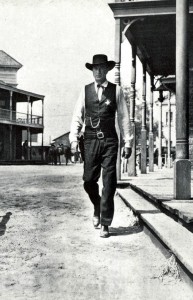 The district court has denied an interim stay of its injunction against the Obama Administration’s immigration policies; the Fifth Circuit has recently rejected, on standing grounds, a comparable case; and oral argument is set for April 17 before the Fifth Circuit on an appellate motion to stay the injunction. I was recently interviewed by Law360 about the matter and anticipate announcement by the Court of the panel for the April 17 argument in the near future.
The district court has denied an interim stay of its injunction against the Obama Administration’s immigration policies; the Fifth Circuit has recently rejected, on standing grounds, a comparable case; and oral argument is set for April 17 before the Fifth Circuit on an appellate motion to stay the injunction. I was recently interviewed by Law360 about the matter and anticipate announcement by the Court of the panel for the April 17 argument in the near future.
A law firm and its client arbitrated a fee dispute. While the arbitrators ruled for the firm, the district court vacated the award as to the contingent fee on the grounds that the fee was unconscionable. The Fifth Circuit reinstated the arbitration award, noting the “extraordinarily narrow” standard of review and the arbitrators’ specific fact findings on the relevant considerations. Campbell Harrison & Dagley LLP v. Hill, No. 14-10631 (April 2, 2015, unpublished). The Court acknowledged, but concluded that it did not need to address, the question whether the ability to vacate an arbitration award on public policy grounds survived Hall Street Associates v. Mattel, 128 S. Ct. 1396 (2008).
Can you believe it is April 2015 already? To review the “top five” opinions from the Fifth Circuit in the area of business litigation from the first quarter, please click here — better-formatted compared to the standard WordPress ordinarily used by the blog.
In Wellness Wireless, Inc. v. Infopia America, LLC, the district court dismissed a suit on a note for lack of subject matter jurisdiction, noting the potential effect on the estate of a company in bankruptcy. The Fifth Circuit faulted this reasoning as “plainly wrong,” noting that Article III courts have jurisdiction over bankruptcy matters and simply refer them to bankruptcy courts as a matter of course. The Court also disagreed as to an alternative ground for dismissal, based on the debtor being a necessary party under Fed. R. Civ. P. 19, noting that the debtor had disclaimed any interest in the funds at issue during the bankruptcy case. No. 14-20024 (March 24, 2015, unpublished).
Satterwhite appealed an adverse ruling from the bankruptcy court, and then to the district court. In the district court, after judgment, he filed a motion for new trial, to modify the judgment, and for findings of fact and conclusions of law. After the trial court denied those motions, he filed a notice of appeal that would have been timely in an “ordinary” appeal under Fed. R. App. P. 4. Unfortunately, this bankruptcy appeal fell under Fed. R. App. P. 6, which only allows a motion for rehearing filed within 14 days of judgment to extend the appellate deadline. Satterwhite v. Guin, No. 14-20430 (March 31, 2015, unpublished).
 In a remarkably tangled construction dispute, the property owner interpleaded roughly $260,000, after a dispute arose between the general contractor and a sub. One of the interpleaded parties argued that the owner “faces only separate obligations,” augmented by the fact that the Mississippi statute relied upon the subcontractor to freeze the funds was declared unconstitutional. Auto Parts Manufacturing Mississippi, Inc. v. King Construction of Houston, No. 14-60217 (May 8, 2015). The Fifth Circuit disagreed: “The first stage of interpleader only is concerned with whether multiple claims have been asserted, or may be asserted, against a disinterested stakeholder, not whether those claims have merit.” The Court reminded that “interpleader jurisdiction is determined at the time the interpleader complaint is filed . . . ‘and subsequent events do not divest the court of jurisdiction once properly acquired.'”
In a remarkably tangled construction dispute, the property owner interpleaded roughly $260,000, after a dispute arose between the general contractor and a sub. One of the interpleaded parties argued that the owner “faces only separate obligations,” augmented by the fact that the Mississippi statute relied upon the subcontractor to freeze the funds was declared unconstitutional. Auto Parts Manufacturing Mississippi, Inc. v. King Construction of Houston, No. 14-60217 (May 8, 2015). The Fifth Circuit disagreed: “The first stage of interpleader only is concerned with whether multiple claims have been asserted, or may be asserted, against a disinterested stakeholder, not whether those claims have merit.” The Court reminded that “interpleader jurisdiction is determined at the time the interpleader complaint is filed . . . ‘and subsequent events do not divest the court of jurisdiction once properly acquired.'”
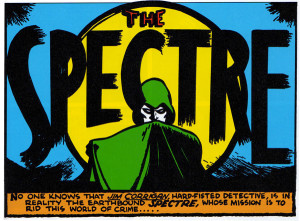 In St. Joseph Abbey v. Castille, the Fifth Circuit affirmed a substantive due process challenge to a state law that stopped a group of monks from making funeral caskets. The Court explained the limits of that holding and noted: “Nor is the ghost of Lochner lurking about.” 712 F.3d 215, 227 (5th Cir. 2013). Confirming that such a phantom still does not haunt the Circuit, the Court rejected First Amendment and due process challenges to a Texas law that requires a veterinarian to physically examine an animal before treating it (and which thus prohibits “distance” treatment via the Internet.) The Court found a rational connection between the law and quality animal care, and noted: “The idea that content-neutral regulation of the professional-client relationship does not violate the First Amendment has deep roots, and has been embraced by many circuits.” Hines v. Alldredge, No. 14-40403 (March 27, 2015).
In St. Joseph Abbey v. Castille, the Fifth Circuit affirmed a substantive due process challenge to a state law that stopped a group of monks from making funeral caskets. The Court explained the limits of that holding and noted: “Nor is the ghost of Lochner lurking about.” 712 F.3d 215, 227 (5th Cir. 2013). Confirming that such a phantom still does not haunt the Circuit, the Court rejected First Amendment and due process challenges to a Texas law that requires a veterinarian to physically examine an animal before treating it (and which thus prohibits “distance” treatment via the Internet.) The Court found a rational connection between the law and quality animal care, and noted: “The idea that content-neutral regulation of the professional-client relationship does not violate the First Amendment has deep roots, and has been embraced by many circuits.” Hines v. Alldredge, No. 14-40403 (March 27, 2015).
 In Angus Chemical Co. v. Glendora Plantation, Inc., an industrial facility had an easement that gave it “the right to construct, maintain, inspect, operate, protect, alter, repair, replace and change” a pipeline. No. 14-30416 (March 24, 2015). The company plugged and abandoned its original 12″ pipeline in favor of a new 16″ one. The key appellate issue was whether the right to “replace” a pipeline allowed the company to simply substitute one pipeline for another, or whether it also “impl[ied] a corresponding duty to remove” the old one. The Fifth Circuit found the term “replace” was ambiguous in this context, and that there was a material fact issue in the extrinsic evidence about which meaning should prevail. Therefore, it reversed the district court’s summary judgment in favor of the chemical company. This topic — the role of extrinsic evidence in contract disputes — was most recently before the Court in a major case in the “Whoomp! There it is” litigation, and as detailed in a link from that post, frequently leads to disagreement between the trial courts and the Fifth Circuit.
In Angus Chemical Co. v. Glendora Plantation, Inc., an industrial facility had an easement that gave it “the right to construct, maintain, inspect, operate, protect, alter, repair, replace and change” a pipeline. No. 14-30416 (March 24, 2015). The company plugged and abandoned its original 12″ pipeline in favor of a new 16″ one. The key appellate issue was whether the right to “replace” a pipeline allowed the company to simply substitute one pipeline for another, or whether it also “impl[ied] a corresponding duty to remove” the old one. The Fifth Circuit found the term “replace” was ambiguous in this context, and that there was a material fact issue in the extrinsic evidence about which meaning should prevail. Therefore, it reversed the district court’s summary judgment in favor of the chemical company. This topic — the role of extrinsic evidence in contract disputes — was most recently before the Court in a major case in the “Whoomp! There it is” litigation, and as detailed in a link from that post, frequently leads to disagreement between the trial courts and the Fifth Circuit.
The plaintiffs have responded to the United States’ motion for a stay during the pendency of Texas v. United States, No. 15-40238, so that matter is now in the hands of the Court.
Pursuant to section 965 of the Internal Revenue Code, BMC Software repatriated to the United States several hundred million dollars of income earned by a foreign subsidiary. It earned a substantial tax deduction for the year, as this provision is intended to incentivise the fresh investment of foreign cash into the U.S. by companies with international operations. BMC Software v. Commissioner of Internal Revenue, No. 13-60684 (March 13, 2015). Some time later, BMC settled a dispute about the tax treatment of royalties paid to it by the same subsidiary. The IRS then took the position that BMC’s accounting for that dispute amounted to a loan, which would lead to the disallowal of some of the section 965 deduction (loaning money to a subsidiary who then returns it to the US would not be fresh investment). The Fifth Circuit rejected that position and reversed the Tax Court, finding no support for it in either the statute or the settlement document. Because the accounts receivable created as a result of the settlement were not created until after the applicable tax year, the statutory exception for loaned funds could not apply.
At issue in North Cypress Medical Center Operating Co. v. Cigna Healthcare was a basic aspect of the structure of a “preferred provider” insurance program. Under the many policies at issue, “in-network” providers receive more reimbursement than “out-of-network” ones, as an incentive to seek treatment in-network. With respect to the portion of the bill as to which patients had responsibility, certain providers provided “prompt pay” discounts. Insurers disputed whether they were then still responsible for the entire billed amount, or should have their responsibility reduced by a corresponding discount. The Fifth Circuit found that the patients, and thus the providers to whom they assigned their claims, had standing to litigate about this situation (reversing a district court ruling to the contrary). It also found that ERISA preempted state law claims about these issues, that limitations applied (without tolling) to compulsory counterclaims by insurers that sought affirmative relief rather than recoupment, and affirmed the dismissal of RICO claims by the provider. The litigation seems likely to continue, and to produce more issues about complicated and significant ERISA and procedural points. No. 12-20695 (March 10, 2015).
 Allstate did not request a jury trial in its original complaint, but did in response to the defendant’s answer and counterclaim (which also included a jury demand, and which Allstate was entitled to rely upon). After a summary judgment ruling, Allstate made a limited jury waiver on the remaining issue of damages. The district court then vacated its summary judgment ruling and held a bench trial on all issues in the case — liability and damages.
Allstate did not request a jury trial in its original complaint, but did in response to the defendant’s answer and counterclaim (which also included a jury demand, and which Allstate was entitled to rely upon). After a summary judgment ruling, Allstate made a limited jury waiver on the remaining issue of damages. The district court then vacated its summary judgment ruling and held a bench trial on all issues in the case — liability and damages.
The Fifth Circuit found that, “[a]lthough deference is generally accorded to a trial judge’s interpretation of a pretrial order,” this was “[a]t the very least . . a ‘doubtful situation'” that did not support the finding of “a knowing and voluntary relinquishment of the right” to jury trial pursuant to the Seventh Amendment. The Court also found harm because Allstate’s case could survive a JNOV motion, noting that “the district court relied heavily on its weighing of the credibility of the witness’s testimony at trial” in its fact finding. Accordingly, the Court reversed and remanded for jury trial. Allstate Ins. Co. v. Community Health Center, Inc., No. 14-30506 (March 16, 2015, unpublished).
I am speaking to the Appellate Section of the Dallas Bar Association, at the Belo Mansion in downtown Dallas, at noon on Thursday March 19, with a Fifth Circuit update. The official title is “Horses, Whooping Cranes, and Eagle Feathers: the Fifth Circuit in 2014.” Here is a copy of the PowerPoint for the presentation.
Jefferson sued Delgado Community College, alleging that it was “an agency or instrumentality of the government of the State of Louisiana.” The Louisiana Attorney General appeared for the State, argued that she had not correctly named the State in the case, and suggested how to properly serve the college. Jefferson v. Delgado Community College, No. 14-30379 (March 12, 2015, unpublished). The district court denied the AG’s motion to dismiss, pointing to what the pleading said. The AG sought appellate review and the Fifth Circuit found it had no jurisdiction. The ruling was not appealable as a collateral order: “For example, personal jurisdiction implicates a defendant’s due process rights, but a defendant may not appeal the denial of a motion to dismiss based on lack of personal jurisdiction under the collateral order rule.” The Court also denied mandamus relief, noting that the district court’s ruling was not clearly erroneous given the language of the pleading, and suggesting that the parties may wish to consider the AG’s suggestion about proper service for future proceedings in the case.
Breaux sued ASC Industries for age discrimination, but died before the case resolved. Her attorney, Oglesby, filed a “suggestion of death” pursuant to Fed. R. Civ. P. 25. ASC then obtained dismissal when the 90-day period set by that rule passed with no substitution. Breaux’s estate then sought reinstatement, pointing out that the estate representative had not been personally served pursuant to Fed. R. Civ. P. 4 (Rule 25 provides that: “A motion to substitute, together with a notice of hearing, must be served on the parties as provided in Rule 5 and on nonparties as provided in Rule 4. A statement noting death must be served in the same manner.”) ASC countered that Oglesby also represented the estate. The Fifth Circuit sided with Breaux’s estate, finding that a personal representative is a nonparty under Rule 25, noting that is the majority position among Circuits, and distinguishing other cases that reached arguably inconsistent conclusions. Sampson v. ASC Industries, 14-10085 (March 13, 2015, unpublished).
After initially holding that the borrowers’ complaint survived a Twombly challenge as to whether the “grossly inadequate sales price” element of a wrongful foreclosure claim had been properly pleaded, the Fifth Circuit reversed field and issued a revised opinion that affirms dismissal: “We agree with the district court that Plaintiffs’ wrongful foreclosure claim should be dismissed, but for a different reason—Plaintiff’s abandoned the claim on appeal. In challenging the district court’s dismissal, Plaintiffs did not argue that their wrongful foreclosure claim should survive because they adequately pleaded a grossly inadequate sales price. They only argued that the claim should survive because they need not plead that element at all. However, our precedent requires this element in all but a specific category of cases that does not include the instant case.” Guajardo v. JP Morgan Chase, No. 13-51025 (March 10, 2015).
 Allen Stanford spent close to $6 million advertising his investment firm on the Golf Channel. After his empire collapsed, the receiver sued the Golf Channel under the Texas fraudulent transfer statute. The Channel successfully defended in the district court on the ground that it gave reasonably equivalent value. Janvey v. The Golf Channel, No. 13-11305 (March 11, 2015). Unfortunately for the Channel, because the receiver proved Stanford was running a Ponzi scheme, the question was whether it gave value from the perspective of the creditors, not whether it provided quality advertising from the perspective of Stanford’s business operation. “Golf Channel argues that its advertising services did not further the Stanford Ponzi scheme and that the $5.9 million reasonably represents the market value of those services. . . . TUFTA makes no distinction between different types of services or different types of transferees, but requires us to look at the value of any services from the creditors’ perspective. We have no authority to create an exception for ‘trade creditors.'” Accordingly, the Fifth Circuit reversed.
Allen Stanford spent close to $6 million advertising his investment firm on the Golf Channel. After his empire collapsed, the receiver sued the Golf Channel under the Texas fraudulent transfer statute. The Channel successfully defended in the district court on the ground that it gave reasonably equivalent value. Janvey v. The Golf Channel, No. 13-11305 (March 11, 2015). Unfortunately for the Channel, because the receiver proved Stanford was running a Ponzi scheme, the question was whether it gave value from the perspective of the creditors, not whether it provided quality advertising from the perspective of Stanford’s business operation. “Golf Channel argues that its advertising services did not further the Stanford Ponzi scheme and that the $5.9 million reasonably represents the market value of those services. . . . TUFTA makes no distinction between different types of services or different types of transferees, but requires us to look at the value of any services from the creditors’ perspective. We have no authority to create an exception for ‘trade creditors.'” Accordingly, the Fifth Circuit reversed.
With a stay motion still pending in the district court, the United States has asked the Fifth Circuit for an emergency stay of the recent ruling that enjoins President Obama’s immigration program. No. 15-40238. A short clerk’s order, which does not reveal the identity or involvement of any judge “behind the curtain,” has set a response date of March 23. Law360 has written a good article with more detail about the current status in the district court.
In November, a Fifth Circuit panel affirmed the NLRB’s $30,000 award in a retaliation case based on the employer’s handling of a whistleblower. Halliburton Co. v. Administratve Review Board, U.S. Dep’t of Labor, No. 13-60323. The full court has now denied the petition for en banc review, by the close margin of 7 judges for review and 8 against. A 3-judge dissent criticizes the “ad hoc nature” of the panel opinion and warns that it will lead to confusion about what specific conduct can amount to a materially adverse employment action in the context of a retaliation claim.
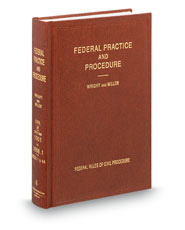 Fed. R. Civ. P. 60, titled “Grounds for Relief from a Final Judgment, Order, or Proceeding,” is generally invoked to vacate a judgment because of alleged misconduct, mistake, newly-discovered evidence, or other equitable reasons. Clause (5) of that rule also allows relief if “the judgment has been satisfied, released, or discharged; it is based on an earlier judgment that has been reversed or vacated; or applying it prospectively is no longer equitable.” That provision — and specifically, its rarely-litigated first clause — was at issue in Frew v. Janek, in which the Texas Health and Human Services Commission argued that it had fully performed under a consent decree related to the operation of a Medicaid program. No. 14-40048 (March 5, 2015). Construing the decree “according to ‘general principles of contract interpretation,'” and declining to apply the law of the case doctrine to the interpretation of the decree by the judge who entered the order, the Fifth Circuit found no error in the district court’s ruling that the defendants had complied with the order and performed fully.
Fed. R. Civ. P. 60, titled “Grounds for Relief from a Final Judgment, Order, or Proceeding,” is generally invoked to vacate a judgment because of alleged misconduct, mistake, newly-discovered evidence, or other equitable reasons. Clause (5) of that rule also allows relief if “the judgment has been satisfied, released, or discharged; it is based on an earlier judgment that has been reversed or vacated; or applying it prospectively is no longer equitable.” That provision — and specifically, its rarely-litigated first clause — was at issue in Frew v. Janek, in which the Texas Health and Human Services Commission argued that it had fully performed under a consent decree related to the operation of a Medicaid program. No. 14-40048 (March 5, 2015). Construing the decree “according to ‘general principles of contract interpretation,'” and declining to apply the law of the case doctrine to the interpretation of the decree by the judge who entered the order, the Fifth Circuit found no error in the district court’s ruling that the defendants had complied with the order and performed fully.
I just wrote an article in the most recent Appellate Advocate – the publication of the Texas State Bar Appellate Section – about the key recent cases from the Fifth Circuit about jury charge error. I hope you enjoy it and find it useful in your practice!
Richardson alleged that he was terminated, in violation of Louisiana’s whistleblower statute, for revealing fraudulent time records and overbilling. The district court granted summary judgment and the Fifth Circuit reversed. Richardson v. Axion Logistics, No. 14-30306 (revised March 23, 2015). Applying the Twombly “plausibility” standard, the Court found adequate pleading about his employer’s knowledge of the alleged misconduct, as well as the timeline of events leading up to his termination. The pleading itself is available for review here; the specific paragraphs identified by the Court as to the employer’s knowledge are highlighted in yellow, and those identified about his termination in orange.
 The L/B Nicole Eymard (right) became stuck while servicing a well in the Gulf of Mexico. The owner of the boat sued the contractor that hired the boat, in addition to the well owner, and both were found liable for charter fees while the vessel was unable to move. The well owner obtained indemnity from the contractor because the contractor had agreed to indemnify it for
The L/B Nicole Eymard (right) became stuck while servicing a well in the Gulf of Mexico. The owner of the boat sued the contractor that hired the boat, in addition to the well owner, and both were found liable for charter fees while the vessel was unable to move. The well owner obtained indemnity from the contractor because the contractor had agreed to indemnify it for  claims “based upon personal injury or death or property damage or loss.” Unpaid charter fees are a “loss” within the meaning of that language, even without proof of damage to property. Offshore Marine Contractors, LLC v. Palm Energy Offshore, LLC, No. 14-30059 (March 2, 2015).
claims “based upon personal injury or death or property damage or loss.” Unpaid charter fees are a “loss” within the meaning of that language, even without proof of damage to property. Offshore Marine Contractors, LLC v. Palm Energy Offshore, LLC, No. 14-30059 (March 2, 2015).
An insurer settled with its insured; the settlement “did not contain an admission of liability under the Policy and both parties dispute whether the Policy covered the four claims at issue.” Accordingly, the insured had no claim under the Texas Prompt Payment Act for an alleged breach of the settlement. Tremago, L.P. v. Euler-Hermes American Credit Indemnity Co., No. 13-41179 (Feb. 25, 2015, unpublished). The Court also found that a trio of statements such as “[Plainitff] has not alleged, let alone proffered any evidence of any act on [Defendant’s] part that fairly can be characterized as ‘so extreme’ that it would cause ‘injury independent of the policy claim’ was sufficient to place the plaintiff on notice that its extra-contractual claims were within the scope of the defendant’s summary judgment motion.
 A design firm proved at trial that Hallmark Design Homes built hundreds of houses such as the one on the right, using its copyrighted plans without permission. Hallmark filed for bankruptcy; the remaining issue was whether the claim was “advertising injury” under Mid-Continent’s various liability policies. Mid-Continent Casualty Co. v. Kipp Flores Architects, LLC, No. 14-50649 (Feb. 26, 2015, unpublished).
A design firm proved at trial that Hallmark Design Homes built hundreds of houses such as the one on the right, using its copyrighted plans without permission. Hallmark filed for bankruptcy; the remaining issue was whether the claim was “advertising injury” under Mid-Continent’s various liability policies. Mid-Continent Casualty Co. v. Kipp Flores Architects, LLC, No. 14-50649 (Feb. 26, 2015, unpublished).
The Fifth Circuit affirmed judgment for the insured. After reminding that additional evidence can be offered in a coverage dispute about matters addressed in a prior lawsuit, the Court held: “[I]t is undisputed that Hallmark’s primary means of marketing its construction business was through the use of the homes themselves, both through model homes and yard signs on the property of infringing homes it had built, all of which were marketed to the general public . . . .” Because the homes themselves were “advertisements,” Mid-Continent’s policies covered the prior judgment.
(This post’s title comes from an exchange between Falstaff and Mistress Ford in The Merry Wives of Windsor.)
 As part of a sale transaction, the board of “Gold Kist” (more widely known as Pilgrim’s Pride), decided to abandon certain securities for no consideration. For tax purposes, the company then reported a $98.6 million ordinary loss. Pilgrim’s Pride Corp. v. Commissioner of Internal Revenue, No. 14-60295 (Feb. 25, 2015). The IRS contended that this was a capital loss, rather than an ordinary loss, creating a tax deficiency of close to $30 million. The Court agreed with the company, finding: “By its plain terms, [26 U.S.C.] § 1234A(1) applies to the termination of rights or obligations with respect to capital assets (e.g. derivative or contractual rights to buy or sell capital assets). It does not apply to the termination of ownership of the capital asset itself.” In rejecting a contrary view of the statute, Judge Elrod gives a powerful summary of several canons of construction: “We disagree. Congress does not legislate in logic puzzles . . . “
As part of a sale transaction, the board of “Gold Kist” (more widely known as Pilgrim’s Pride), decided to abandon certain securities for no consideration. For tax purposes, the company then reported a $98.6 million ordinary loss. Pilgrim’s Pride Corp. v. Commissioner of Internal Revenue, No. 14-60295 (Feb. 25, 2015). The IRS contended that this was a capital loss, rather than an ordinary loss, creating a tax deficiency of close to $30 million. The Court agreed with the company, finding: “By its plain terms, [26 U.S.C.] § 1234A(1) applies to the termination of rights or obligations with respect to capital assets (e.g. derivative or contractual rights to buy or sell capital assets). It does not apply to the termination of ownership of the capital asset itself.” In rejecting a contrary view of the statute, Judge Elrod gives a powerful summary of several canons of construction: “We disagree. Congress does not legislate in logic puzzles . . . “
In 2012, the Fifth Circuit remanded a False Claims Act case with the direction: “The district court should determine whether the public disclosures identified in the motion for summary judgment reveal either (i) that Shell was deducting gathering expenses prohibited by program regulations, or (ii) that this type of fraud was so pervasive in the industry that the company’s scheme, as alleged, would have been easily identified.” Little v. Shell Exploration, 690 F.3d 282 (5th Cir. 2012). On remand, the district court again granted summary judgment for the defense, and a displeased Fifth Circuit reversed. Little v. Shell Exploration II, No. 14-20156 (Feb. 23, 2015, unpublished).
The Court found: “Not only did the district court fail to follow these explicit instructions, but the analysis set out in its short opinion is so broad, conclusory, and unsupported by the summary judgment record that we are compelled to conclude it did not comply with our instructions.” On the merits, the Court held that “the district court erred with respect to every category of supposed public disclosures.” The Court went on to order reassignment to a different district judge on remand, concluding: ” Facing a lengthy and detailed summary judgment record, the district judge issued a five-page opinion with few
citations to either record evidence or relevant legal authority—not surprising given that neither the summary judgment evidence nor the law support the conclusions he reached.”
The Fifth Circuit has now docketed the federal government’s appeal of the recent ruling that enjoins President Obama’s immigration program; meanwhile, in the district court, the plaintiffs’ response to the federal government’s motion to stay pending appeal is due by March 2.
 Pennzoil has several well-known trademarks for its motor oil products. It sued Miller Oil, which operates a quick-stop oil change facility in Houston, for infringing those marks. Miller defended on the ground that after its original contract with Pennzoil lapsed in 2003, Pennzoil’s dealings with Miller amounted to an acquiescence in Miller’s use of the marks. The district court agreed but the Fifth Circuit reversed. Pennzoil-Quaker State Co. v. Miller Oil & Gas Operations, No. 13-20558 (Feb. 23, 2015).
Pennzoil has several well-known trademarks for its motor oil products. It sued Miller Oil, which operates a quick-stop oil change facility in Houston, for infringing those marks. Miller defended on the ground that after its original contract with Pennzoil lapsed in 2003, Pennzoil’s dealings with Miller amounted to an acquiescence in Miller’s use of the marks. The district court agreed but the Fifth Circuit reversed. Pennzoil-Quaker State Co. v. Miller Oil & Gas Operations, No. 13-20558 (Feb. 23, 2015).
The Court thoroughly reviewed its own, and other Circuits’, approaches to the elements of the acquiescence defense, as well as the relationship of that defense to laches. The Court concluded that an element of the defense was undue prejudice to the defendant from the plaintiff’s conduct, which usually involves “some form of ‘business building.'” Here, the defendant’s expenses associated with removing Pennzoil’s marks did not  satisfy that requirement, because they would not be related to business expansion. While the defendant’s claim about a “loss of identity” from removing Pennzoil’s marks could qualify, on this record: “Miller Oil does not proffer evidence of, for example, changes in its customer base, higher profits, or new business opportunities it was able to exploit because of the re-brand.” Accordingly, Miller Oil did not meet its burden of proof.
satisfy that requirement, because they would not be related to business expansion. While the defendant’s claim about a “loss of identity” from removing Pennzoil’s marks could qualify, on this record: “Miller Oil does not proffer evidence of, for example, changes in its customer base, higher profits, or new business opportunities it was able to exploit because of the re-brand.” Accordingly, Miller Oil did not meet its burden of proof.
 In Frey v. First National Bank Southwest, No. 13-10375 (Feb. 20, 2015), an appeal that was stayed in deference to the ruling in Mabary v. Home Town Bank, N.A., 771 F.3d 820 (5th Cir. 2014), the Fifth Circuit again affirmed the certification of a class related to notice requirements about ATM fees: “The primary questions with regard to First National’s liability are whether and when First National failed to provide the on-machine fee notice in violation of the EFTA’s requirements during the class period; if so, the appropriate amount of statutory damages; and whether the bank can avail itself of either of the two statutory defenses to liability. The answers to these questions will affect all class member’s claims.”
In Frey v. First National Bank Southwest, No. 13-10375 (Feb. 20, 2015), an appeal that was stayed in deference to the ruling in Mabary v. Home Town Bank, N.A., 771 F.3d 820 (5th Cir. 2014), the Fifth Circuit again affirmed the certification of a class related to notice requirements about ATM fees: “The primary questions with regard to First National’s liability are whether and when First National failed to provide the on-machine fee notice in violation of the EFTA’s requirements during the class period; if so, the appropriate amount of statutory damages; and whether the bank can avail itself of either of the two statutory defenses to liability. The answers to these questions will affect all class member’s claims.”
The Fifth Circuit has withdrawn its high-profile opinion (as to damages) in Forte v. Wal-Mart Stores, which found that civil penalties were not available absent actual damages in a suit under a Texas statutory cause of action about optometry. The controlling issues have now been certified to the Texas Supreme Court.
 Superior MRI Services sued for tortious interference with contract; the defendant argued that Superior lacked standing because it never acquired rights under the relevant contracts, and the Fifth Circuit agreed. Superior MRI Services, Inc. v. Alliance Imaging, Inc., No. 14-60087 (Feb. 18, 2015). The record showed that P&L Imaging, a bankruptcy debtor, listed “MRI service agreements” on its schedule of assignments to Superior, with an assignment date of October 1, 2011. Superior, however, did not exist as a legal entity until November 28, 2011. No evidence showed that Superior ratified the contract after its formation, and the Court was unwilling to accept Mississippi’s approval of Superior as a vendor as evidence of a ratification. The Court distinguished the recent case of Lexmark, Int’l v. Static Control Components, 134 S. Ct. 1377 (2014), as relating to another aspect of the standing requirement.
Superior MRI Services sued for tortious interference with contract; the defendant argued that Superior lacked standing because it never acquired rights under the relevant contracts, and the Fifth Circuit agreed. Superior MRI Services, Inc. v. Alliance Imaging, Inc., No. 14-60087 (Feb. 18, 2015). The record showed that P&L Imaging, a bankruptcy debtor, listed “MRI service agreements” on its schedule of assignments to Superior, with an assignment date of October 1, 2011. Superior, however, did not exist as a legal entity until November 28, 2011. No evidence showed that Superior ratified the contract after its formation, and the Court was unwilling to accept Mississippi’s approval of Superior as a vendor as evidence of a ratification. The Court distinguished the recent case of Lexmark, Int’l v. Static Control Components, 134 S. Ct. 1377 (2014), as relating to another aspect of the standing requirement.
 Pearl Seas sued Lloyd’s Register North America (“LRNA”) for inadequate performance in certifying a cruise ship (the “Pearl Mist,” seen to the right.) LRNA moved to dismiss on the grounds of forum non conveniens in favor of England, citing a forum selection clause contained in its rules. The district court denied the motion without explanation and the Fifth Circuit reversed in a 2-1 panel opinion. In re Lloyd’s Register North America, Inc.. No. 14-20554 (Feb. 24, 2015), re-released after initial publication as a per curiam opinion on February 18.
Pearl Seas sued Lloyd’s Register North America (“LRNA”) for inadequate performance in certifying a cruise ship (the “Pearl Mist,” seen to the right.) LRNA moved to dismiss on the grounds of forum non conveniens in favor of England, citing a forum selection clause contained in its rules. The district court denied the motion without explanation and the Fifth Circuit reversed in a 2-1 panel opinion. In re Lloyd’s Register North America, Inc.. No. 14-20554 (Feb. 24, 2015), re-released after initial publication as a per curiam opinion on February 18.
The Court held: (1) as in the case of In re: Volkswagen, 545 F.3d 304 (5th Cir. 2008) (en banc), which involved the denial of a motion to transfer venue, mandamus is appropriate in the context of forum non conveniens; (2) it is an abuse of discretion to “grant or deny a[n FNC] motion without written or oral explanation” as to the relevant factors; and (3) the plaintiff was plainly bound by LRNA’s rules under the doctrine of direct-benefit estoppel, since its claim “referenced duties that must be resolved by reference to the classification society’s rules.” (citing Hellenic Inv. Fund v. Det Norkse Veritas, 464 F.3d 514 (5th Cir. 2006)). (A panel reached a similar result in Vloeibare Pret Limited v. Lloyd’s Register North America, Inc., No. 14-20538 (April 16, 2015, unpublished).
A dissent by Judge Elrod argued that the majority’s analysis of direct-benefit estoppel expanded the Court’s prior holdings in two areas — the degree to which the claim incorporated the relevant rules, and the timing of when the plaintiff learns of the rules. The dissent also expressed concern that the substantive claim would not be recognized in England.
The point of division between the majority and dissent — whether an error is “clear” or not — resembles a similar split between the majority and dissent in the mandamus case of In re Radmax, 720 F.3d 285 (5th Cir. 2013), which granted the writ as to the erroneous denial of an “intra-district” motion to transfer venue. Interestingly, Judge Higginson was the dissenter in Radmax, and also dissented from the denial of en banc review of that panel opinion, while here he forms part of the two-judge majority that grants mandamus relief. Judge Smith, who was in the majority of the Radmax panel opinion, is the author of this opinion after its initial release as per curiam.
In the case of In re Deepwater Horizon, the Texas Supreme Court has answered the certified questions raised in a significant insurance case about BP’s coverage related to the Deepwater Horizon disaster. (No. 130670, Tex. Feb. 13, 2015.) The issue is whether BP was an additional insured under policies obtained by Transocean, the operator of the ill-fated rig. Applying Evanston Ins. Co. v. ATOFINA Petrochemicals, Inc., 256 S.W.3d 660 (Tex. 2008), the Court held that “it is possible for a named insured to purchase a greater amount of coverage for an additional insured than an underlying service contract requires,” and that “the scope of indemnity and insurance clauses in service contracts is not necessarily congruent.” From that foundation, the court concluded: “The Drilling Contract required Transocean to name BP as an additional insured only for the liability Transocean assumed under the contract. Accordingly, Transocean had separate duties to indemnify and insure BP for certain risk, but the scope of that risk for either indemnity or insurance purposes extends only to above-surface pollution.”
Monday evening, a district judge in South Texas enjoined President Obama’s immigration program; the full text of his opinion is available here. (The case has the remarkably awkward caption of “Texas v. United States.”) An appeal has not yet been docketed with the Fifth Circuit. As with the recent gay marriage arguments, the makeup of the panel will be critical to the resolution of this extremely important case. The Washington Post story is a good example of the media coverage of the ruling.
Fernando Ramirez died after a beating by security guards at a nightclub. His estate sued the guards and the business that owned the club, as well as subsequent owners, alleging a scheme to hide assets. This lawsuit led to an insurance coverage dispute between the subsequent owners and the CGL carrier at the time of the incident. Colony Ins. Co. v. Price, No. 14-10317 (Feb. 12, 2015, unpublished). The specific allegations against the later owners in the underlying suit are far from clear, and appear to be obscured by broad use of the term “Defendants.” Nevertheless, the district court and Fifth Circuit agreed that these parties were not covered as “employees” under the policy: “Most obviously, the Price Defendants fail to explain how MTP and TOM, a partnership and a limited liability company, can be employees at all, let alone employees who falsely imprisoned Ramirez on October 1, 2008, particularly given that the Petition alleges that they were not formed until December 31 of the following year.”
1. I am speaking at the Dallas Bar Appellate Section meeting on March 19 at the Belo Mansion, with an update on recent Fifth Circuit opinions of general interest.
2. This year’s Super Lawyers nomination deadline is Wednesday, February 18 (two days from now). Take a few minutes to support the publication and your colleagues; the nomination form is here.
The defendants in a wrongful foreclosure case removed and the district court dismissed the borrower’s claims on the pleadings. The Fifth Circuit reversed for jurisdictional reasons. Smith v. Bank of America, No. 14-50256 (revised March 20, 2015, unpublished).
As to diversity jurisdiction, which was based on improper joinder of several defendants, the Court reminded: “[W]hen confronted with an allegation of improper joinder, the court must determine whether the removing party has discharged its substantial burden before proceeding to analyze the merits of the action.”
‘Blanton sued for employment discrimination, and after trial, “[t]here is no question that Blanton was subjected to egregious verbal sexual and racial harassment by the general manager of the Pizza Hut store where he worked.” Blanton v. Newton Associates, Inc., No. 14-50087 (Feb. 10, 2015, unpublished). The issue on appeal was whether the employer had established “the Ellerth/Faragher affirmative defense”; essentially, that the employer acted reasonably to stop the harassment and the employee unreasonably failed to enlist the employer’s aid. The evidence showed a lack of training about the employer’s anti-discrimination policies, and that two low-level supervisors hesitated to report the harassment for fear of retaliation by the general manager, but that “[o]nce Blanton did complain to a manager with authority over the general manager, Pizza Hut completed an investigation and fired her within four days.” Accordingly, the verdict and resulting judgment for the employer was affirmed.
 The issue in Lowman v. Jerry Whitaker Timber Contractors, LLC was whether certain timber companies had vicarious liability for allegedly unlawful logging activities, in DeSoto Parish, Louisiana, in violation of that state’s timber cutting statute. Evidence showed that the loggers sold timber to the mills and in return received a “scale ticket” — a sort of commercial paper that can be bought and sold and allows small loggers immediate access to sale proceeds — which featured a description of the wood. Plaintiffs offered an affidavit from a state investigator who described the defendants’ “prior schemes involving the theft of timber and the falsifying of scale tickets,” and opined that he saw “‘the same pattern’ of activity” here. The Fifth Circuit affirmed summary judgment for the defendants, finding that the evidence showed no connection between the tickets he reviewed and the timber at issue, much less any “right of control or supervision” by the defendants over the loggers. No. 14-30787 (Feb. 10, 2015, unpublished).
The issue in Lowman v. Jerry Whitaker Timber Contractors, LLC was whether certain timber companies had vicarious liability for allegedly unlawful logging activities, in DeSoto Parish, Louisiana, in violation of that state’s timber cutting statute. Evidence showed that the loggers sold timber to the mills and in return received a “scale ticket” — a sort of commercial paper that can be bought and sold and allows small loggers immediate access to sale proceeds — which featured a description of the wood. Plaintiffs offered an affidavit from a state investigator who described the defendants’ “prior schemes involving the theft of timber and the falsifying of scale tickets,” and opined that he saw “‘the same pattern’ of activity” here. The Fifth Circuit affirmed summary judgment for the defendants, finding that the evidence showed no connection between the tickets he reviewed and the timber at issue, much less any “right of control or supervision” by the defendants over the loggers. No. 14-30787 (Feb. 10, 2015, unpublished).
An attorney challenged sanctions and contempt orders on appeal; one of her major points was inability to pay. The Fifth Circuit reminded that inability to pay is a defense to a charge of civil contempt, as to which “[t]he alleged contemnor bears the burden of producing evidence of his inability to comply. Failure to do so waives further consideration of this issue, even in the face of an order that added $100/day for noncompliance. Garrett v. Coventry, No. 14-10525 (Feb. 6, 2015).
 BNSF Railway Co. v. Alstom Transportation presented a challenge to an arbitration award, in a contract dispute about the maintenance of rail cars. No. 13-11274 (Feb. 5, 2015). The Fifth Circuit brushed aside a number of challenges to the arbitrator’s legal analysis, quoting the Seventh Circuit: “As we have said too many times to want to repeat again, the question for decision by a federal court asked to set aside an arbitration award . . . is not whether the arbitrator or arbitrators erred in interpreting the contract; it is not whether they clearly erred in interpreting the contract; it is not whether they grossly erred in interpreting the contract; it is whether they interpreted the contract.”
BNSF Railway Co. v. Alstom Transportation presented a challenge to an arbitration award, in a contract dispute about the maintenance of rail cars. No. 13-11274 (Feb. 5, 2015). The Fifth Circuit brushed aside a number of challenges to the arbitrator’s legal analysis, quoting the Seventh Circuit: “As we have said too many times to want to repeat again, the question for decision by a federal court asked to set aside an arbitration award . . . is not whether the arbitrator or arbitrators erred in interpreting the contract; it is not whether they clearly erred in interpreting the contract; it is not whether they grossly erred in interpreting the contract; it is whether they interpreted the contract.”
 Also, on procedural grounds, the Court rejected a challenge to the propriety of having arbitrated “gateway questions” of arbitrability. The district court had partially vacated the arbitrator’s award, the appellant (successfully) challenged that ruling, and BNSF had considerable latitude to defend it. But the “gateway” argument that arbitration should never have occurred, and that the award should thus be vacated in full, could not be presented on appeal absent a cross-appeal because it “asks for an expansion of the judgment.”
Also, on procedural grounds, the Court rejected a challenge to the propriety of having arbitrated “gateway questions” of arbitrability. The district court had partially vacated the arbitrator’s award, the appellant (successfully) challenged that ruling, and BNSF had considerable latitude to defend it. But the “gateway” argument that arbitration should never have occurred, and that the award should thus be vacated in full, could not be presented on appeal absent a cross-appeal because it “asks for an expansion of the judgment.”
In the press of year-end business, I neglected to cover a notable mandamus opinion in 2014 from the Federal Circuit, In re Google, Inc, No. 2014-147, 2014 WL 5032336 (Oct. 9, 2014). Reminiscent of that Court’s opinion in In re Genentech, 566 F.3d 1338 (2009), and the Volkswagen/Radmax line of cases from the Fifth Circuit, In re: Google addresses the denial of a motion to transfer patent litigation from the Eastern District of Texas.
The district court focused on “each defendant mobile phone manufacturer’s ability to modify and customize” the relevant platform. The Federal Circuit disagreed and granted mandamus relief, emphasizing the “substantial similarity involving the infringement and invalidity issues in all the suits.” That Court also rejected an argument based on the first-filed rule, finding that on these facts, “the equities of the situation do not depend on this argument.” (quoting Kerotest Mfg. Co. v. C-O-Two Fire Equip Co., 342 U.S. 180, 186 n.6 (1952). Concluding with a review of the practical considerations listed by 1404(a), the Court noted that the product at issue was developed in the Northern District of California, and thus the “bulk of the relevant evidence” is there as well.
In an earlier opinion, the Fifth Circuit reversed a summary judgment in favor of an insured, finding a fact issue as to whether late notice caused prejudice to the carrier. “Berkley I,” Berkley Regional Ins. Co. v. Philadelphia Indemnity Ins. Co., 690 F.3d 342 (5th Cir. 2012). After further proceedings, the district court granted summary judgment to the carrier and the Court affirmed. “Berkley II,” Berkley Regional Ins. Co. v. Philadelphia Indemnity Ins. Co., No. 13-51180 c/w No. 14-50099 (Jan. 27, 2015, unpublished). The key issue was whether notice to the broker sufficed to give notice the the carrier; the Court reasoned that even if the broker had a limited agency relationship with the carrier, notice of claims fell outside its scope: “Under the 2002 Agreement, Philadelphia expressly allowed [Agent] to act as an insurance broker and sell Philadelphia policies as Philadelphia’s representative, subject to Philadelphia’s approval. The 2002 Agreement is silent as to whether [Agent] had the ability to accept notice of claims on behalf of Philadelphia. Thus, [Agent] did not have express authority to accept notice of claims.” For the same reasons, an implied agency theory was also rejected.
 The insurance coverage case of Mt. Hawley Ins. Co. v. Advance Products & Systems, Inc. illustrates the recurring differences of opinion between the Fifth Circuit and district courts about contract ambiguity. 14-30068 (Jan. 27, 2015, unpublished). When APS made a claim on its commercial property policy with Mt. Hawley, APS’s recovery was limited by a “coinsurance provision” that applies if it “has not insured the full value of its income.” The parties differed on whether “income” referred to projected or actual net income; the district court found ambiguity, and the Fifth Circuit reversed: “Although APS has a point—the language used in calculating the coinsurance penalty is imprecise—it does not render the contract ambiguous.” Based on the relationship between this provision and other parts of the policy, and the general purposes of coinsurance clauses, the Court reversed a summary judgment for the insured.
The insurance coverage case of Mt. Hawley Ins. Co. v. Advance Products & Systems, Inc. illustrates the recurring differences of opinion between the Fifth Circuit and district courts about contract ambiguity. 14-30068 (Jan. 27, 2015, unpublished). When APS made a claim on its commercial property policy with Mt. Hawley, APS’s recovery was limited by a “coinsurance provision” that applies if it “has not insured the full value of its income.” The parties differed on whether “income” referred to projected or actual net income; the district court found ambiguity, and the Fifth Circuit reversed: “Although APS has a point—the language used in calculating the coinsurance penalty is imprecise—it does not render the contract ambiguous.” Based on the relationship between this provision and other parts of the policy, and the general purposes of coinsurance clauses, the Court reversed a summary judgment for the insured.
 Felder’s Collision Parts sells aftermarket parts for GM cars; it sued GM and several dealers in original equipment manufactured parts made by GM, alleging that they ran a pricing and rebate program (with the unfortunate name of “Bump the Competition”) that amounted to predatory pricing. The district court dismissed and the Fifth Circuit affirmed in Felder’s Collision Parts, Inc. v. All Star Advertising Agency, No. 14-30410 (Jan. 27, 2015).
Felder’s Collision Parts sells aftermarket parts for GM cars; it sued GM and several dealers in original equipment manufactured parts made by GM, alleging that they ran a pricing and rebate program (with the unfortunate name of “Bump the Competition”) that amounted to predatory pricing. The district court dismissed and the Fifth Circuit affirmed in Felder’s Collision Parts, Inc. v. All Star Advertising Agency, No. 14-30410 (Jan. 27, 2015).
Under the program, a dealer would offer a price significantly lower than the ordinary aftermarket part price. Felder’s argued the dealer was pricing beneath average variable cost — and thus engaging in predatory pricing — and offered an example of a dealer selling a part for $119 that it bought from GM for $135. The defendants pointed out that a key part of the program was a rebate to the dealer from GM based on sales, and including that rebate in the “cost” calculation turned the seeming $15 loss in this example into a 14% profit.
The Fifth Circuit agreed: “The price versus cost comparison focuses on whether the money flowing in for a particular transaction exceeds the money flowing out. The rebate undoubtedly affects that bottom line for All Star by guaranteeing that it makes a profit on any Bump the Competition sale. That undisputed fact resolves the case, as a ‘firm that is selling at a shortrun profit maximizing (or loss-minimizing) price is clearly not a predator.'” The Court acknowledged: “Felder’s no doubt is having a tougher time selling aftermarket equivalent parts for GM vehicles . . . But antitrust law welcomes those lower prices for consumers of collision parts so long as neither GM nor its dealers is selling parts at below-cost levels.” (Or, “parts is parts . . . “)
Ratliff Ready-Mix, a creditor of Barry Pledger’s construction business, argued that its claim was not dischargeable in Pledger’s bankrupcty because it arose from a violation of the Texas Construction Trust Fund Statute. Reviewing the case law about this statute and the defenses it provides, the Fifth Circuit affirmed judgment for the debtor. To overcome Pledger’s statutory affirmative defense, “Ratliff had to establish that the payments made by Pledger were not ‘actual expenses directly related to the construction.’ Specifically, Ratliff must show that (a) these were not payments made on the project or overhead, or (b) they were made for Pledger’s own uses rather than to benefit the health of his failing business.” Ratliff Ready-Mix v. Pledger, No. 14-50023 (Jan. 23, 2015, unpublished). Here, “[i]t would be hard to argue that paying taxes, repairing vehicles and equipment, and compensating employees could be categorized as anything other than maintaining the business.”
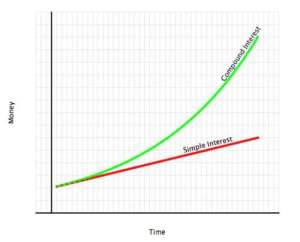 The note said: “So long as an Event of Default remains outstanding: (a) interest shall accrue at the Default Rate and, to the extent not paid when due, shall be added to the Principal Amount . . . .” The lender said this language meant that interest should be compounded, and the lower courts agreed — in the amount of almost $5 million. The borrower argued that this language only meant “that any unpaid interest will be added
The note said: “So long as an Event of Default remains outstanding: (a) interest shall accrue at the Default Rate and, to the extent not paid when due, shall be added to the Principal Amount . . . .” The lender said this language meant that interest should be compounded, and the lower courts agreed — in the amount of almost $5 million. The borrower argued that this language only meant “that any unpaid interest will be added
to the principal amount as the total debt due.” The Fifth Circuit disagreed, finding that this reading would impermissibly make the provision redundant “because it would operate only to label the accrued interest as money owed by [borrower] to [lender], and the interest was already owed. TCI Courtyard, Inc. v. Wells Fargo Bank, N.A., No. 14-10635 (Jan. 22, 2015, unpublished).
 The district court dismissed a borrower’s breach of contract claim against a mortgage servicer because the borrower was in substantial arrears, and “as a general principle . . . an individual in breach cannot bring a cause of action for breach against another contracting party.” The Fifth Circuit reversed, finding that the borrower had alleged plausible claims that the servicer breached first; specially, that “the misapplication of [the borrrower’s] payments to an escrow account, resulting in default . . . constituted a material breach,” and that “Chase’s rejection of her mortgage payments, even if not a material breach, rendered performance impossible and that, as a result, any subsequent breach does not bar her claim.” Peters v. JP Morgan Chase, No. 13-50157 (Jan. 23, 2015, unpublished).
The district court dismissed a borrower’s breach of contract claim against a mortgage servicer because the borrower was in substantial arrears, and “as a general principle . . . an individual in breach cannot bring a cause of action for breach against another contracting party.” The Fifth Circuit reversed, finding that the borrower had alleged plausible claims that the servicer breached first; specially, that “the misapplication of [the borrrower’s] payments to an escrow account, resulting in default . . . constituted a material breach,” and that “Chase’s rejection of her mortgage payments, even if not a material breach, rendered performance impossible and that, as a result, any subsequent breach does not bar her claim.” Peters v. JP Morgan Chase, No. 13-50157 (Jan. 23, 2015, unpublished).
The actual pleading is available here, the key averment appears in paragaph 8: “According to the information received from the bank, Defendant believes Plaintiff is over $50,000 in arrears. According to the accounting done by Plaintiff, Plaintiff only owes $31, 437.30. Only $15,000 of this amount is on past due payments. Plaintiff believes that the disparity between the two figures is due to the fact that Chase has misapplied her payments under the mortgage to escrow fund, thereby causing her to be in default under the mortgage.”
I hope you enjoy this article on “Fact Issues in the Fifth Circuit,” which I published earlier this month in the State Bar Litigation Section’s periodical, “News for the Bar.”
 The Fifth Circuit revised its original opinion in BNSF Railway Co. v. United States to expand and revise the discussion of ambiguity as part of the Chevron analysis of an IRS regulation; the outcome remained unchanged. No. 13-10014 (Jan. 15, 2015). The new discussion includes a reminder about the limited role of dictionaries, from the venerable en banc opinion about regulations for chicken processing in Mississippi Poultry Association, Inc. v. Madigan, 31 F.3d 293 (5th Cir.1994). The canon of “noscitur a sociis” (“an ambiguous term may be given more precise context by the neighboring words with which it is associated” also makes one of its infrequent appearances.
The Fifth Circuit revised its original opinion in BNSF Railway Co. v. United States to expand and revise the discussion of ambiguity as part of the Chevron analysis of an IRS regulation; the outcome remained unchanged. No. 13-10014 (Jan. 15, 2015). The new discussion includes a reminder about the limited role of dictionaries, from the venerable en banc opinion about regulations for chicken processing in Mississippi Poultry Association, Inc. v. Madigan, 31 F.3d 293 (5th Cir.1994). The canon of “noscitur a sociis” (“an ambiguous term may be given more precise context by the neighboring words with which it is associated” also makes one of its infrequent appearances.
 Lexington Relocation Services sued Gum Tree Property Management and other defendants, alleging that a former employee had been hired by them to perform “substantially the same marketing and sales tasks that she had previously performed, in violation of her employment agreement.” Nationwide Mutual Ins. Co. v. Gum Tree Property Management, No. 14-60302 (Jan. 14, 2015, unpublished). Gum Tree sought defense and indemnity under several CGL and umbrella policies; the district court ruled for the insurer and the Fifth Circuit affirmed. The Court held that the insured did not successfully invoke a “narrow exception” under Mississippi law that can base coverage on “true facts” learned by the insurer beyond what a pleading says, noting that the exception does not reach “simpl[e] denials of the allegations in the complaint” or other “mere assertions.” The Court then found that the pleading did not make allegations about disparagement, invasion of privacy, or advertising injury.
Lexington Relocation Services sued Gum Tree Property Management and other defendants, alleging that a former employee had been hired by them to perform “substantially the same marketing and sales tasks that she had previously performed, in violation of her employment agreement.” Nationwide Mutual Ins. Co. v. Gum Tree Property Management, No. 14-60302 (Jan. 14, 2015, unpublished). Gum Tree sought defense and indemnity under several CGL and umbrella policies; the district court ruled for the insurer and the Fifth Circuit affirmed. The Court held that the insured did not successfully invoke a “narrow exception” under Mississippi law that can base coverage on “true facts” learned by the insurer beyond what a pleading says, noting that the exception does not reach “simpl[e] denials of the allegations in the complaint” or other “mere assertions.” The Court then found that the pleading did not make allegations about disparagement, invasion of privacy, or advertising injury.
The issue in Vine Street LLC v. Borg Warner Corp. was whether the defendant — a seller of dry cleaning equipment and supplies — intentionally discharged “PERC” (an unpleasant chemical widely used in dry cleaning) into the ground. No. 07-40440 (Jan. 14, 2015). While most of the opinion addresses technical matters about CERCLA , the discussion about the evidence of intent is of general interest. In particular, the Court noted testimony that the defendant’s employees handled PERC with care and did not intentionally spill it, and evidence that the defendant’s intent was to “sell useful chemicals to distributors and not to dispose of them” — in other words, “there is no evidence to suggest that [Defendant] engaged in subterfuge to disguise the disposal of PERC as a legitimate transaction surrounding the operation of a dry cleaning business.”
 The case of AAA Bonding Agency v. United States Dep’t of Homeland Security involved the seldom-seen world of “immigration bonds” — a type of surety bond that allows release of an alien from custody while deportation proceedings are ongoing. No. 14-20057 (Jan. 12, 2015, unpublished). The Fifth Circuit has previously held that “DHS may only enforce an immigration bond against a surety company or bonding agent that has received notice demanding delivery of the alien covered by the bond.” This case involved 23 bonds where (1) AAA, the bonding agency, was liable on the bond with Surety National, an insurance company, (2) only AAA had received notice from DHS, and (3) Surety National had settled with DHS, and as part of the settlement, agreed that AAA would not be liable to DHS on these bonds if a court held that AAA’s obligation was joint and several with Surety National’s. The Court concluded that its prior holding did not alter the joint and several liability of AAA and Surety National as set forth in the language of the bonds, and ruled for AAA.
The case of AAA Bonding Agency v. United States Dep’t of Homeland Security involved the seldom-seen world of “immigration bonds” — a type of surety bond that allows release of an alien from custody while deportation proceedings are ongoing. No. 14-20057 (Jan. 12, 2015, unpublished). The Fifth Circuit has previously held that “DHS may only enforce an immigration bond against a surety company or bonding agent that has received notice demanding delivery of the alien covered by the bond.” This case involved 23 bonds where (1) AAA, the bonding agency, was liable on the bond with Surety National, an insurance company, (2) only AAA had received notice from DHS, and (3) Surety National had settled with DHS, and as part of the settlement, agreed that AAA would not be liable to DHS on these bonds if a court held that AAA’s obligation was joint and several with Surety National’s. The Court concluded that its prior holding did not alter the joint and several liability of AAA and Surety National as set forth in the language of the bonds, and ruled for AAA.
 Plaintiffs — breeders of quarter horses using cloning technology — sued the American Quarter Horse Association, alleging that its bar on the registry of cloned horses was anticompetitive and violated Sections 1 and 2 of the Sherman Act. Abraham & Veneklasen Joint Venture v. American Quarter Horse Association, No. 13-11043 (Jan. 14, 2015). The district court agreed and entered an injunction; the Fifth Circuit reversed.
Plaintiffs — breeders of quarter horses using cloning technology — sued the American Quarter Horse Association, alleging that its bar on the registry of cloned horses was anticompetitive and violated Sections 1 and 2 of the Sherman Act. Abraham & Veneklasen Joint Venture v. American Quarter Horse Association, No. 13-11043 (Jan. 14, 2015). The district court agreed and entered an injunction; the Fifth Circuit reversed.
With respect to the Section 1 (conspiracy) claim, the Court expressed skepticism about whether the Association’s management could legally conspire with the Association, noting (without deciding): “American Needle‘s rejection of ‘single entity’ status for organizations with ‘separate economic actors’ [such as the NFL as to licensing] does not fit comfortably with the facts before us. AQHA is more than a sports league, it is not a trade association, and its quarter million members are involved in ranching, horse trading, pleasure riding and many other activities besides the ‘elite Quarter Horse’ market.” The Court then held that Plaintiffs had not shown a conspiracy, finding that their evidence about powerful members of the Association speaking out against cloning did not prove an actual agreement: “[T]he antitrust laws are not intended as a device to review the details of parliamentary procedure.” (citation omitted)
 As to the Section 2 claim, the Court observed: “AQHA is a member organization; it is not engaged in breeding, racing, selling or showing elite Quarter Horses.” Thus, because “nothing in the record . . . shows that AQHA competes in the elite Quarter Horse Market,” no claim about its alleged monopolization of that market was cognizable. The Court distinguished other cases in which a trade association actually became a market participant and competitor.
As to the Section 2 claim, the Court observed: “AQHA is a member organization; it is not engaged in breeding, racing, selling or showing elite Quarter Horses.” Thus, because “nothing in the record . . . shows that AQHA competes in the elite Quarter Horse Market,” no claim about its alleged monopolization of that market was cognizable. The Court distinguished other cases in which a trade association actually became a market participant and competitor.
 Waste Management sued Kattler, a former employee, for misappropriating confidential information and other related claims. A dispute about what information Kattler had in is possession expanded to include a contempt finding against Kattler’s attorney, Moore. Waste Management v. Kattler, No. 13-20356 (Jan. 15, 2015). The Fifth Circuit reversed, reasoning as follows:
Waste Management sued Kattler, a former employee, for misappropriating confidential information and other related claims. A dispute about what information Kattler had in is possession expanded to include a contempt finding against Kattler’s attorney, Moore. Waste Management v. Kattler, No. 13-20356 (Jan. 15, 2015). The Fifth Circuit reversed, reasoning as follows:
1. The order setting a hearing referenced a motion, by Pacer docket number, that only sought relief against Kattler and not the attorney. It was not an adequate “show-cause order naming [both] Moore and Kattler as alleged contemnors[.]”
2. On the merits, the Court found that Kattler had misled Moore as to the existence of a particular “San Disk thumb drive,” that Moore had acted prudently in consulting ethics counsel and withdrawing after he learned of the untruthfulness, and that new counsel made a prompt disclosure about the drive that avoided unfair prejudice. This part of the opinion reviews Circuit authority about the failure to correct incorrect court filings.
3. Also on the merits, “while Moore clearly failed to comply with the terms of the December 20 preliminary injunction by not producing the iPad image directly to [Waste Management] by December 22, this failure is excusable because the order required Moore to violate the attorney-client privilege.” Further, the relevant order only “required Kattler to produce an image of the device only, not the device itself,” which created a “degree of confusion” that excused the decision not to produce the actual iPad.
Law360 has also reported on this decision, and an expanded version of this article appears in the Texas Lawbook.
 Eastman Chemical, the manufacturer of a plastic resin used in water bottles and food containers, successfully sued Plastipure under the Lanham Act, alleging that Plastipure falsely advertised that Eastman’s resin contained a dangerous and unhealthy additive. Eastman Chemical Co. v. Plastipure, Inc., No. 13-51087 (Dec. 22, 2014). Relying on ONY, Inc. v. Cornerstone Therapeutics, Inc., 720 F.3d 490 (2d Cir. 2013), Plastipure argued that “commercial statements relating to live scientific controversies should be treated as opinions for Lanham Act purposes.” The Fifth Circuit disagreed, noting that Plastipure made these statements in commercial ads rather than scientific literature, and observing: “Otherwise, the Lanham Act would hardly ever be enforceable — ‘many, if not most, products may be tied to public concerns with the environment, energy, economic policy, or individual health and safety.'” The Court also rejected challenges to the jury instructions and to the sufficiency of the evidence as to falsity.
Eastman Chemical, the manufacturer of a plastic resin used in water bottles and food containers, successfully sued Plastipure under the Lanham Act, alleging that Plastipure falsely advertised that Eastman’s resin contained a dangerous and unhealthy additive. Eastman Chemical Co. v. Plastipure, Inc., No. 13-51087 (Dec. 22, 2014). Relying on ONY, Inc. v. Cornerstone Therapeutics, Inc., 720 F.3d 490 (2d Cir. 2013), Plastipure argued that “commercial statements relating to live scientific controversies should be treated as opinions for Lanham Act purposes.” The Fifth Circuit disagreed, noting that Plastipure made these statements in commercial ads rather than scientific literature, and observing: “Otherwise, the Lanham Act would hardly ever be enforceable — ‘many, if not most, products may be tied to public concerns with the environment, energy, economic policy, or individual health and safety.'” The Court also rejected challenges to the jury instructions and to the sufficiency of the evidence as to falsity.
While affirming the dismissal of the borrowers’ other claims related to a foreclosure, the Fifth Circuit reversed as to a claim for wrongful foreclosure, reasoning: “Under Texas law, a claim for wrongful foreclosure generally requires: (1) ‘a defect in the foreclosure sale proceedings;’ (2) ‘a grossly inadequate selling price;’ and (3) ‘a causal connection between the defect and grossly inadequate selling price.’ In their Third Amended
Complaint, Plaintiffs allege that JPMC failed to comply with the notice procedures required for a foreclosure sale,and that, as a result, they lost the opportunity to obtain cash or to find a buyer for the Property before JPMC foreclosed. Plaintiffs also specifically allege that the Property sold for a grossly inadequate sales price.” Guajardo v. JP Morgan Chase Bank, N.A., No. 13-51025 (Jan. 12, 2015, unpublished) (citations omitted). Notably, while the pleading describes the type of notice required and avers that it did not occur, it does not provide detail about the sales price and why it was not adequate.
Two rulings for mortgage servicers offer points of general interest to start the New Year:
1. This allegation does not satisfy Twombly, with respect to the intent requirement of the Texas fraudulent lien statute: “the transactions by the Defendants jointly and severally were designed to defraud the Plaintiff out of her property.” The Fifth Circuit found that “this allegation is, at most, a legal conclusion that [Defendant Law Firm] acted with the requisite intent; it lacks any ‘factual content’ that would ‘allow[] the court to draw the reasonable inference that the intent element was met.” Trang v. Taylor Bean & Whitaker Mortgage Corp., No. 14-5028 (Jan. 7, 2015, unpublished).
2. Footnote 1 of the Trang opinion reviews the apparent split in authority on whether a lien assignment falls within the scope of that statute.
3. A borrower seeking refinancing of a mortgage loan is not a consumer under the Texas DTPA. “[T]he refinancing that Perkins sought from BOA is “directly analogous to the [auto] refinancing services sought by the claimant in Riverside [National Bank v. Lewis, 603 S.W.2d 169 (Tex. 1980)].” Perkins v. Bank of America, No. 14-20284 (revised March 4, 2015).
1. The Fifth Circuit heard oral arguments on Friday, January 9, in the gay marriage appeals from each of the three states in the Circuit. Here is a representative news article about the arguments, and the recording of the arguments is available here.
2. Also on January 9, the Court denied en banc review of a Clean Water Act case arising from the Deepwater Horizon disaster. The vote was 6 in favor of review, 7 opposed, with a short dissenting opinion. I have not followed this opinion previously, and the en banc split is not as telling about commercial cases as a a trio of other votes, but it is nevertheless an uncommon insight on the full Court’s view of an issue.
Many personal injury claims are resolved by a “structured settlement,” in which the plaintiff receives a large sum in installments over his or her lifetime. Symetra is a company that contracts with tort defendants to fund those settlements. Rapid is a company that offers large lump sum payments to the beneficiaries of those settlements, seeking to profit by the time value of money. In many states, offers such as Rapid’s are regulated by Structured Settlement Payment Acts (“SSPAs”), and Rapid’s noncompliance with those laws gave rise to Symetra Life Ins. Co. v. Rapid Settlements, Ltd., No. 13-20412 (Dec. 23, 2014).
The trial court found that when Rapid had a dispute with an annuitant, it invoked an arbitration right that “w[as] a sham — designed to circumvent the SSPA’s exclusive method for transferring future payments.” The first issue on appeal related to the accompanying award of attorneys fees. The Fifth Circuit remanded for further consideration under Texas law, focusing on the distinction between claims involving present disputes with annuitants (fees allowed), and for future injuctive relief (not allowed). The Court also held that attorneys fees were recoverable as direct damages on Symetra’s claims for tortious interference, when it was “completely foreseeable” to Rapid that its arbitration practices would involve Symetra in state court litigation.
The fault, dear Brutus, is not in our proof, but in our pleadings, that they fail Twombly.
January 6, 2015The plaintiff in Wooten v. McDonald Transit Assocs. sued for age discrimination and the defendant defaulted. The trial court received damages evidence and entered judgment for the plaintiff. The defendant then appeared – unsuccessfully – but obtained reversal from the Fifth Circuit. No. 13-11035 (Jan 2, 2015).
“On appeal, the [defaulted] defendant, although he may not challenge the sufficiency of the evidence, is entitled to contest the sufficiency of the complaint and its allegations to support the judgment.” Here, the majority saw the pleading as a “threadbare recital of a cause of action,” especially weak as to causation. At the hearing, however, “[P]laintiff’s live testimony provides sufficient evidence of each of the elements of his ADEA cause of action to support the entry of default.”
After a careful review of the language of the rules, precedent, and policy, the majority emphasized the pleadings over the evidence: “As there can be no judgment absent competent pleadings, it strains the text of [Rule 55] to suppose that this investigatory power encompasses the adduction of facts necessary to render the pleadings competent in the first place.” The trial court should have either dismissed or, in one of various ways, ordered amendment of the pleadings and afforded the defendant the chance to answer them. A dissent found that “[t]his result is inordinately lopsided and, even worse, favors the wearer of the black hat over the wearer of the white hat.”
Judge Emilio Garza of San Antonio, who served ably on the Fifth Circuit over 20 years, has retired effective January 5, 2015.
 Plaintiffs sued for securities fraud about their investments in a business that auctioned antiques. Heck v. Triche, No. 14-30146 (Dec. 23, 2014). They won on many claims at trial and the Fifth Circuit affirmed, largely on procedural grounds:
Plaintiffs sued for securities fraud about their investments in a business that auctioned antiques. Heck v. Triche, No. 14-30146 (Dec. 23, 2014). They won on many claims at trial and the Fifth Circuit affirmed, largely on procedural grounds:
1. Appeal Deadline Extended. As a threshold matter, the plaintiffs’ motion for attorneys fees tolled the deadline for the notice of appeal, because the district court entered an order under Fed. R. Civ. P. 83(e) that stayed the deadline until the disposition of the motion. The Court noted some tension between its analysis of this issue and that of the Second Circuit’s in Mendes Junior Int’l Co. v. Banco Do Brasil, S.A., 215 F.3d 306 (2000).
2. Invited Charge Error. The Court agreed that the district court’s verdict form erroneously conflated the elements of a federal 10b-5 claim with those of a Louisiana securities claim. It found, however, that the plaintiffs invited this error by advocating for this part of the charge (citing United States v. Gray, 626 F.2d 494, 501 n.2 (5th Cir. 1980) [“The invited error doctrine bars reversal even if the instruction constituted plain error.”])
3. Cross-Appeal Needed. The plaintiffs argued that the district court erred by imposing liability under state law, not 10b-5. The Court found this argument waived, because its acceptance would change the amount of the judgment as well as its basis, and the plaintiffs did not cross-appeal.
Several labor unions arbitrated disputes with American Airlines about pilot seniority. Mackenzie v. Air Lines Pilots Association, No. 11-11098 (Dec. 23, 2014, unpublished). Two pilots sought to bring a class action to challenge the arbitration award. The Fifth Circuit dismissed for lack of standing: “[W]hen a CBA formed pursuant to the RLA establishes a mandatory, binding grievance procedure and vests the union with the exclusive right to pursue claims on behalf of aggrieved employees, an aggrieved employee whose employment is governed by the CBA lacks standing to attack the results of the grievance process in court—the sole exception being the authorization of an aggrieved employee to bring an unfair representation claim.” (citing Mitchell v. Continental Airlines, 481 F.3d 225 (5th Cir. 2007)). The Court’s analysis of this issue resembles discussion about the broader topic of claim preclusion, arising from a privity relationship, based on another party’s litigation activity.
 A helicopter crashed in the Gulf of Mexico. Its owner sued three defendants — Rolls-Royce, who built the engine bearing in question; the designer of the “pontoon flotation” system that deployed after the crash; and a repair company that worked on that system. Rolls-Royce sought severance and transfer to Indiana, based on a forum selection clause in its warranty, and relying on the recent case of Atlantic Marine Construction v. Western District of Texas, 134 S. Ct. 568 (2013). The district court denied its motions; in a 2-1 decision, the Fifth Circuit reversed. In re: Rolls Royce Corp., 775 F.3d 671 (5th Cir. 2014).
A helicopter crashed in the Gulf of Mexico. Its owner sued three defendants — Rolls-Royce, who built the engine bearing in question; the designer of the “pontoon flotation” system that deployed after the crash; and a repair company that worked on that system. Rolls-Royce sought severance and transfer to Indiana, based on a forum selection clause in its warranty, and relying on the recent case of Atlantic Marine Construction v. Western District of Texas, 134 S. Ct. 568 (2013). The district court denied its motions; in a 2-1 decision, the Fifth Circuit reversed. In re: Rolls Royce Corp., 775 F.3d 671 (5th Cir. 2014).
After confirming that mandamus relief was available, despite the novel procedural context of a combined transfer and venue motion, the majority reviewed the applicability of Atlantic Marine. “For cases where all parties signed a forum selection contract, the analysis is easy: except in a truly exceptional case, the contract controls.” For a situation such as this one, however, the analysis is more subtle: “While Atlantic Marine noted that public factors, standing alone, were unlikely to defeat a transfer motion, the Supreme Court has also noted that section 1404 was designed to minimize the waste of judicial resources of parallel litigation of a dispute. The tension between these centrifugal considerations suggests that the need — rooted in the valued public interest in judicial economy — to pursue the same claims in a single action in a single court can trump a forum-selection clause.”
The dissent “believe[s] the majority have erroneously and confusingly diminished the scope of Atlantic Marine,” concluding: “Simple two-party disputes are near a vanishing breed of litigation. It seems highly unlikely that the Supreme Court granted certiorari and awarded the extraordinary relief of mandamus simply to proclaim that a forum selection clause must prevail only when one party sues one other party. The Court is not naive about the nature of litigation today.”
 The United States sued Bollinger Shipyards, alleging that it submitted false claims in connection with upgrades on the Coast Guard’s 110-foot patrol ships (right). The gist of the complaint was that “Bollinger eventually submitted the highest of three [strength] calculations (5,232) to the Coast Guard, while employing in its internal documents the middle calculation (3,037).” As to these strength measurements and their review by an independent agency, an internal email said, “adverse results could cause the entire conversion to be an uneconomical solution” and expressed concern that “we BLOW the program.” United States v. Bollinger Shipyards, Inc., No. 13-31301 (Dec. 23, 2014).
The United States sued Bollinger Shipyards, alleging that it submitted false claims in connection with upgrades on the Coast Guard’s 110-foot patrol ships (right). The gist of the complaint was that “Bollinger eventually submitted the highest of three [strength] calculations (5,232) to the Coast Guard, while employing in its internal documents the middle calculation (3,037).” As to these strength measurements and their review by an independent agency, an internal email said, “adverse results could cause the entire conversion to be an uneconomical solution” and expressed concern that “we BLOW the program.” United States v. Bollinger Shipyards, Inc., No. 13-31301 (Dec. 23, 2014).
While the parties disputed the proper interpretation of this evidence, and the district court agreed with the defendants, the Fifth Circuit reversed: “Rule 12(b)(6) does not require the United States to present its best case or even a particularly good case, only to state a plausible case” that Bollinger acted “in reckless disregard of the truthy or falsity” of the measurements. The Court also held: “The government knowledge defense is not appropriate at the motion to dismiss stage, which requires us to draw all inferences in favor of the United States. It is more proper at the summary judgment or trial stage as ‘a means by which the defendant can rebut the government’s assertion of the “knowing” presentation of a false claim.'”
Mingo sold her partnership interest in PWC to IBM; part of its value included $126,240 of unrealized receivables. She sought to report them for tax purposes using the installment method of accounting. The IRS disagreed and the Tax Court and Fifth Circuit accepted its position. Mingo v. Commissioner of Internal Revenue, No. 13-60801 (Dec. 9, 2014). The underlying statute, section 741 of the Internal Revenue Code, provides that sale of a partnership interest is ordinarily considered the sale of a capital asset, except for gain from unrealized receivables; the purpose “is to prohibit ordinary income from being transformed into capital gains (which is taxed more favorably) simply by being passed through a partnership and sold.”
Defendants removed, averring: “The real property at issue has a current fair market value of $87,500.” The district court denied remand. Plaintiffs appealed, and the Fifth Circuit entertained her argument because it went to the existence of subject matter jurisdiction. Taking judicial notice of county appraisal records that valued the property at $62,392, the Court remanded for the gathering of more evidence about the amount in controversy. Statin v. Deutsche Bank, No. 14-20200 (Dec. 19, 2014, unpublished). The Court noted the recent Supreme Court case of Dart Cherokee Basin Operating Co. v. Williams, No. 13-719 (U.S. Dec. 15, 2014), which confirmed that while “defendants to not need to attach evidence supporting the alleged amount in controversy to the notice of removal,” “once the notice of removal’s asserted amount is ‘challenged,’ the parties ‘must submit proof and the court decides, by a preponderance of the evidence, whether the amount-in-controversy requirement has been satisfied.'”
The same week as  the en banc vote in the whooping crane litigation, the Fifth Circuit analyzed “Whoomp! (There It Is).” The unfortunate song has been mired in copyright infringement litigation for a decade; the district court entered judgment for the plaintiff for over $2 million, and it was affirmed in Isbell v. DM Records, Inc., Nos. 13-40787 and 14-40545 (Dec. 18, 2014). [The opinion notes: “The word “‘Whoomp!’ appears to be a neologism, perhaps a variant of ‘Whoop!,’ as in a cry of excitement.”]
the en banc vote in the whooping crane litigation, the Fifth Circuit analyzed “Whoomp! (There It Is).” The unfortunate song has been mired in copyright infringement litigation for a decade; the district court entered judgment for the plaintiff for over $2 million, and it was affirmed in Isbell v. DM Records, Inc., Nos. 13-40787 and 14-40545 (Dec. 18, 2014). [The opinion notes: “The word “‘Whoomp!’ appears to be a neologism, perhaps a variant of ‘Whoop!,’ as in a cry of excitement.”]
The main appellate issue was a variant of a frequently-litigated topic — the role of extrinsic evidence in contract interpretation. The assignment in question was governed by California law, which the Court found to “employ[] a liberal parol evidence rule” with respect to consideration of extrinsic evidence. The appellant argued that the district  court erred “in interpreting the Recording Agreement without asking the jury to make any findings on the extrinsic evidence.” The Court disagreed, finding that the record did not present “a question of the credibility of conflicting extrinsic evidence” (emphasis in original): “The only dispute is over the meaning of the Recording Agreement and the inferences that should be drawn from the numerous undisputed pieces of extrinsic evidence. This is a question of law for the court, not for a jury.”
court erred “in interpreting the Recording Agreement without asking the jury to make any findings on the extrinsic evidence.” The Court disagreed, finding that the record did not present “a question of the credibility of conflicting extrinsic evidence” (emphasis in original): “The only dispute is over the meaning of the Recording Agreement and the inferences that should be drawn from the numerous undisputed pieces of extrinsic evidence. This is a question of law for the court, not for a jury.”
 The Fifth Circuit revised its earlier opinion in Aransas Project v. Shaw, No. 13-40317 (Dec. 15, 2014) and also denied en banc review over a dissent joined by three judges (with a fourth also voting for review). The Court continues to hold that the plaintiff failed to establish proximate cause in an environmental case about the environment for whooping cranes. The points of division are whether the panel “independently weighs facts to render judgment in violation of fundamental principles of federal law,” or simply finds that “the record permits only one resolution of the factual issue after the correct law is applied”; a related issue is whether rendition or remand is the appropriate appellate remedy for fact findings premised on an error of law.
The Fifth Circuit revised its earlier opinion in Aransas Project v. Shaw, No. 13-40317 (Dec. 15, 2014) and also denied en banc review over a dissent joined by three judges (with a fourth also voting for review). The Court continues to hold that the plaintiff failed to establish proximate cause in an environmental case about the environment for whooping cranes. The points of division are whether the panel “independently weighs facts to render judgment in violation of fundamental principles of federal law,” or simply finds that “the record permits only one resolution of the factual issue after the correct law is applied”; a related issue is whether rendition or remand is the appropriate appellate remedy for fact findings premised on an error of law.
Here’s a holiday gift from 600Camp — a short article called “How (not) to Draft Arbitration Clauses.” It reviews five cases to offer practical, specific tips for drafting arbitration clauses; specifically, in business settings involving more than one contract signed at different times. Enjoy!
As chronicled in the sister blog 600Commerce (following business cases in the Dallas Court of Appeals), the issue of whether a guarantor can waive the “fair market value” offset right provided by the Texas Property Code — a problem that arises frequently after foreclosure sales — was hotly-litigated until the Texas Supreme Court settled the matter in Moyaedi v. Interstate 35/Chisam Road, L.P, 438 S.W.3d 1 (Tex. 2014), finding that the right was waivable.
The Fifth Circuit acknowledged and applied that holding in Hometown 2006-1 1925 Valley View, LLC v. Prime Income Asset Management LLC, finding that the waiver there was even clearer than in Moyaedi. In Moyaedi, the guarantor waived “every . . . defense”; here, the guarantor waived “any . . . offset, claim or defense,” and the guaranty also had a provision saying: “Guarantor WAIVES each and every right to which it may be entitled by virtue of any suretyship law, including any rights it may have pursuant to . . . Section
51.005 of the Texas Property Code.” No. 14-10182 (Dec. 11, 2014, unpublished).
Sundown Energy could access its oil and gas production facility via the Mississippi River, but had to cross Haller’s land to access it from the highway. They litigated about Sundown’s rights and reached a settlement, which their counsel read into the record on the day set for trial. The Fifth Circuit found that the parties had reached a settlement, which the district court had the authority to enforce pursuant to their agreement. The Court reversed, though, as to the district court’s resolution of several logistical issues: “Here, the district court erred by imposing several terms which either conflicted with or added to the agreement read into the record by the parties. Although the parties gave the district court the authority to enforce and interpret the settlement agreement, the district court did not have the power to change the terms of the settlement agreed to by the parties.” Sundown Energy L.P. v. Haller, No. 13-30294 et al. (Dec. 8, 2014).
 Can a note be endorsed with a photocopied signature? Yes. Whittier v. Ocwen Loan Servicing, LLC, No. 13-20639 (Dec. 3, 2014, unpublished) (citing Tex. Bus. & Com. Code § 1.201(b)(37)) (“Signed” includes using any symbol executed or adopted with present intention to adopt or accept a writing.”)
Can a note be endorsed with a photocopied signature? Yes. Whittier v. Ocwen Loan Servicing, LLC, No. 13-20639 (Dec. 3, 2014, unpublished) (citing Tex. Bus. & Com. Code § 1.201(b)(37)) (“Signed” includes using any symbol executed or adopted with present intention to adopt or accept a writing.”)
Can a “deed of trust . . . upon a homestead exempted from execution,” which “shall not be valid or binding unless signed by the spouse of the owner,” be signed in separate but identical documents? Yes. Avakian v. Citibank, N.A., No. 14-60175 (Dec. 9, 2014) (citing Duncan v. Moore, 7 So. 221, 221-22 (Miss. 1890)) (“There is much force in the  argument of defendant’s counsel that the statute does not require a joint deed of husband and wife for the conveyance of the husband’s homestead . . . that the substantial thing is the written evidence of such consent; and that this may be as certainly shown by a separate instrument as by signing the deed of the husband.”)
argument of defendant’s counsel that the statute does not require a joint deed of husband and wife for the conveyance of the husband’s homestead . . . that the substantial thing is the written evidence of such consent; and that this may be as certainly shown by a separate instrument as by signing the deed of the husband.”)
 The borrowers’ complaint in a wrongful foreclosure case sought: “‘an order canceling the Mortgage’ on property that is worth more than $200,000 while also stipulating that they will not recover more than $75,000.” Accordingly: “Given our established rule that the amount in controversy in cases like this is determined by the value of the property, it is irrelevant whether the stipulation is binding. A party cannot sue over a mountain but stipulate that it is a molehill.” Solis v. HSBC Bank USA, No. 14-40489 (Nov. 17, 2014, unpublished).
The borrowers’ complaint in a wrongful foreclosure case sought: “‘an order canceling the Mortgage’ on property that is worth more than $200,000 while also stipulating that they will not recover more than $75,000.” Accordingly: “Given our established rule that the amount in controversy in cases like this is determined by the value of the property, it is irrelevant whether the stipulation is binding. A party cannot sue over a mountain but stipulate that it is a molehill.” Solis v. HSBC Bank USA, No. 14-40489 (Nov. 17, 2014, unpublished).
Class action suits alleged that First Community Bank mismanaged its customers’ bank accounts. The bank’s insurer admitted that there would be coverage under the professional liability policy, but for the “fee dispute exclusion” [excluding claims “based upon, arising out of or attributable to any dispute involving fees or charges for an Insured’s services”]. While the collection of excessive overdraft fees was a major part of the pleadings, “at least some” of their allegations dealt with “First Community’s providing misleading information on its account practices and customers’ account balances . . . that do not have a causal connection to a disagreement that necessarily includes fees.” Accordingly, under Texas’s “eight corners” rule, the Fifth Circuit affirmed judgment for the insured as to the duty to defend. First Community Bancshares v. St. Paul Mercury Ins. Co., No. 13-50657 (Nov. 14, 2014, unpublished).
The Supreme Court has granted review of the Fifth Circuit’s opinion in Texas Division, Sons of Confederate Veterans v. Vandegriff, a First Amendment case about Texas’s denial of a request for a specialty license plate featuring the Confederate battle flag.
The Supreme Court has denied review of BP’s challenges to the Deepwater Horizon settlement, resolved by the Fifth Circuit earlier this year in a complicated series of panel opinions and denials of rehearing.
Plaintiffs, alleging that the defendant wrongfully printed the expiration dates of credit cards on its store receipts, sought to certify a class of “[a]ll persons who made in-store purchases from the Defendant using a debit or credit card, in a transaction occurring from May 8, 2010, through May 10, 2012, at one of the [specified] stores . . . .” Ticknor v. Rouse’s Enterprises, LLC, No. _____. Noting a split in authority about similar class actions, and applying Mims v. Stewart Title, 590 F.3d 298 (5th Cir. 2009), the Fifth Circuit found no abuse of discretion in denying certification: “The district court determined that the plaintiffs needed to prove that they: (1) were not using someone else’s card to make their purchases, (2) were consumers rather than business purchasers, and (3) took their receipts. Rouse’s argued that these factors differed among the putative class members. First, it noted one instance in which an individual had used his mother’s credit card to make a purchase, suggesting there would be many similar situations. Second, Rouse’s observed that it markets to professional chefs and other business customers who shop at its stores. These customers are not “consumers” protected under [the federal statute]. Finally, Rouse’s showed that numerous customers leave its stores without their receipts.”
The issue in Omega Hospital LLC v. Louisiana Health Service & Indemnity was whether the defendant (also known as Blue Cross Blue Shield of Louisiana), had an objectively reasonable basis for removal. No. 13-31085 (Nov. 18, 2014, unpublished). Some of the Blue Cross insureds at issue were federal employees covered by a plan overseen by the U.S. Office of Personnel Management. The Fifth Circuit reversed an award of attorneys fees against Blue Cross, noting “case law arguably supporting Blue Cross, and the absence of a ruling from this court,” and thus concluding: “We cannot say that Blue Cross lacked a reasonable belief in the propriety of removal” under the “federal officer” statute, 28 U.S.C. § 1442(a)(1).
In Southwestern Elec. Power Co. v. Certain Underwriters at Lloyds, No. 13-31130 (Nov. 24, 2014), the trial court entered this order on September 25, 2013:
“IT IS ORDERED that the Motion to Compel Arbitration and Stay Proceedings (Doc. 16) is granted and the parties are ordered to resolve the claim presented in an arbitration conducted in accordance with the terms of their insurance policy. IT IS FURTHER ORDERED that this civil action is stayed, and the Clerk of Court is directed to close the case for administrative purposes given the unlikelihood that further proceedings in this action will be necessary.”
Several months later, the trial court further ordered:
“This court finds that pursuant to Freudensprung and American Heritage Ins. Co. v. Orr, 294 F.3d 702 (5th Cir. 2002), the September 25, 2013 order compelling arbitration and staying the underlying proceeding operates as a final, appealable decision within the statutory framework of the Federal Arbitration Act, 9 U.S.C. § 1-16.”
The Fifth Circuit gave little weight to that further order:
”In a later ruling on SWEPCO’s Rule 58(d) motion for a separate judgment, the district court carefully construed its earlier ruling. Notably, the district court considered case law to construe the prior order ‘as a final, appealable decision within the statutory framework of the [FAA].’ It did not issue a clarification that its prior order was intended to be final and appealable, did not purport to grant SWEPCO’s motion, and did not issue a new order with the necessary trappings of finality.”
Accordingly, because the previous order only stayed and administratively closed the matter — as opposed to dismissing it — the order was interlocutory and the Court lacked appellate jurisdiction.
 In tour de force reviews of Louisiana’s Civil Code and civilian legal tradition, a plurality and dissent — both written by Louisiana-based judges — reviewed whether a 1923 deed created a “predial servitude” with respect to a right of access. The deed at issue said: “It is understood and agreed that the said Texas & Pacific Railway Company shall fence said strip of ground and shall maintain said fence at its own expense and shall provide three crossings across said strip at the points indicated on said Blue Print hereto attached and made part hereof, and the said Texas and Pacific Railway hereby binds itself, its successors and assigns, to furnish proper drainage out-lets across the land hereinabove conveyed.”
In tour de force reviews of Louisiana’s Civil Code and civilian legal tradition, a plurality and dissent — both written by Louisiana-based judges — reviewed whether a 1923 deed created a “predial servitude” with respect to a right of access. The deed at issue said: “It is understood and agreed that the said Texas & Pacific Railway Company shall fence said strip of ground and shall maintain said fence at its own expense and shall provide three crossings across said strip at the points indicated on said Blue Print hereto attached and made part hereof, and the said Texas and Pacific Railway hereby binds itself, its successors and assigns, to furnish proper drainage out-lets across the land hereinabove conveyed.”
The analysis involved citation to the Revised Civil Code of Louisiana of 1870 (the Code in effect at the time of conveyance), the 1899 treatise Traité de Droit Civil-Des Biens, and the 1893 work, Commentaire théorique & pratique du code civil. Despite the arcane overlay, the opinions turn on practical observations. The plurality notes that the deed uses “successors and assigns” language only with respect to drainage — not access — while the dissent observes that a “personal” access right, limited only to the parties to the conveyance and that does not run with the land, is impractical. Franks Investment Co. v. Union Pacific R.R. Co., No. 13-30990 (Dec. 2, 2014).
After receiving responses from the plaintiff and the District Court, the Fifth Circuit denied the mandamus petition in In re: Trinity Industries, Inc., this time with a simple one-line order — as compared to its previous ruling. No. 14-41297 (Dec. 2, 2014).
- This contract language binds the parties to an agreed-upon postjudgment interest rate: “All past due interest and/or principal shall bear interest from maturity until paid, both before and after judgment, at the rate of 9% per annum.” The language “clearly, unambiguously, and unequivocally” refers to postjudgment interest.
- This language does not: “Invoices not paid within the stated terms will be charged 1.5% per month. . . . All freight, demurrage and other charges shall be subject to an interest charge of 1-1/2% per month beginning on the first day after the due date of invoice.”
Celtic Marine Corp. v. James C. Justice Co., No. 13-31306 (Nov. 20, 2014, unpublished) (quoting Hymel v. UNC, Inc., 994 F.2d 260 (5th Cir. 1993) (emphasis added)).
The Fifth Circuit withdrew its original opinion in Scarlott v. Nissan North America to issue a revised opinion on rehearing. No. 13-20528 (Nov.10, 2014). The Court did not materially change its earlier holding that the amount-in-controversy requirement for diversity jurisdiction was not satisfied, or its disposition by a remand to the district court for purposes of remand to state court. The Court added discussion — and a dissent — about how the district court should handle a sanctions award on remand. The plurality simply said: “In light of our holding that the district court did not have jurisdiction over this case, the district court should reconsider whether to award attorneys’ fees and costs to the defendants; and if the court decides that attorneys’ fees and costs are still appropriate, the court should reconsider the amount of the award.” The dissent would vacate the award; among other points, it made this basic one: “By its very nature, section 1927 involves assessing the merits of the claim, which establishes the inappropriateness of the district court’s order in light of the lack of jurisdiction.”
The parties to a contract about the construction of a barge disputed whether an amendment required price adjustments based on the price of steel. Blessey Marine Services, Inc. v. Jeffboat, LLC, No. 13-30731 (Nov. 10, 2014, unpublished). In a pretrial summary judgment ruling, the district court rejected the plaintiff’s argument that the contract was unambiguous, and held a jury trial to hear extrinsic evidence and resolve the ambiguity. On appeal, the Fifth Circuit held:
1. Because the plaintiff did not renew the ambiguity argument in a Rule 50 motion (although it did raise the point in a motion in limine and in opposition to the other side’s motion), the Court could not consider it on appeal; and
2. “By adducing some of the same extrinsic evidence at trial that it had sought to exclude in its motion in limine, [Plaintiff] waived its right to challenge the district court’s admission of that evidence.” (citing Fed. R. Evid. 103(b) and Ohler v. United States, 529 U.S. 753, 755 (2000) [“[A] party introducing evidence cannot complain on appeal that the evidence was erroneously admitted.”])
The forum selection clause in Waste Management of Louisiana LLC v. Jefferson Parish was permissive, not mandatory:
“Jurisdiction: This Agreement and the performance thereof shall be governed, interpreted, construed and regulated by the laws of the State of Louisiana and the parties hereto submit to the jurisdiction of the 24th Judicial District Court for the Parish of Jefferson, State of Louisiana. The parties hereby waiving [sic] any and all plea[s] of lack of jurisdiction or improper venue.”
When Waste Management sued in Louisiana federal court, the defendant’s forum non conveniens motion was denied and the Fifth Circuit declined to review that denial by interlocutory appeal. No. 14-90040 (Nov. 28, 2014, unpublished). The Court noted: “Unlike their mandatory counterparts, permissive forum selection clauses allow but do not require litigation in a designated forum. As such, we have never required district courts to transfer or dismiss cases involving clauses that are permissive.” It held that Atlantic Marine Construction v. District Court, 134 S. Ct. 568 (2013), did not change that rule, as that case involved a mandatory clause, and “[t]he vast majority of district courts deciding this issue have rejected Atlantic Marine’s application to permissive forum selection clauses.”
Leftover turkey? Have no fear — continue the celebration New Orleans style with Emeril Lagasse’s recipe for Turkey Bone Gumbo. Happy Thanksgiving from 600Camp!
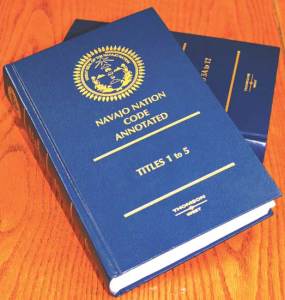 The parties in Morton v. Yonkers disputed whether a gas royalty interest was void under the laws of the Navajo Nation. No. 13-10926 (Nov. 19, 2014). One party submitted a letter from an attorney for the Navajo Nation Department of Justice, opining that the “purported overriding royalty interest is invalid under the applicable provisions of the Navajo Nation Code and is completely void.” The Fifth Circuit affirmed the lower courts’ conclusion that this letter was inadmissible hearsay, and did not qualify for an exemption under Fed. R. Evid. 803(8) or (15) [public records and statements about property interests]; or the general exception in Rule 807 [the former 803(24) and 804(b)(5), combined in 2011]: “Trustworthiness is the linchpin of these hearsay exceptions. We are persuaded by the district court’s thorough explanation that the letter is untrustworthy, in large part because it was drafted by Morton’s counsel and was prepared after Morton’s counsel provided the Navajo Nation official with only one side of the story.”
The parties in Morton v. Yonkers disputed whether a gas royalty interest was void under the laws of the Navajo Nation. No. 13-10926 (Nov. 19, 2014). One party submitted a letter from an attorney for the Navajo Nation Department of Justice, opining that the “purported overriding royalty interest is invalid under the applicable provisions of the Navajo Nation Code and is completely void.” The Fifth Circuit affirmed the lower courts’ conclusion that this letter was inadmissible hearsay, and did not qualify for an exemption under Fed. R. Evid. 803(8) or (15) [public records and statements about property interests]; or the general exception in Rule 807 [the former 803(24) and 804(b)(5), combined in 2011]: “Trustworthiness is the linchpin of these hearsay exceptions. We are persuaded by the district court’s thorough explanation that the letter is untrustworthy, in large part because it was drafted by Morton’s counsel and was prepared after Morton’s counsel provided the Navajo Nation official with only one side of the story.”
In Matassarin v. Grosvenor, the Fifth Circuit reversed a dismissal on personal jurisdiction grounds, reminding: “For an intentional tort claim, purposeful availment can be established through ‘a single phone call and the mailing of allegedly fraudulent information’ to the forum state if ‘the actual content of communications with a forum gives rise to’ the claim, as when the communications’ content was allegedly fraudulent.” (quoting Lewis v. Fresne, 252 F.3d 352, 355-56 (5th Cir. 2001)). Here, the plaintiff described communications, received in Texas by email and fax, that he alleged to contain misrepresentations about several features of a condominium unit.
After an unusual pretrial mandamus ruling by the Fifth Circuit in a high-profile False Claims Act case, and after the jury returned a plaintiff’s verdict for $175 million — which could be trebled upon final judgment — the defendants returned to the Fifth Circuit last week. They filed a renewed mandamus petition — drawing on the Court’s statements in the prior ruling — supported by amici filings from Texas A&M and another company. In re: Trinity Industries, Inc., No. 14-41297. The Court has requested a response, presently due on December 1. Further briefing, and the ultimate disposition of this mandamus petition, will be of interest both procedurally and substantively. (Disclaimer: I am not counsel of record in this proceeding, but do represent Trinity.)
In an intellectual property dispute with several pending motions, the district court held a telephone conference and said the following about the pending application for preliminary injunction:
“I can see that there at least would be a fact issue as to whether or not the contract’s violated, but that’s a different proposition from concluding that a preliminary injunction should be granted. There are a lot of factors to take into account to decide whether or not, ultimately there would — a breach of contract would be found to exist, such as, whether or not there’s a possibility for some relief besides injunctive relief, such as the recovery of damages. I haven’t found anything in the papers to indicate to me that the defendant couldn’t respond to a judgment in damages, if required to do so. I don’t — I don’t think a preliminary injunction is necessary or appropriate in this case, so I’m going to deny that request.”
Observing that the district court’s statmeent in damages “seems to relate to [Defendant’s] ability to respond to a judgment in damages, which does not relate to whether damages would be an adequate remedy,” the Fifth Circuit vacated and remanded for a lack of findings of fact and conclusions of law under Fed. R. Civ. P. 52(a). Software Development Technologies v. Trizetto Corp., No. 13-10829 (Nov. 5, 2014, unpublished).
Mabary withdrew money from an A TM machine. While she received an on-screen notice about a $2.00 fee, the machine did not have a posted external notice about the fee — a violation of the Electronic Funds Transfer Act at the time. After amendments to the EFTA that eliminated the Bank’s liability (if applicable), the district court dismissed Mabary’s claim and denied certification of a related class. Mabary v. Home Town Bank, N.A., No. 13-20211 (Nov. 5, 2014). The Fifth Circuit reversed, holding: (1) Mabary had Article III standing as a result of EFTA’s definition of injury, even though she did receive a form of notice; (2) a Rule 68 offer of proof to her – precertification – did not moot her claim; and (3) EFTA’s
TM machine. While she received an on-screen notice about a $2.00 fee, the machine did not have a posted external notice about the fee — a violation of the Electronic Funds Transfer Act at the time. After amendments to the EFTA that eliminated the Bank’s liability (if applicable), the district court dismissed Mabary’s claim and denied certification of a related class. Mabary v. Home Town Bank, N.A., No. 13-20211 (Nov. 5, 2014). The Fifth Circuit reversed, holding: (1) Mabary had Article III standing as a result of EFTA’s definition of injury, even though she did receive a form of notice; (2) a Rule 68 offer of proof to her – precertification – did not moot her claim; and (3) EFTA’s  amendments did not fall within the exception to the general presumption against statutory retroactivity. A dissent took issue with the standing holding as “respectfuly, silly stuff,” reasoning: “Mabary cannot show that she suffered a cognizable injury in fact, so she can sue only if the existence of her statutory cause of action sufficed to satisfy Article III.”
amendments did not fall within the exception to the general presumption against statutory retroactivity. A dissent took issue with the standing holding as “respectfuly, silly stuff,” reasoning: “Mabary cannot show that she suffered a cognizable injury in fact, so she can sue only if the existence of her statutory cause of action sufficed to satisfy Article III.”
 World Wrestling Entertainment sought ex parte seizure and temporary restraining orders, against unnamed defendants selling fake WWE merchandise at live events, under the Trademark Counterfeiting Act. The district judge denied relief, noting concerns about WWE’s ability to prove a likelihood of success against an unknown defendant. The Fifth Circuit (who reviewed the case because the district court certified the matter for interlocutory appeal) took a different view, noting: “WWE does not license third parties to sell merchandise at live events . . . The resulting confined universe of authorized sellers of WWE merchandise necessarily ‘identifies’ any non-WWE seller as a counterfeiter.” The opinion also observed that “the very nature of the ‘fly-by-night’
World Wrestling Entertainment sought ex parte seizure and temporary restraining orders, against unnamed defendants selling fake WWE merchandise at live events, under the Trademark Counterfeiting Act. The district judge denied relief, noting concerns about WWE’s ability to prove a likelihood of success against an unknown defendant. The Fifth Circuit (who reviewed the case because the district court certified the matter for interlocutory appeal) took a different view, noting: “WWE does not license third parties to sell merchandise at live events . . . The resulting confined universe of authorized sellers of WWE merchandise necessarily ‘identifies’ any non-WWE seller as a counterfeiter.” The opinion also observed that “the very nature of the ‘fly-by-night’  bootlegging industry” involves “counterfeiters who, upon detection and notice of suit, disappear without a trace and hide or destroy evidence, only to reappear later at the next WWE event down the road.” World Wrestling Entertainment, Inc. v. Unidentified Parties, No. 14-30489 (Nov. 4, 2014).
bootlegging industry” involves “counterfeiters who, upon detection and notice of suit, disappear without a trace and hide or destroy evidence, only to reappear later at the next WWE event down the road.” World Wrestling Entertainment, Inc. v. Unidentified Parties, No. 14-30489 (Nov. 4, 2014).
Menendez complained about his employer’s accounting practices to the SEC. The employer received a letter from the SEC asking for retention of certain documents. The employer then emailed Menendez’s colleagues, “instructing them to start retaining certain documents because ‘the SEC has opened an inquiry into the allegations of Mr. Menendez.'” Relations with his co-workers deteriorated and he ultimately resigned. In a detailed opinion, the Fifth Circuit affirmed a $30,000 damages award to Menendez on his claim for retaliation: “The undesirable consequences, from a whistleblower’s perspective, of the whistleblower’s supervisor telling the whistleblower’s colleagues that  he reported them to authorities for what are allegedly fraudulent practices, thus resulting in an official investigation, are obvious.” Halliburton, Inc. v. Administrative Review Board, U.S. Dep’t of Labor, No. 13-60323 (Nov. 12, 2014). The case has received considerable attention in employment and compliance circles; the Wall Street Journal‘s coverage is a short example.
he reported them to authorities for what are allegedly fraudulent practices, thus resulting in an official investigation, are obvious.” Halliburton, Inc. v. Administrative Review Board, U.S. Dep’t of Labor, No. 13-60323 (Nov. 12, 2014). The case has received considerable attention in employment and compliance circles; the Wall Street Journal‘s coverage is a short example.
 Consistent with a 2014 line of cases that reversed summary judgments on credibility issues, the Fifth Circuit reversed a summary judgment for the insurer in a bad faith case in Santacruz v. Allstate Texas Lloyds, No. 13-10786 (Nov. 13, 2014, unpublished). The insured alleged inadequate investigation into her claim of covered wind damage to her home, and the Court found fact issues on two matters.
Consistent with a 2014 line of cases that reversed summary judgments on credibility issues, the Fifth Circuit reversed a summary judgment for the insurer in a bad faith case in Santacruz v. Allstate Texas Lloyds, No. 13-10786 (Nov. 13, 2014, unpublished). The insured alleged inadequate investigation into her claim of covered wind damage to her home, and the Court found fact issues on two matters.
First, as to liability for bad faith, the Court noted: “The extent of Allstate’s inquiry into the claim consisted of its adjuster taking photographs of the damaged home. Significantly, Allstate did not attempt to talk to the contractor, who submitted an affidavit in this case describing what he observed concerning the roof and attributing the cause to wind damage. Nor is there any evidence showing that Allstate obtained weather reports or inquired with neighbors to see if they suffered similar damage, which would tend to show the damage was caused by wind rather than normal wear and tear.”
Second, as to damages, the Court said: “Santacruz claimed three types of damages: (1) the replacement of the roof, supported by an invoice from Pedraza providing that Santacruz paid him $3,900 to repair the roof; (2) a list of damaged personal and household items compiled by Santacruz and his family with an estimate of the value of all the belongings; and (3) repair work needed for the damaged interior of the home, supported by an estimate from a contractor listing the repairs to be done. Further, Pedraza submitted an affidavit testifying to the necessity of repairing the roof, and Santacruz submitted photographs showing the extensive damage to the home’s interior to support his claim that repairs were necessary.”
The Supreme Court recently reversed the Fifth Circuit on a Twombly issue — here is the pleading that “simply, concisely, and directly” stated a civil rights claim.
Among other theories, the borrowers in Shaver v. Barrett Daffin LLP alleged that a servicer “was unjustly enriched by failing to apply credit default swap payments and other payments to their loan balance.” No. 14-20107 (Nov. 5, 2014, unpublished). This argument — apparently addressed for the first time by the Fifth Circuit in this opinion — was rejected by the Court, which noted similar results in other jurisdictions.
In the 9-0 per curiam opinion of Johnson v. City of Shelby, the Supreme Court reversed the Fifth Circuit’s dismissal of a civil rights claim for failure to cite the applicable statute: “Our decisions in [Twombly and Iqbal] are not in point, for they concern the factual allegations a complaint must contain to survive a motion to dismiss. A plaintiff, they instruct, must plead facts sufficient to show that her claim has substantive plausibility. Petitioners’ complaint was not deficient in that regard. Petitioners stated simply, concisely, and directly events that, they alleged, entitled them to damages from the city. Having informed the city of the factual basis for their complaint, they were required to do no more to stave off threshold dismissal for want of an adequate statement of their claim.” No. 13-1318, 574 U.S. ___ (Nov. 10, 2014). Law360 has covered the case. Here is the actual pleading at issue.
Vaillancourt sued a mortgage servicer, the substitute trustee for a foreclosure, and her husband. The defendants removed, claiming fraudulent joinder of the in-state defendants, and the district court rejected that argument and remanded. In so doing, it declined to exercise supplemental jurisdiction over the accompanying state-law claims. Vaillancourt v. PNC Bank, N.A., No. 14-40303 (Nov. 5, 2014). A good exam question for a Federal Courts class resulted.
Because the district court based its remand order on its decision to decline supplemental jurisdiction, the Fifth Circuit (under its prior precedents) had appellate jurisdiction over that ruling, which necessarily included review of the predicate ruling about original jurisdiction. The Court noted that this result “is in some tension with 28 U.S.C. § 1447(d)’s command that ‘[a]n order remanding a case to the State court from which it was removed is not reviewable on appeal or otherwise,’ which the Supreme Court has construed to insulate from appellate review remands made on the basis of subject matter jurisdiction.”
The Court went on to reverse the ruling about fraudulent joinder, finding no cognizable claim pleaded against the trustee or the husband. Accordingly, because “‘the district court had diversity jurisdiction over the state law claims at the time of remand,’ and ‘the exercise of that jurisdiction is mandatory,'” it reversed the remand order.
This summer, in the panel opinion of Barron & Newburger, P.C. v. Texas Skyline, Ltd., No. 13-50075 (July 15, 2014), the Fifth Circuit affirmed the partial denial of a fee application based on its earlier opinion of In re: Pro-Snax Distributors, Inc., 157 F.3d 414 (5th Cir. 1998). That earlier opinion rejected a “reasonableness” test in the application of Bankruptcy Code § 330 — which would have asked “whether the services were objectively beneficial toward the completion of the case at the time they were performed” — in favor of a “hindsight” approach, asking whether the professionals’ work “resulted in an identifiable, tangible, and material benefit to the bankruptcy estate.” All three panel members joined a special concurrence asking the full Court to reconsider Pro-Snax en banc, and that invitation was recently accepted by a majority of active judges. Law360 provides some good additional commentary about the en banc vote.
“[Attorney] Grodner filed a motion requesting that certain inmates housed in the same correctional facility as [Grodner’s client] be allowed to provide testimony by video. The state did not oppose this form of testimony. Judge Jackson denied the order, however, requiring the incarcerated inmates to appear in court. As a result, Grodner filed five new motions requesting that the district court subpoena certain inmates to testify in court. Grodner styled those motions ‘unopposed,’ although she admittedly never contacted opposing counsel to confirm this. Even after opposing counsel filed a memorandum clarifying their opposition to the subpoenas, Grodner proceeded to file three more ‘unopposed’ motions requesting subpoenas.” In re Grodner, No. 14-98001 (Nov. 3, 2014, unpublished). The Fifth Circuit affirmed the district court’s sanction of a 60-day suspension from practice before the Middle District of Louisiana.
The Fifth Circuit has launched an attractive new website, with the customary features and some great pictures of the John Minor Wisdom courthouse and surrounding landmarks.
A mortgage servicer sued two individuals, alleging a conspiracy to defraud; the defendants argued that the servicer lacked standing because the notes in question were not properly conveyed. The case settled during trial, and as part of the settlement “the parties stipulated to several facts, including the fact that the Trusts were the owners and holders of the Loans at issue.” An agreed judgment followed. BAC Home Loans Servicing, L.P. v. Groves, No. 13-20764 (Nov. 3, 2014, unpublished).
The defendants then moved to vacate under FRCP 60(b), arguing that the plaintiff lacked standing. The district court denied the motion and the Fifth Circuit affirmed. It first noted that “the court will generally enforce valid appeal waivers, [but] a party cannot waive Article III standing by agreement . . .” Further noting that “parties may stipulate to facts but not legal conclusions,” the Court held: “That is exactly what happened here. [Defendants] conceded facts that establish [plainitiff’s] status; thus, the district court appropriately reached the resulting legal conclusion that [plaintiff] has standing.”
 EnCana Oil & Gas hired Seiber as a general contractor, who in turn hired Holt and TAUG as subcontractors. Seiber failed to make timely payments. EnCana interpleaded the funds at issue, and Seiber then filed for bankruptcy — before entry of a final order in the interpleader case. Holt Texas, Ltd. v. Zayler, No. 13-41153 (Nov. 3, 2014).
EnCana Oil & Gas hired Seiber as a general contractor, who in turn hired Holt and TAUG as subcontractors. Seiber failed to make timely payments. EnCana interpleaded the funds at issue, and Seiber then filed for bankruptcy — before entry of a final order in the interpleader case. Holt Texas, Ltd. v. Zayler, No. 13-41153 (Nov. 3, 2014).
Holt and TAUG alleged that they had materialmen’s liens under Texas law that removed the funds from Seiber’s bankruptcy estate; Seiber’s bankruptcy trustee argued that the filing of the interpleader action “automatically satisfied its liability to Seiber, thus transferring legal possession of the funds to Seiber and the bankruptcy estate.”
The Fifth Circuit disagreed with the trustee and reversed the bankruptcy court, reasoning: “If this were so, the interpleader would be the final judge of its own legal obligations relative to the dispute, by depositing a sum solely determined by it, washing its hands of any relationship to the dispute and walking away whistling Yankee Doodle.”
Uretek USA developed a process for pavement repair, which it sublicensed to Uretek Mexico under an agreement signed in 2003. In 2010, the principals of the two companies met to try and resolve disputes about that agreement and other business dealings. During the meeting, the parties initialed an amended sublicense agreement, and Uretek USA accepted four checks from Uretek Mexico with these amounts and memo lines:
- $10 “As per First Amendment to Sublicense Agreement”
- $76,950.90 for “Full Payment on Technical Assistance”
- $225,471.05 for “Full Payment on Royalties”
- $10 for “Full Release [Uretek USA] to [Uretek Mexico]
Uretek USA later sued to dispute the enforceability of the amendment. The jury found that Uretek USA ratified it by conduct, principally by cashing these checks. While Uretek USA made several arguments against that finding on appeal, the number of checks and specificity of the notations on them was sufficient to sustain the verdict. Uretek (USA), Inc. v. Ureteknologia de Mexico S.A. de C.V., No. 13-20430 (Oct. 29, 2014, unpublished).
In a reversal on rehearing from the original panel opinion, based on answers to certified questions in another matter in the meantime, the Court held in Crownover v. Mid-Continent Casualty Co.: “In sum, [Gilbert Texas Construction, L.P. v. Underwriters at Lloyd’s London, 327 S.W.3d 118, 124, 127 (Tex. 2010) and Ewing Constr. Co. v. Amerisure Ins. Co., 420 S.W.3d 30, 37 (Tex. 2014)], maintain that for a contractual-liability exclusion to apply, the insurer must prove that a contractually-assumed duty effected an expansion of liability beyond that supplied by general law. The arbitrator in this case determined that Arrow violated an express duty to repair work that did not conform to the requirements of its construction contract with the Crownovers. Mid-Continent has failed to proffer evidence creating a dispute of fact as to whether the arbitrator’s award was based on liability greater than that dictated by general law. Therefore, the contractual-liability exclusion from coverage does not apply.” No. 11-10166 (Oct. 29, 2014, on petition for rehearing).
The concept of “proportionality” in discovery began its modern ascendance in Bell Atlantic Corp v. Twombly, with observations such as these: “Probably, then, it is only by taking care to require allegations that reach the level suggesting conspiracy that we can hope to avoid the potentially enormous expense of discovery in cases with no ‘reasonably founded hope that the [discovery] process will reveal relevant evidence’ to support a § 1 claim.” 127 S.Ct. 1955, 1968 (2007).
Over time, the “proportionality” concept has moved from the discovery rules to pervade the entire system of federal procedure. Consider Advisory Committee Note to revised Federal Rule of Civil Procedure 1 (approved by the Judicial Conference in September 2014 and now before the Supreme Court): “Effective advocacy is consistent with — and indeed depends upon — cooperative and proportional use of procedure.”
While arising under state law rather than the Federal Rules, the recent Texas Supreme Court of In re National Lloyds Ins. Co. illustrates the concept of proportionality in a highly practical context. The plaintiff in an insurance bad faith case sought evidence about similar claim denials, arguing “that the trial court’s discovery order was (1) limited in time, because it compelled only production of evidence relating to the two storms at issue, and (2) limited by location, because it involved only properties in Cedar Hill.” ___ S.W.3d ___, No. 13-0761 (Tex. Oct. 31, 2014) (per curiam).
That Court disagreed: “Scouring claim files in hopes of finding similarly situated claimants whose claims were evaluated differently from [plaintiff’s] is at best an ‘impermissible fishing expedition.’ . . . [Plaintiff] is correct that discovery must be reasonably limited in time and geographic scope. But such limits in and of themselves do not render the underlying information discoverable.” It concluded that there were still too many likely differences between this set of claims and the plaintiff’s case to justify the discovery request.
Four times in the last two months, 60 0Camp has won recognition from Texas Bar Today for a “Top 10 Post of the Week” among Texas law blogs, “based on subject matter, writing style, headline, and imagery.” The posts were The Regulation, My Friend, is Blowing in the Wind (Sept. 16), My Five Tips for Good Legal Writing (Oct. 9), Arbitration Here, There, or Nowhere (Oct. 20), and How to Notice Mississippi (Oct. 28). Thanks for your support!
0Camp has won recognition from Texas Bar Today for a “Top 10 Post of the Week” among Texas law blogs, “based on subject matter, writing style, headline, and imagery.” The posts were The Regulation, My Friend, is Blowing in the Wind (Sept. 16), My Five Tips for Good Legal Writing (Oct. 9), Arbitration Here, There, or Nowhere (Oct. 20), and How to Notice Mississippi (Oct. 28). Thanks for your support!
But all these years that I’ve been here, ain’t nobody got past Red – except Article III.
October 29, 2014“Those who prefer to hunt deer without the use of dogs (still-deer hunters) complain that
dog-deer hunting is disruptive and unsportsmanlike. Adjacent landowners complain that dog-deer hunting leads to shooting near houses and from roads, fights between dog-deer hunters and landowners, roads being blocked by dog-deer hunters, dogs running across private property, and trespass. Dog-deer hunters defend the practice based on its history as a traditional method of hunting in Louisiana dating back to the colonial period.” The plaintiffs in Louisiana Sportsmen Alliance, LLC v. Vilsack sought to enjoin the U.S. Forest Service from banning dog-deer hunting in the Kisatchie National Forest. The Forest Service won on the merits in the district court, and for the first time on appeal, argued that the plaintiff organization lacked standing. Expressing vexation: “The district court was ill-served by the Forest Service in this regard, because the Forest Service never argued that the Alliance lacked organizational standing until this appeal,” the Court nevertheless considered the issue because “Article III standing is a jurisdictional requirement that cannot be waived,” and then dismissed the appeal because the plaintiff association had not shown its standing to bring suit. No.13-31260 (Oct. 28, 2014, unpublished).
 River Oaks, an apartment management business originally based entirely in Louisiana, expanded into Mississippi in 2011. It had a workers comp policy with Bridgefield Insurance, which provided “Other States” coverage for Mississippi if River Oaks notified Bridgefield of activity there. After an employee’s injury in Mississippi, Bridgefield denied coverage for failure to comply with this notice requirement. Bridgefield Casualty Ins. Co. v. River Oaks Management, Inc., No. 13-31077 (Oct. 27, 2014, unpublished).
River Oaks, an apartment management business originally based entirely in Louisiana, expanded into Mississippi in 2011. It had a workers comp policy with Bridgefield Insurance, which provided “Other States” coverage for Mississippi if River Oaks notified Bridgefield of activity there. After an employee’s injury in Mississippi, Bridgefield denied coverage for failure to comply with this notice requirement. Bridgefield Casualty Ins. Co. v. River Oaks Management, Inc., No. 13-31077 (Oct. 27, 2014, unpublished).
Bridgefiled won the coverage dispute in district court, and the Fifth Circuit agreed that: (1) the provision was not ambiguous; (2) the provision was a condition precedent to coverage, so Bridgefield did not have to show prejudice from the lack of notice; and (3) for similar reasons, the provision did not implicate the Louisiana “anti-technical” statutes.
But, the Court found a material fact issue and reversed — agreeing with the district court that there was a factual dispute about whether an audit by Bridgefield put it on notice of the Mississippi activity (and accepted payments after that time), the Court disagreed with the district court’s conclusion that the dispute was not material: “An insurer may waive a provision that falls short of granting it the right to cancel the entire policy, such as the exclusion-of-coverage provision at issue here.”
Earlier this year, the Texas Supreme Court answered certified questions from the Fifth Circuit about the treatment of home equity loans under the Texas Constitution; that opinion summarizes: “To avoid foreclosure, homeowners and lenders often try to restructure underwater home mortgage loans that are in default by capitalizing past-due amounts as principal, lowering the interest rate, and reducing monthly payments, thereby easing the burden on the homeowners. But home equity loans are subject to the requirements of Article XVI, Section 50 of the Texas Constitution. The United States Court of Appeals for the Fifth Circuit has asked whether those requirements apply to such loan restructuring. We answer that as long as the original note is not satisfied and replaced, and there is no additional extension of credit, as we define it, the restructuring is valid and need not meet the constitutional requirements for a new loan.” Sims v. Carrington Mortgage Services, LLC, No. 13-0638 (Tex. 2014). Following that Court’s recent denial of rehearing, the Fifth Circuit has now formally accepted the answer and ruled accordingly.
Because the Fifth Circuit rarely acts en banc in business-related cases, votes by the full court on civil matters deserve careful review as examples of the judges’ broader philosophical leanings. As detailed in another post, I place particular emphasis on (1) the vote to deny en banc review in the Daubert case of Huss v. Gayden (balancing judicial authority with the jury’s); (2) the vote to grant mandamus relief in the venue dispute of In re Volkswagen (balancing appellate authority with that of the trial court); and (3) the 7-8 vote to deny en banc review in the venue case of In re Radmax (same).
The issue in the recent en banc case of McBride v. Estis Well Service, LLC, No. 12-30714 (revised Oct. 24, 2014), while facially addressing an important but technical issue of admiralty law, offers insight about the judges’ views of another topic — the authority of the judiciary as opposed to Congress’s. The introduction to Judge Higginson’s dissent succinctly captures that point: “The question presented by this case is whether seamen may recover punitive damages for their employer’s willful and wanton breach of the general maritime law duty to provide a seaworthy vessel. Because the Supreme Court has said that they can, and Congress has not said they can’t, I would answer in the affirmative, and REVERSE.”
Nine judges (spread across three opinions) saw the answer differently. The conclusion to the majority opinion begins: “In the words of the Supreme Court, ‘Congress has struck the balance for us.'” (citing Mobil Oil Corp. v. Higginbotham, 436 U.S. 618, 623 (1978)). Two concurrences make similar observations. Notably, all of the active judges appointed by a Democratic president at the time of en banc submission are in dissent.
The State Bar of Texas Litigation Section recently published my article, based on content from this blog, about how the Fifth Circuit has applied Twombly and Iqbal in recent opinions.
A cousin to U.S. Bank, N.A. v. Verizon Communications, Inc., the case of Murphy v. Verizon Communications, Inc. presented an ERISA-based challenge to the spinoff of Idearc by Verizon. No. 13-11117 (Oct. 15, 2014, unpublished). The appellate issue was the plaintiffs’ right under ERISA’s “catch-all provision” to request, as “other instruments under which the [ERISA] plan is established or operated,” various documents about the plan’s investment guidelines. The Fifth Circuit held: “We agree with the majority of the circuits which have construed [the] catch-all provision narrowly so as to apply only to formal legal documents that govern a plan.”
Dawna Casey’s family sued Toyota, alleging that the airbag in a 2010 Highlander did not remain inflated for six seconds and caused her death in an accident. The district court granted judgment as a matter of law and the Fifth Circuit affirmed. Casey v. Toyota Motor Engineering & Manufacturing, No. 13-11119 (Oct. 20, 2014).
As to the claim of manufacturing defect, the Court observed: “Casey . . . established only that the air bag did not remain inflated for six seconds,” and relied on alleged violations of Toyota’s performance standards to prove a defect (rather than a technical explanation of the bag’s performance). The Court rejected those allegations under Texas law and precedent from other jurisdictions: “Each piece of evidence submitted by Casey on this point is result-oriented, not manufacturing-oriented, and provides no detail on how the airbag is constructed.”
As to the claim of design defect, Casey relied primarily on a patent application for an allegedly superior design, which the Court rejected as not having been tested under comparable conditions, and as lacking a real-world track record as to feasibility, risk-benefit, and other such matters. Law360 has written a summary of the opinion.
 Sharpe v. Ameriplan re-engages the recurring problem of an arbitration agreement governed by multiple documents. No. 13-10922 (Oct. 16, 2014). Specifically:
Sharpe v. Ameriplan re-engages the recurring problem of an arbitration agreement governed by multiple documents. No. 13-10922 (Oct. 16, 2014). Specifically:
— A Policy Manual contained an arbitration clause;
— A Broker Agreement, which incorporated the Policy Manual. This Agreement said that the Agreement could not be changed except by written agreement, but acknowledged that the Manual could be changed at will; and
–3 of 4 plaintiffs had Sales Director Agreements that contained a lengthy dispute resolution provision, which began with a commitment to nonbinding mediation and concluded with detailed language that “claims, controversies, or disputes” be “submitted . . . to the jurisdiction” of courts in Dallas (a fourth had a much shorter provision that was simply a Dallas forum selection provision for “any action” on the agreement).
The Court held that that shorter provision did not trump the arbitration clause, but that the longer one did: “The language in Guarisco’s agreement demonstates that AmeriPlan knew how to draft a narrow forum selection clause, and its decision in later Sales Director Agreements to add far more extensive language establishing a full dispute resolution process must be given effect as creating something beyond that.” The Court distinguished its recent opinion of Klein v. Nabors Drilling USA, L.P., 710 F.3d 234 (5th Cir. 2013), in which it read language about nonbinding mediation as not conflicting with “an exclusive procedural mechanism for the final resolution of all Disputes falling within its terms.” (See also Lizalde v. Vista Quality Markets, No. 13-50015 (March 25, 2014) (enforcing an arbitration agreement in the face of a benefit plan with a broad termination right, noting that both agreements’ termination provisions were limited to “this Agreement” and “this Plan” respectively and thus “clearly demarcate their respective applications”)).
The plaintiff in Law v. Ocwen Loan Servicing, L.L.C., a mortgage servicing case, asked the Fifth Circuit for leave to amend if it affirmed the dismissal of the complaint under Rule 12. No. 14-20019 (Oct. 16, 2014, unpublished). The Court affirmed on the merits and as to the denial of leave to amend, noting these basic and important principles on the point:
* “A party who neglects to ask the district court for leave to amend cannot expect to receive such dispensation from the court of appeals.”
* A district court’s sua sponte discussion of amendment is not a request, and neither is this language in a response: “[T]he only relief possibly available to [the defendant] at this stage of the case is that [the plaintiff] replead.”
* While new factual allegations in response to a summary judgment motion can be construed as a request for leave to amend, that does not hold for a response to a Rule 12 motion.